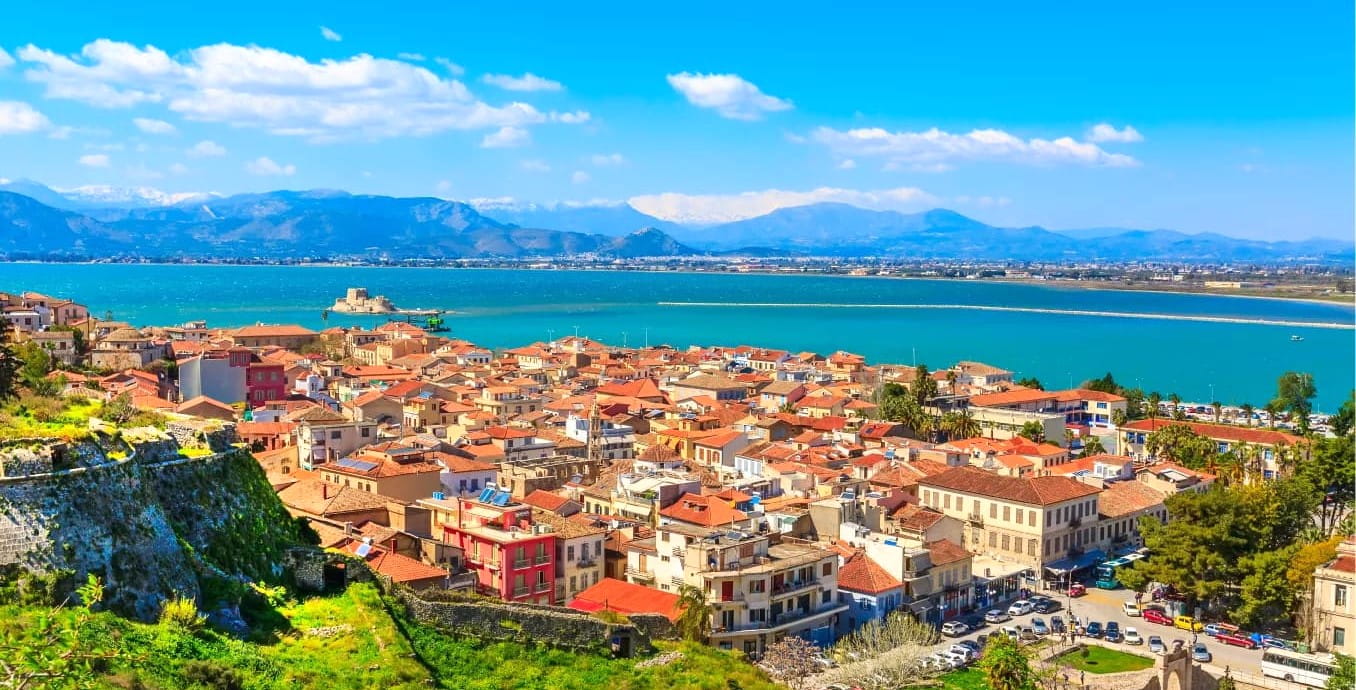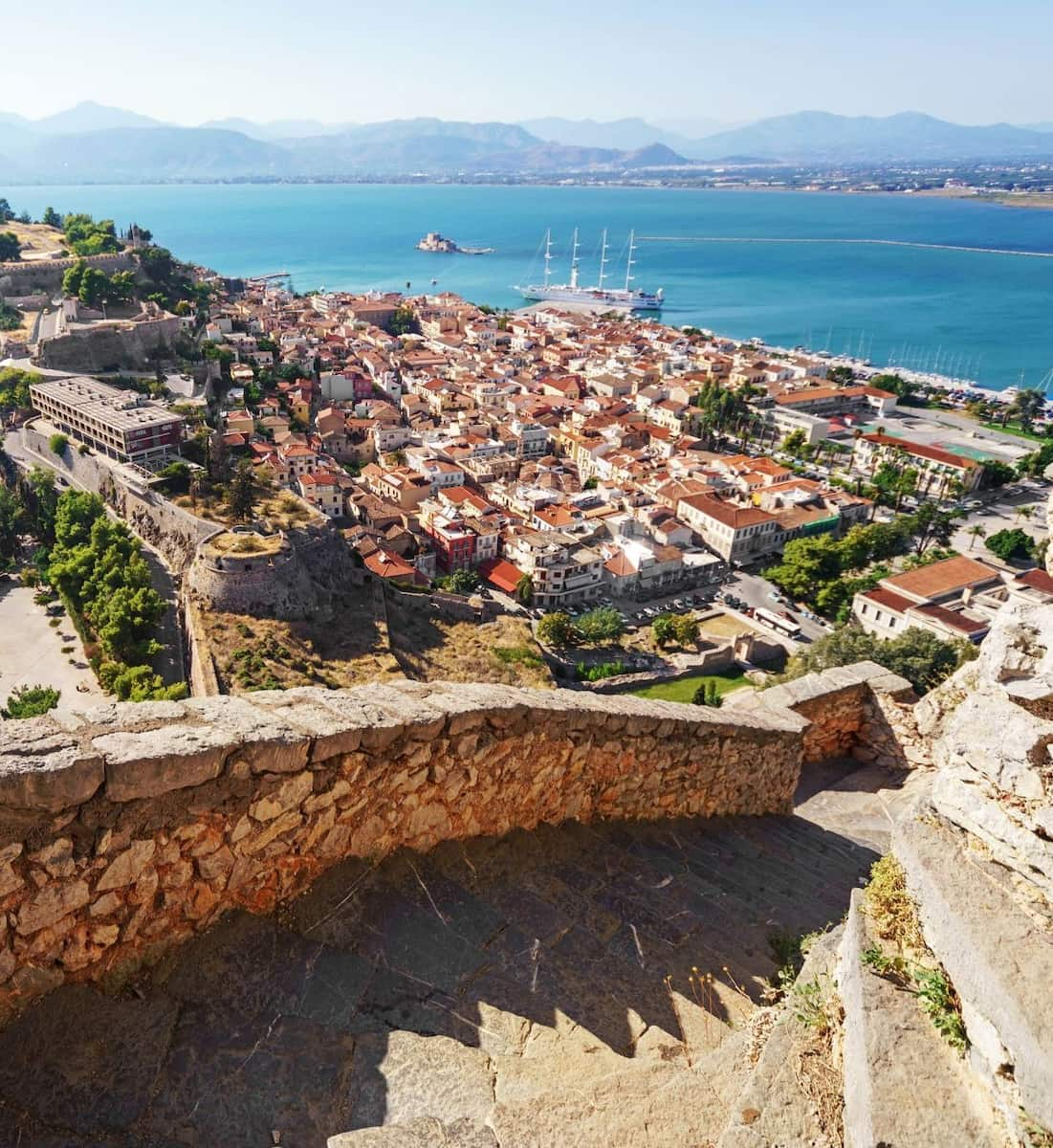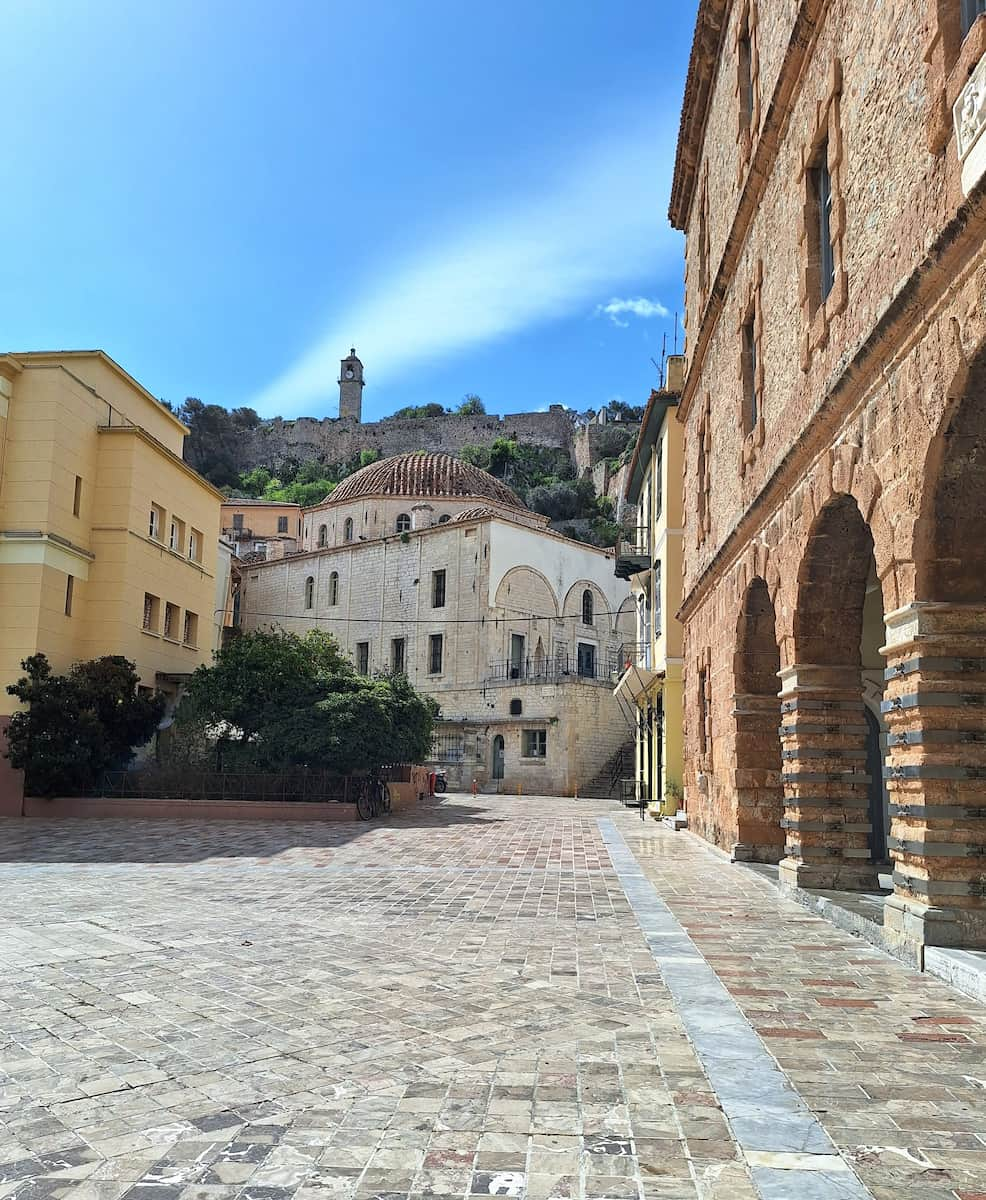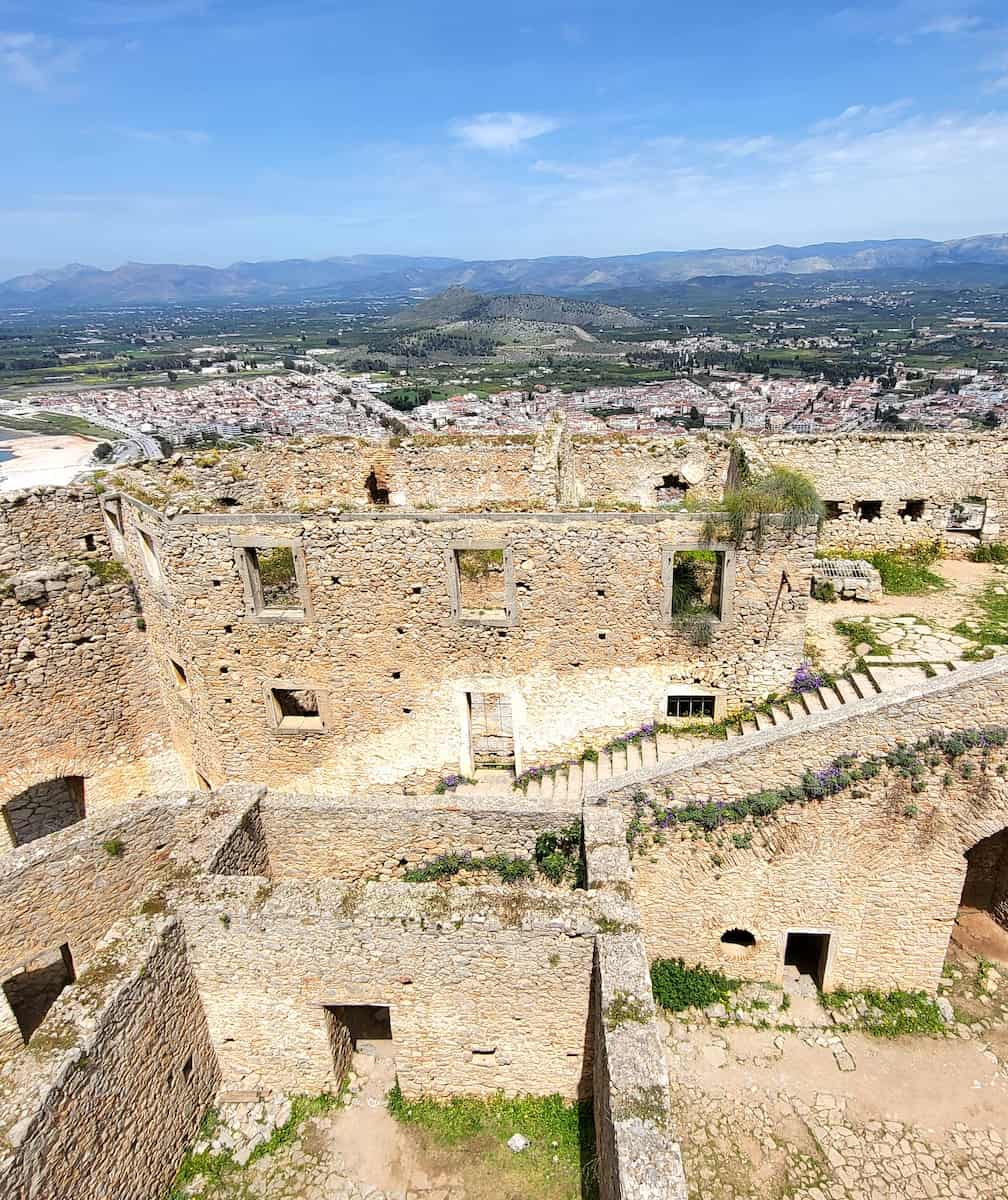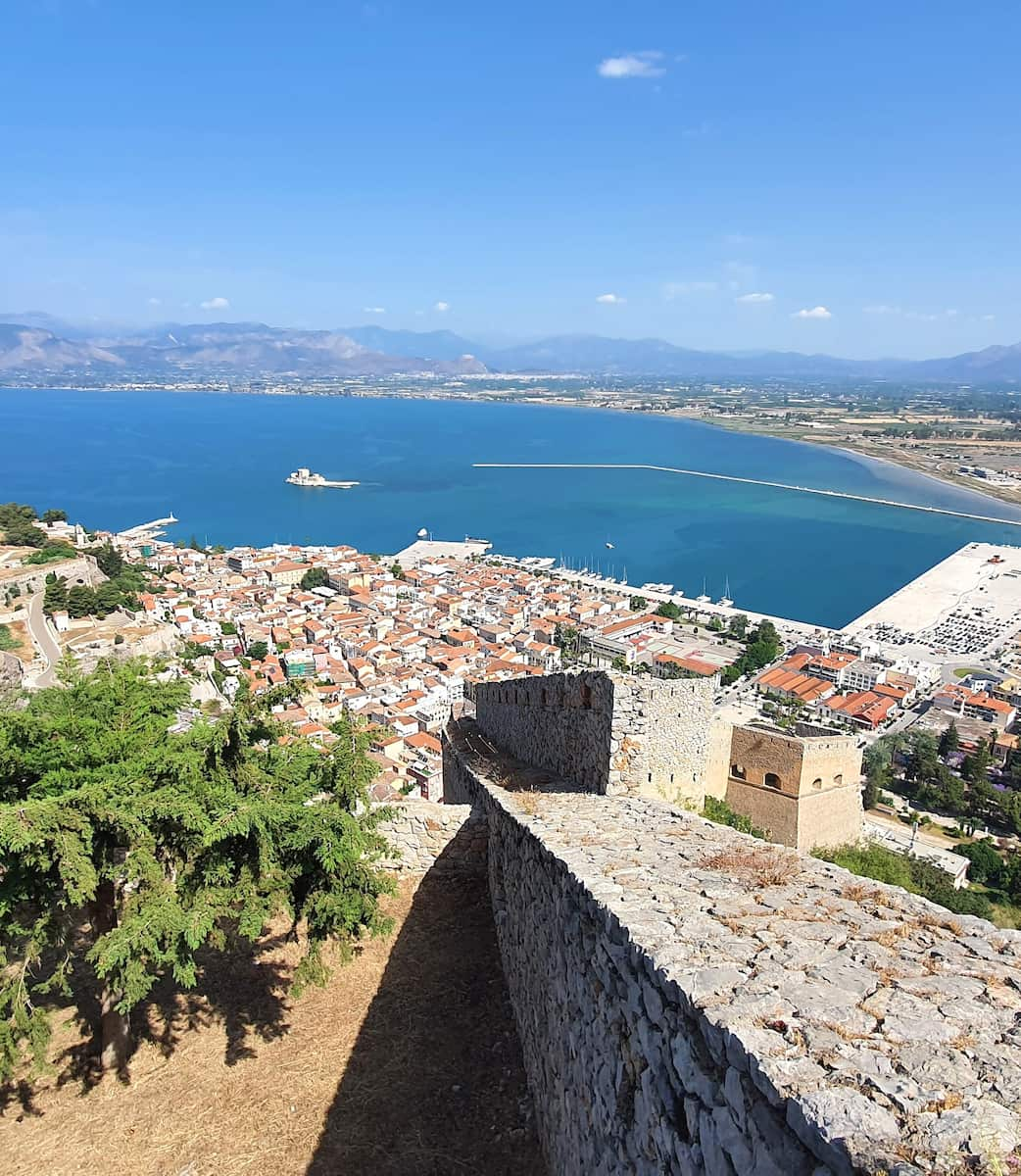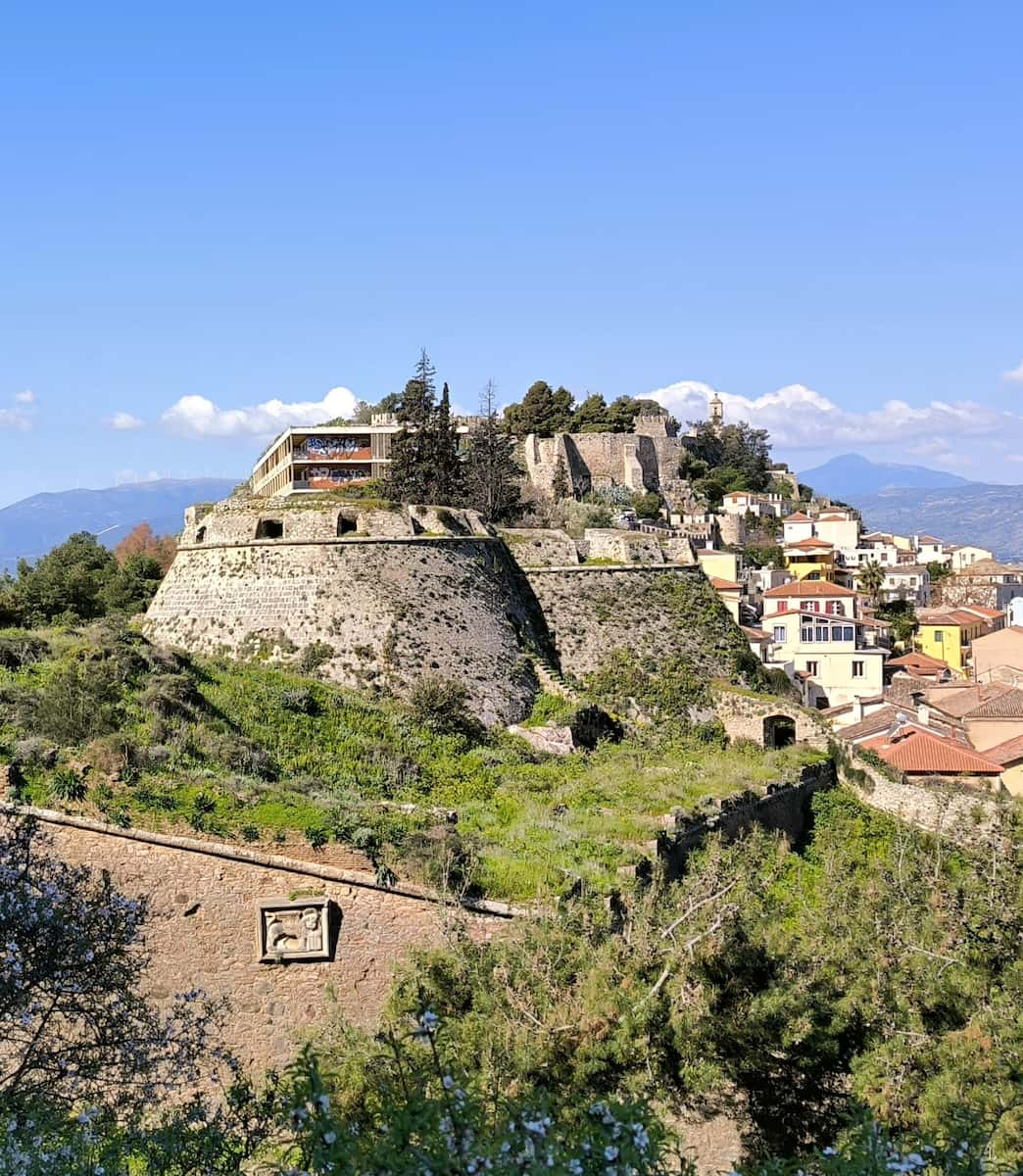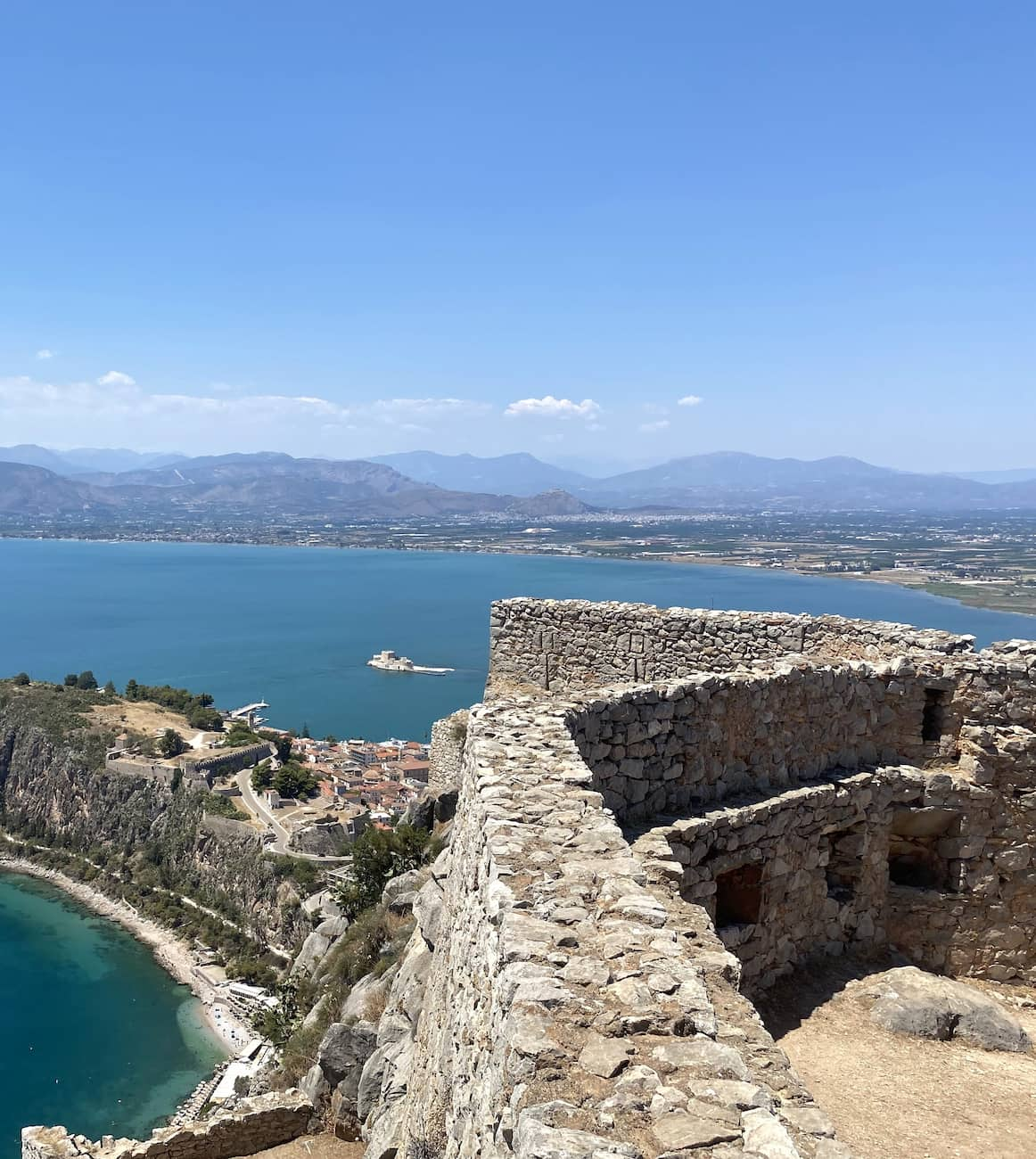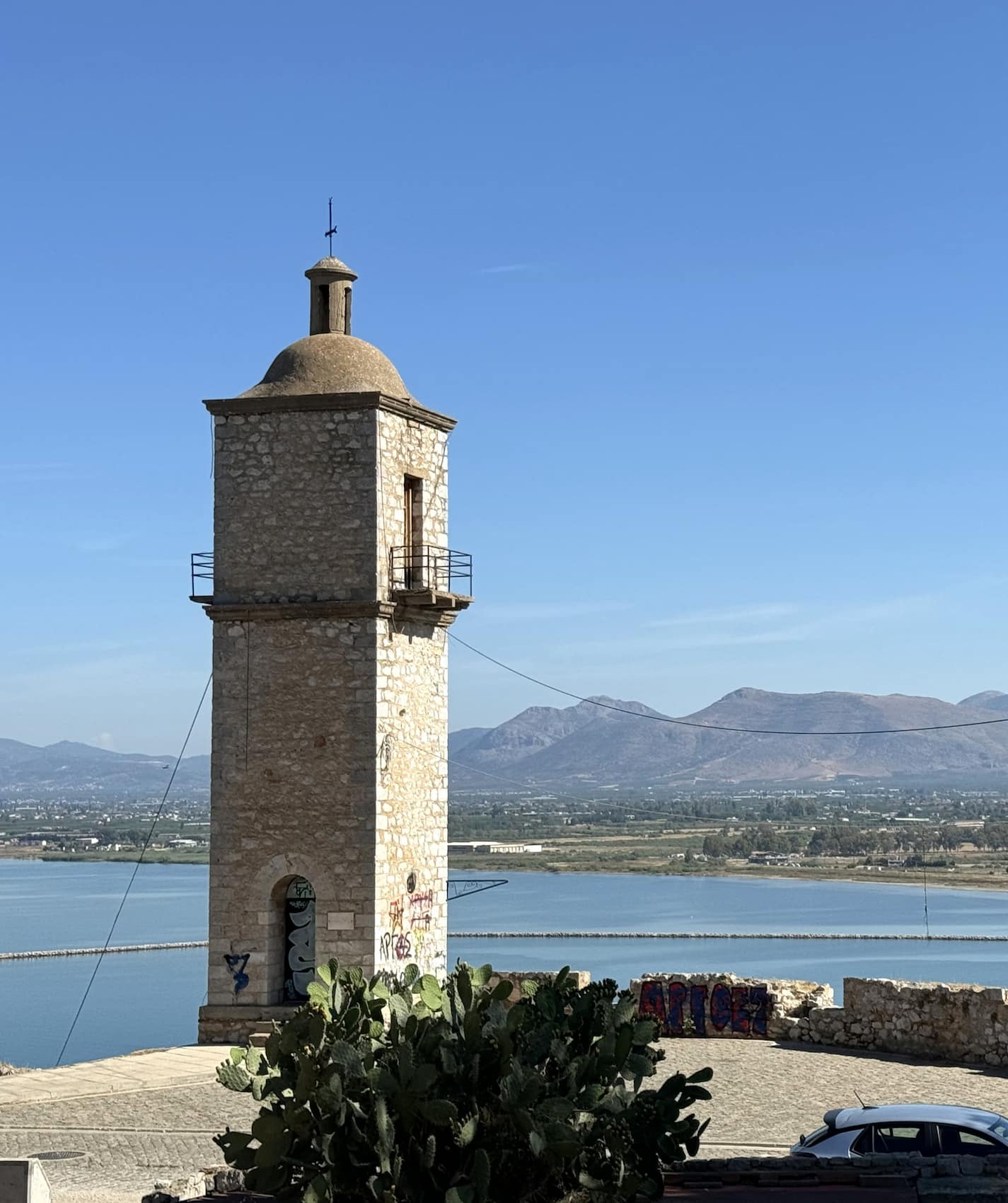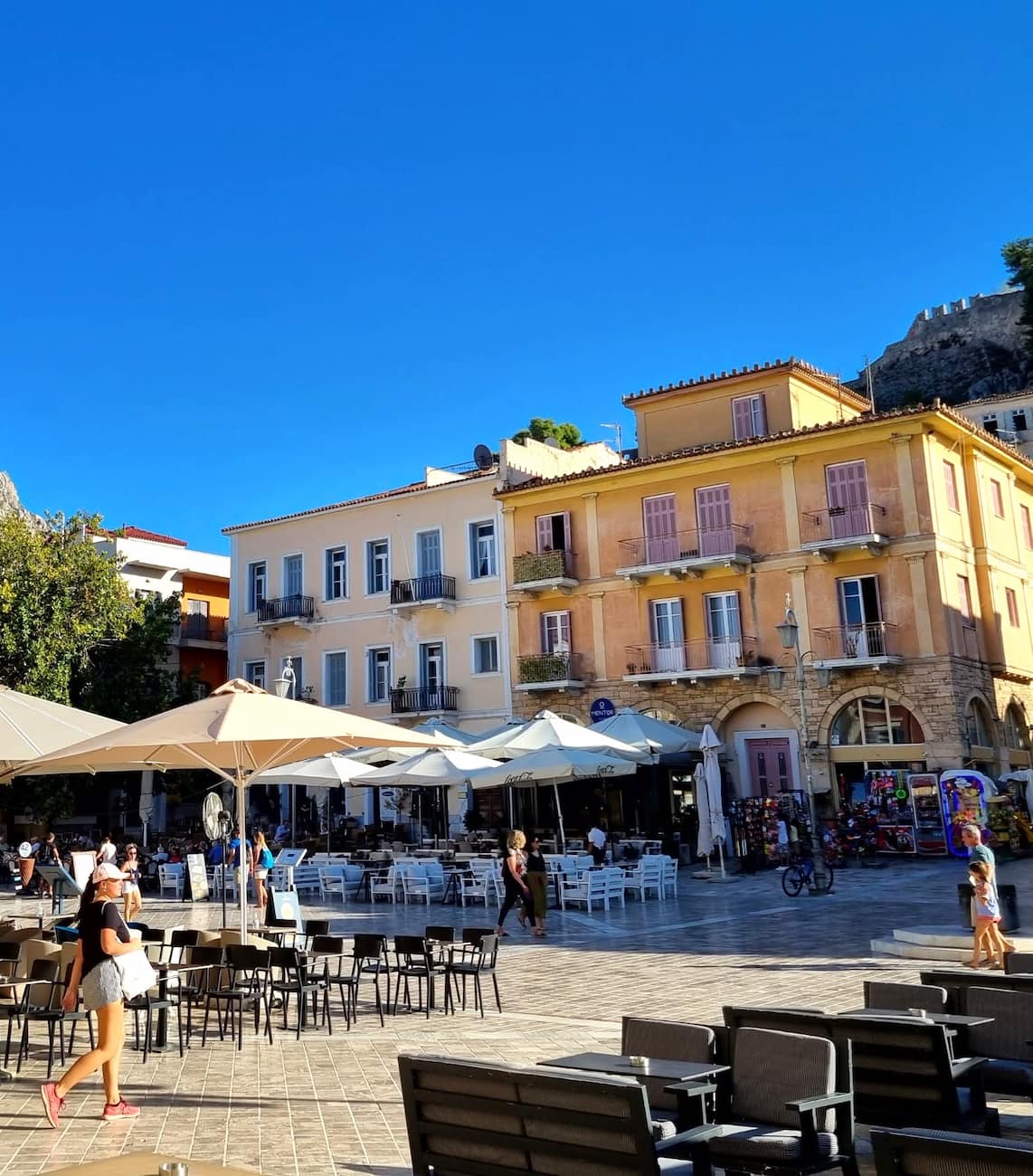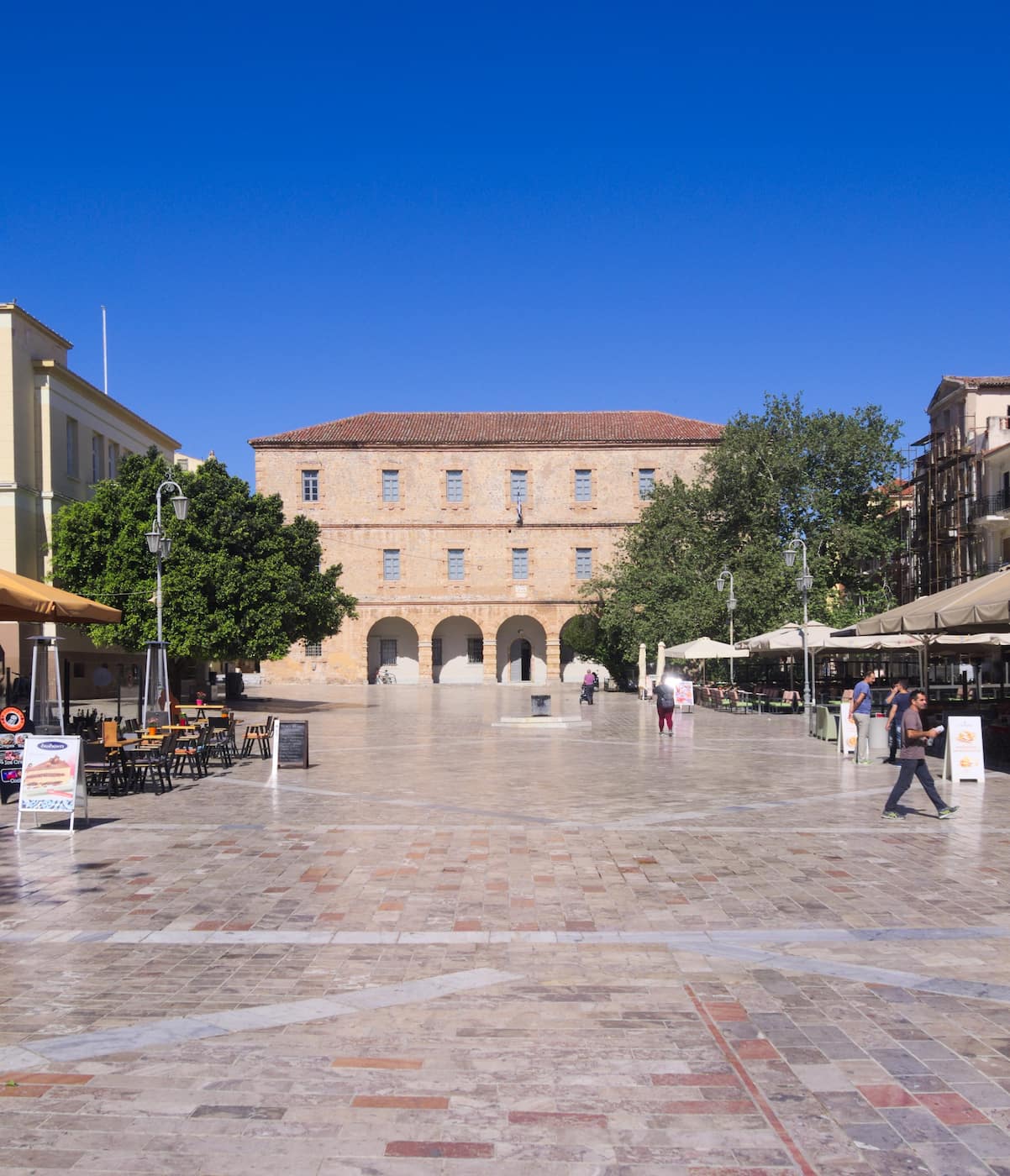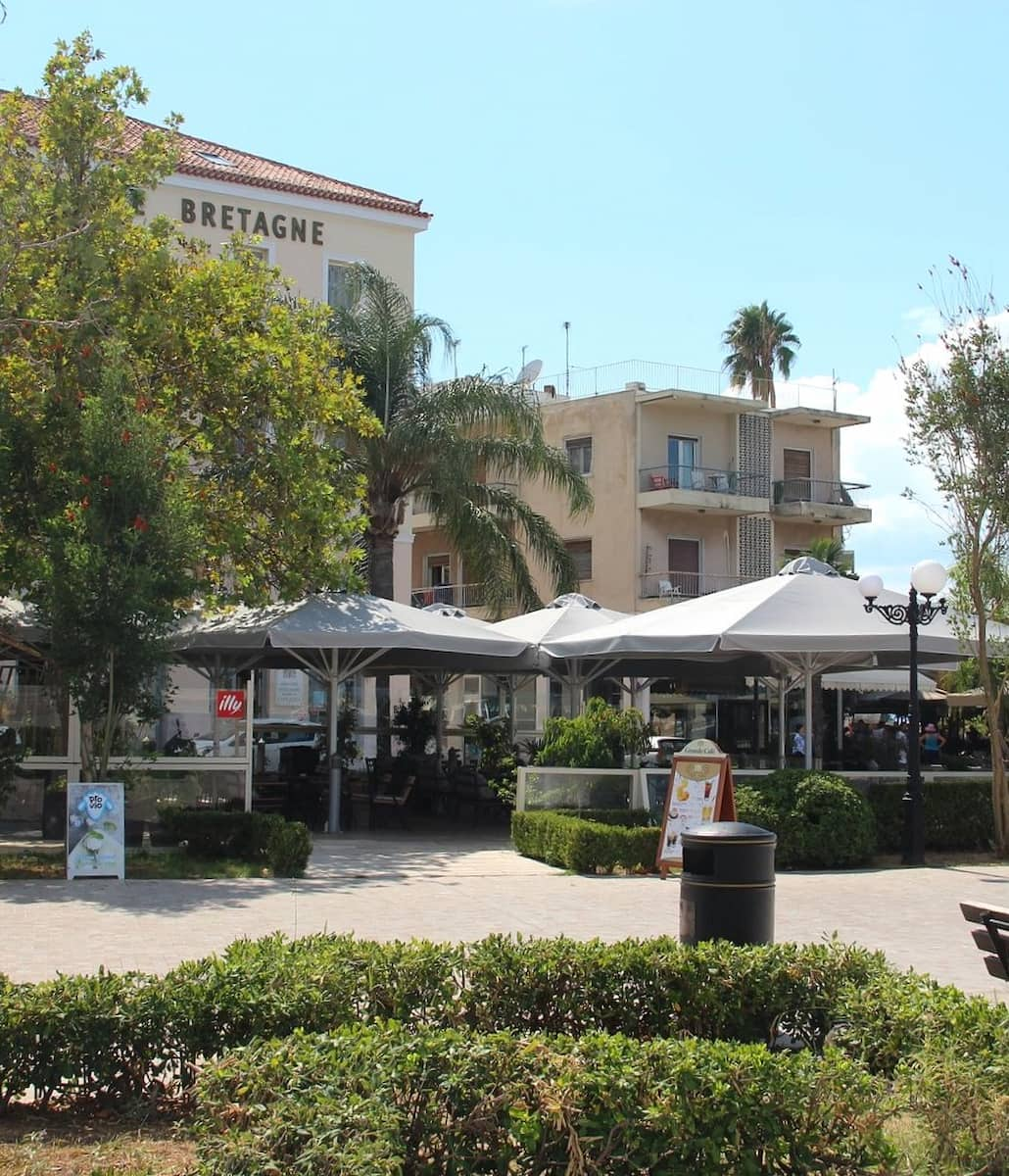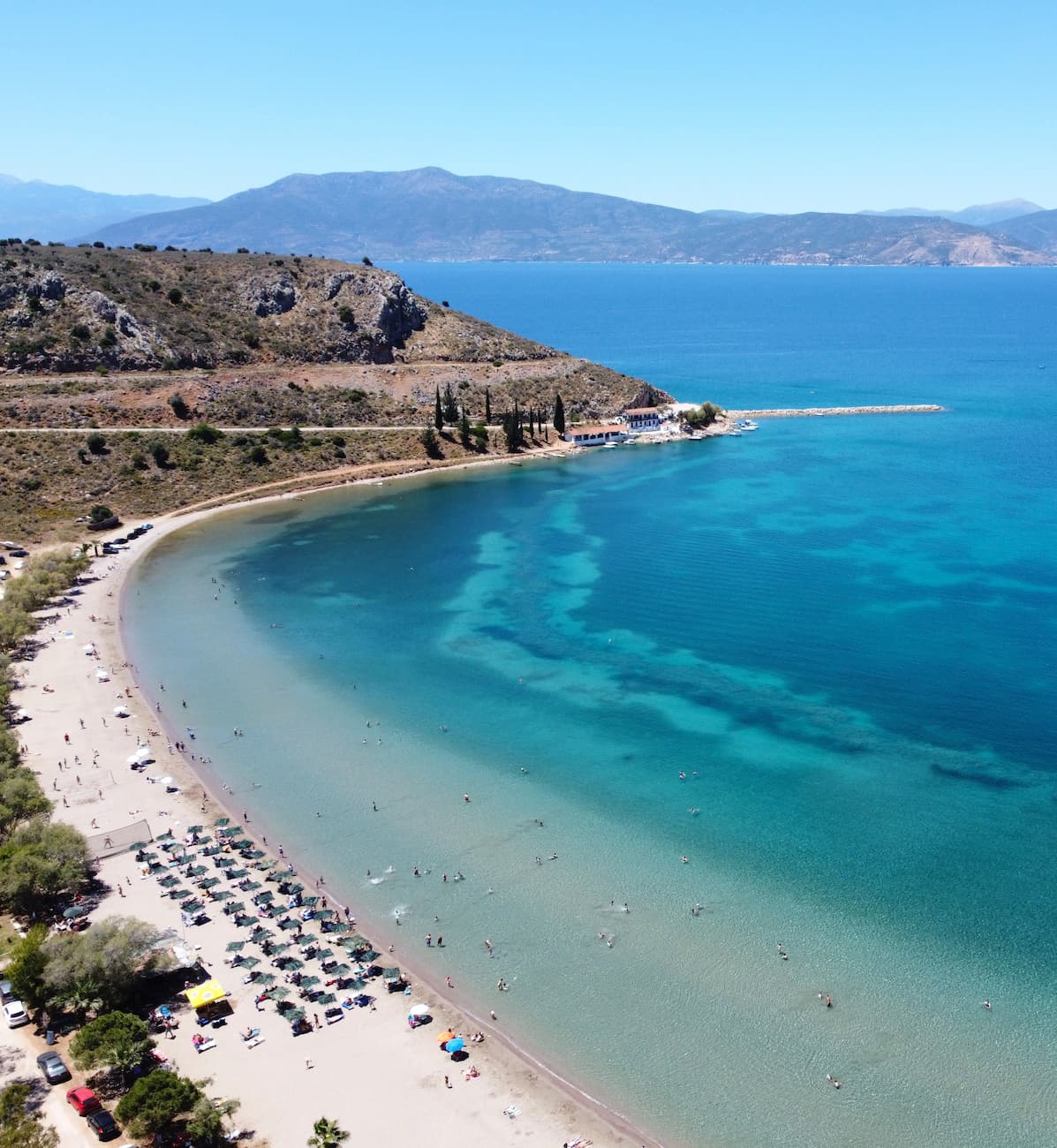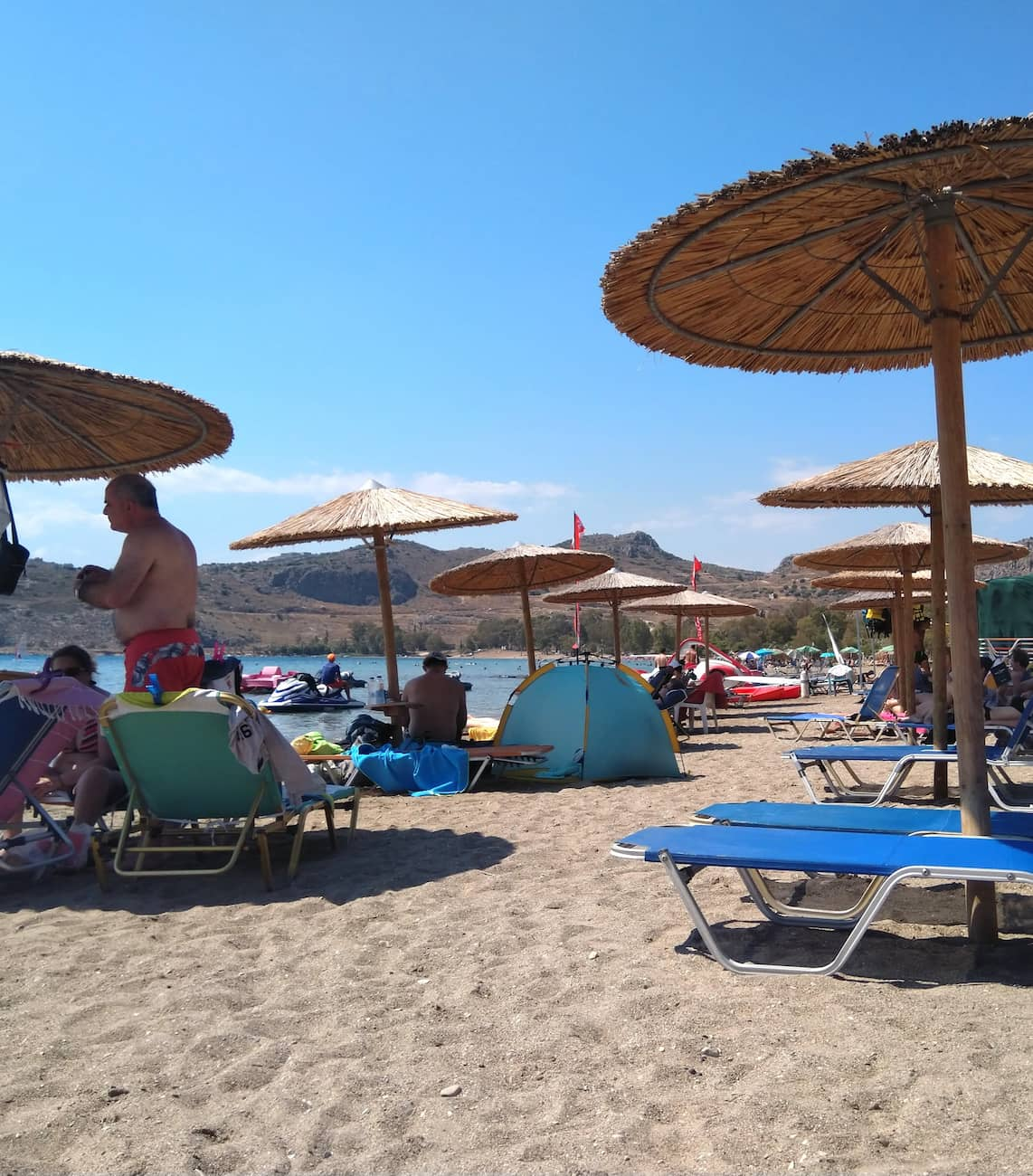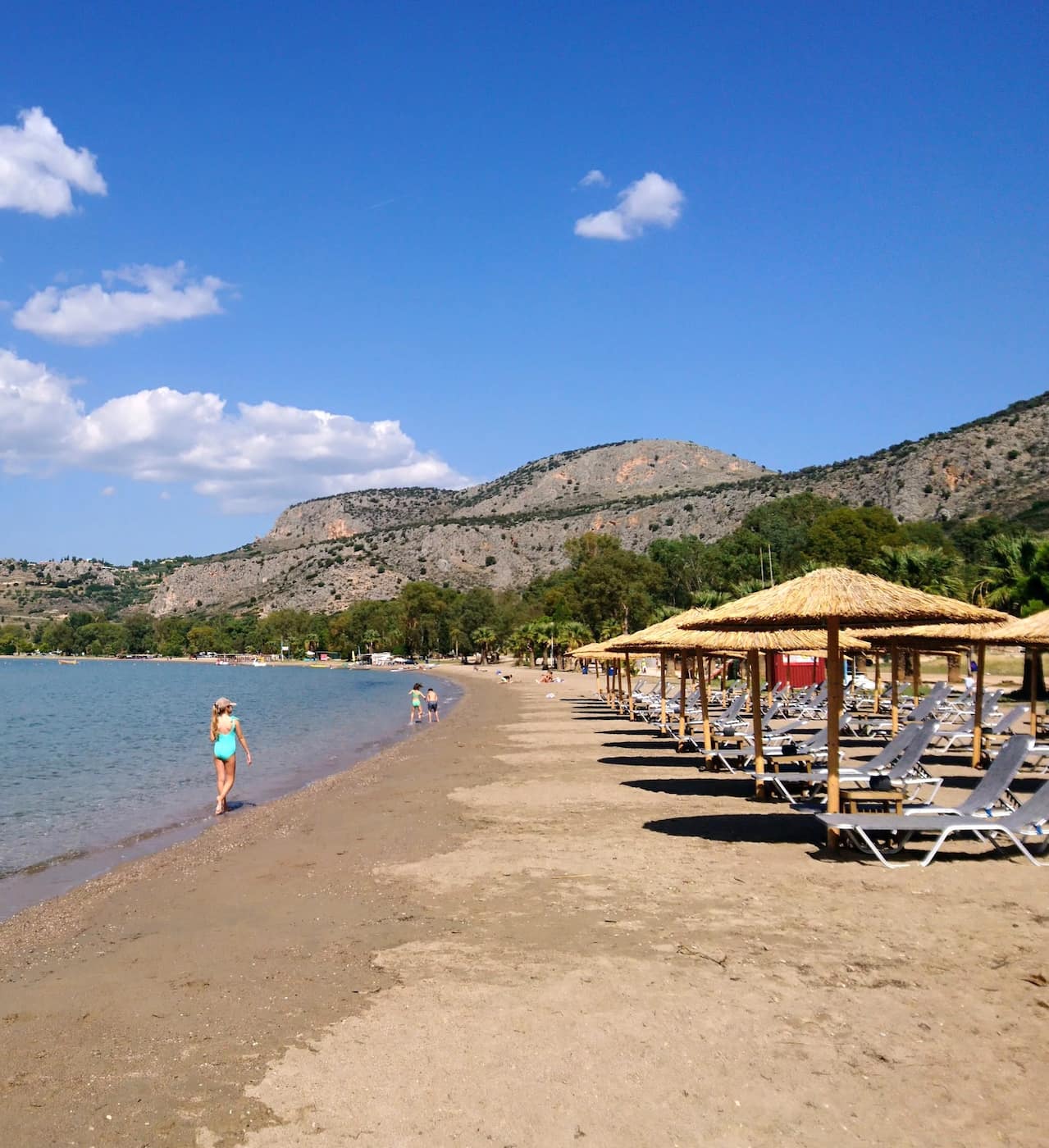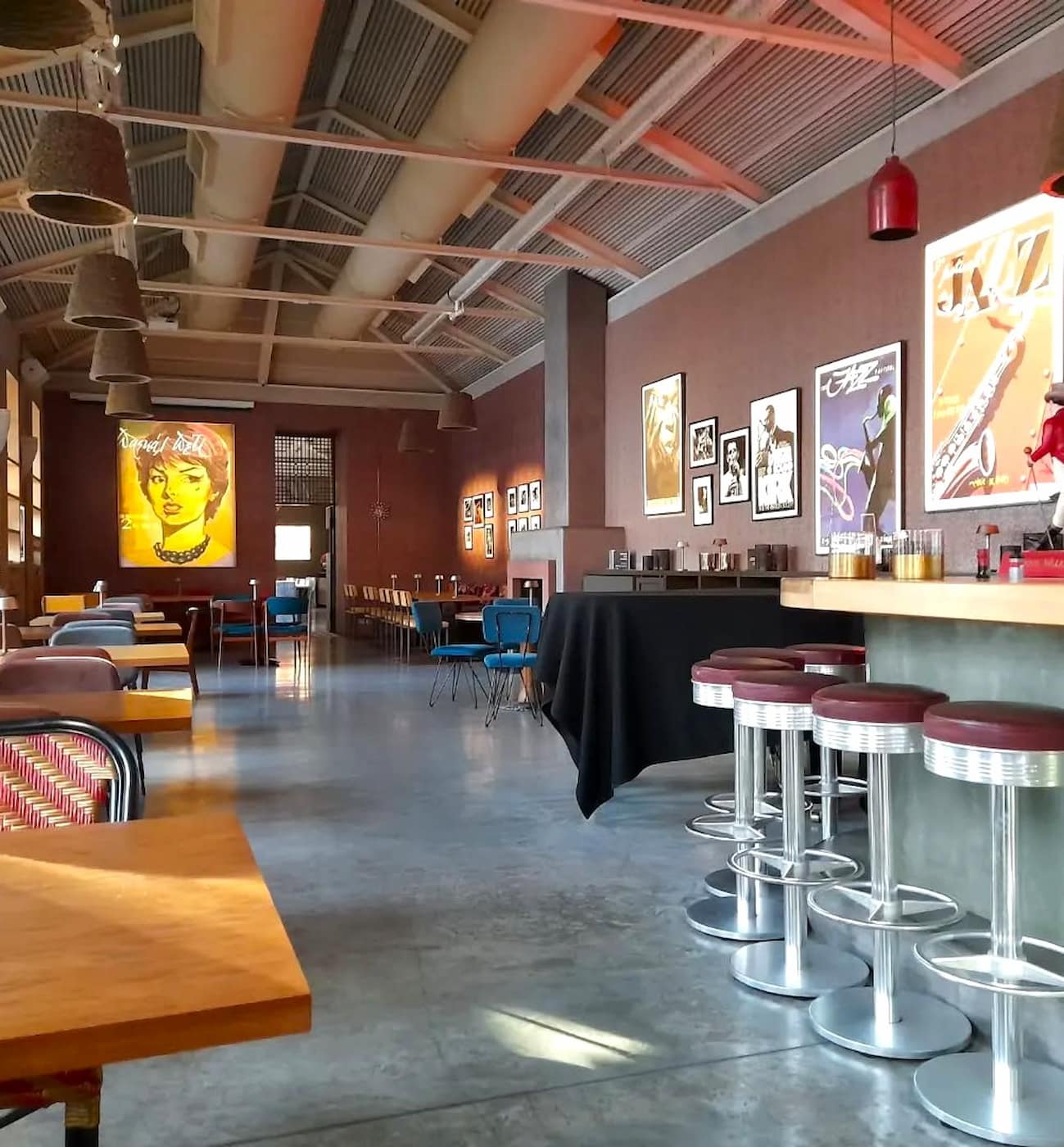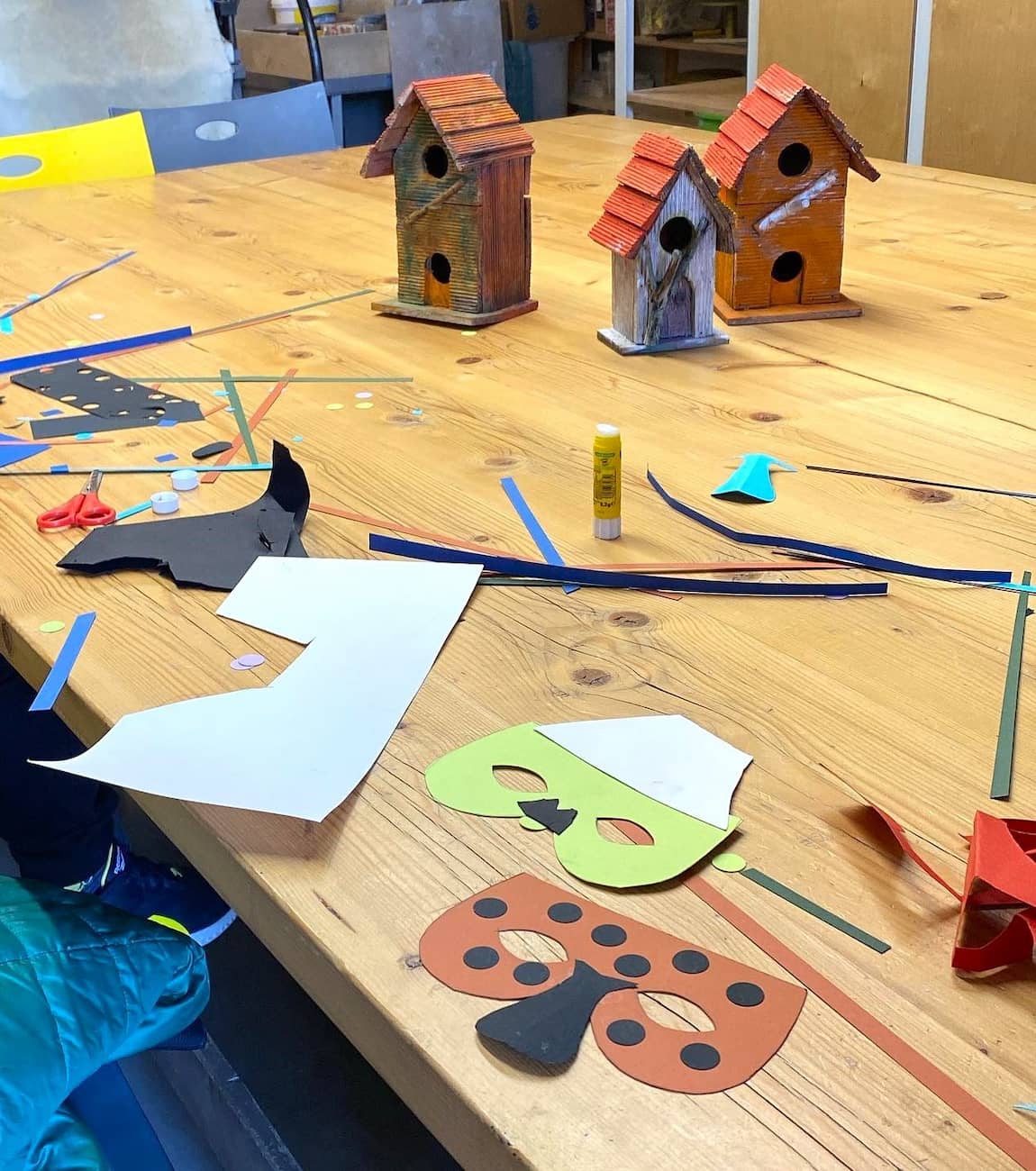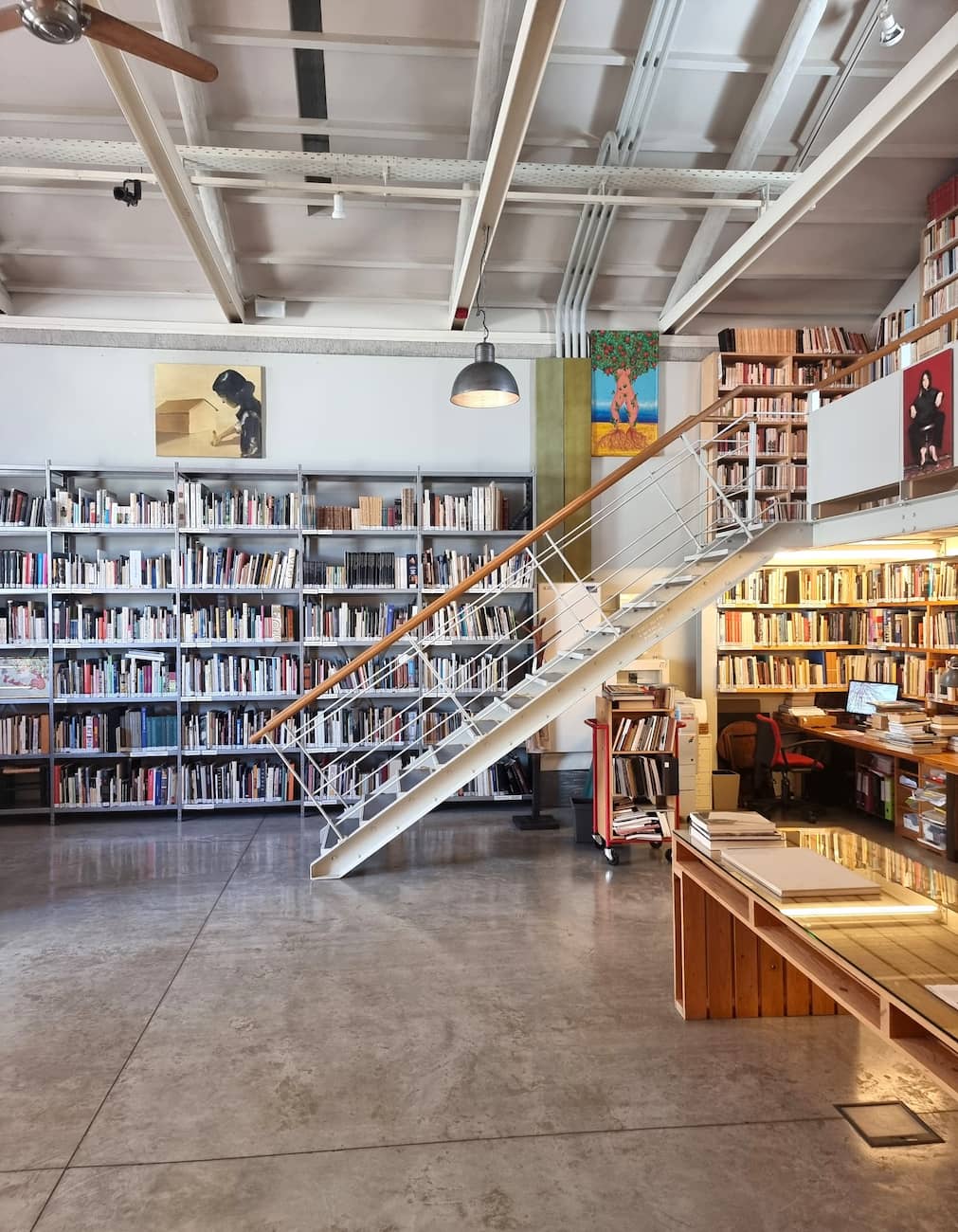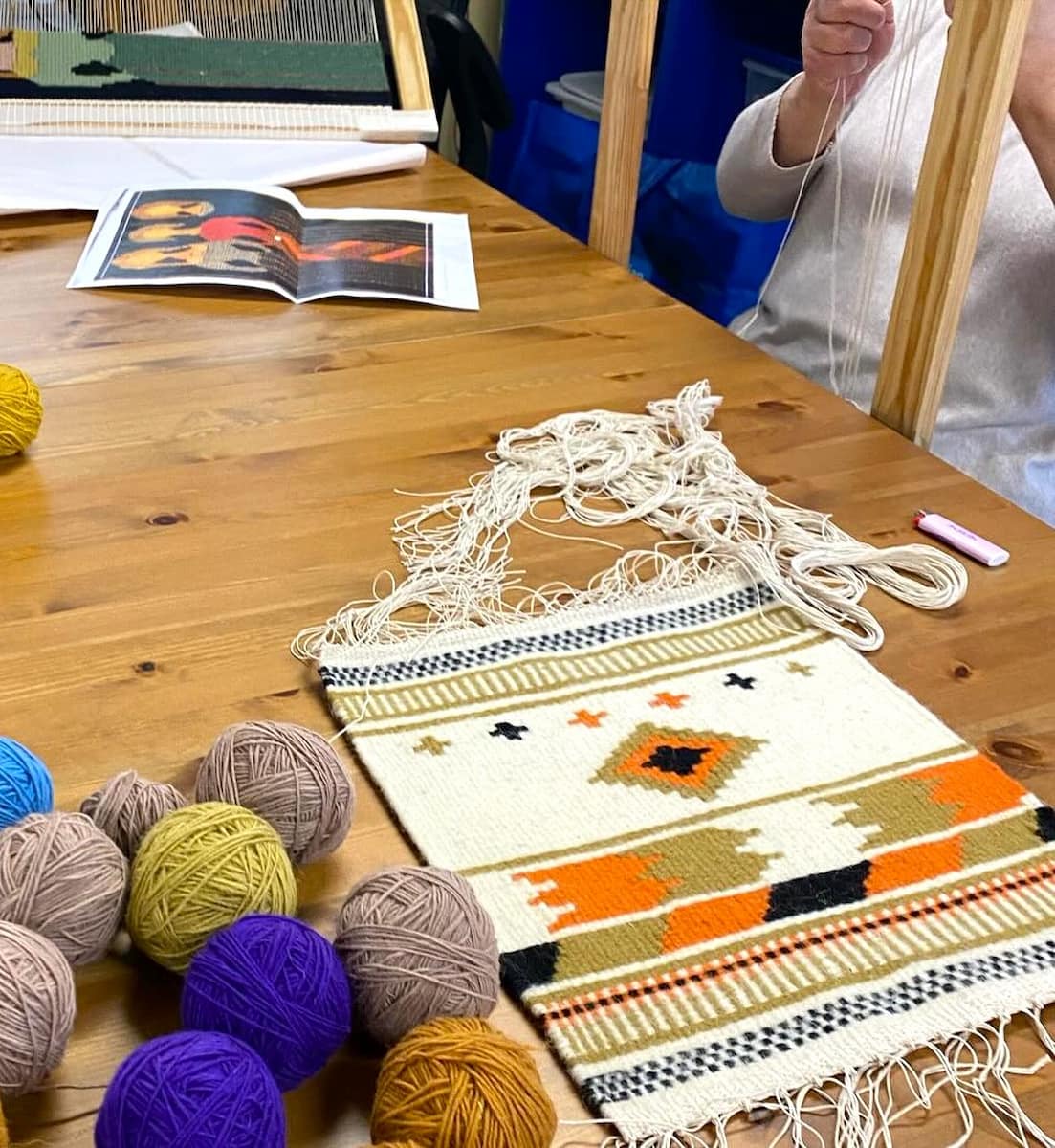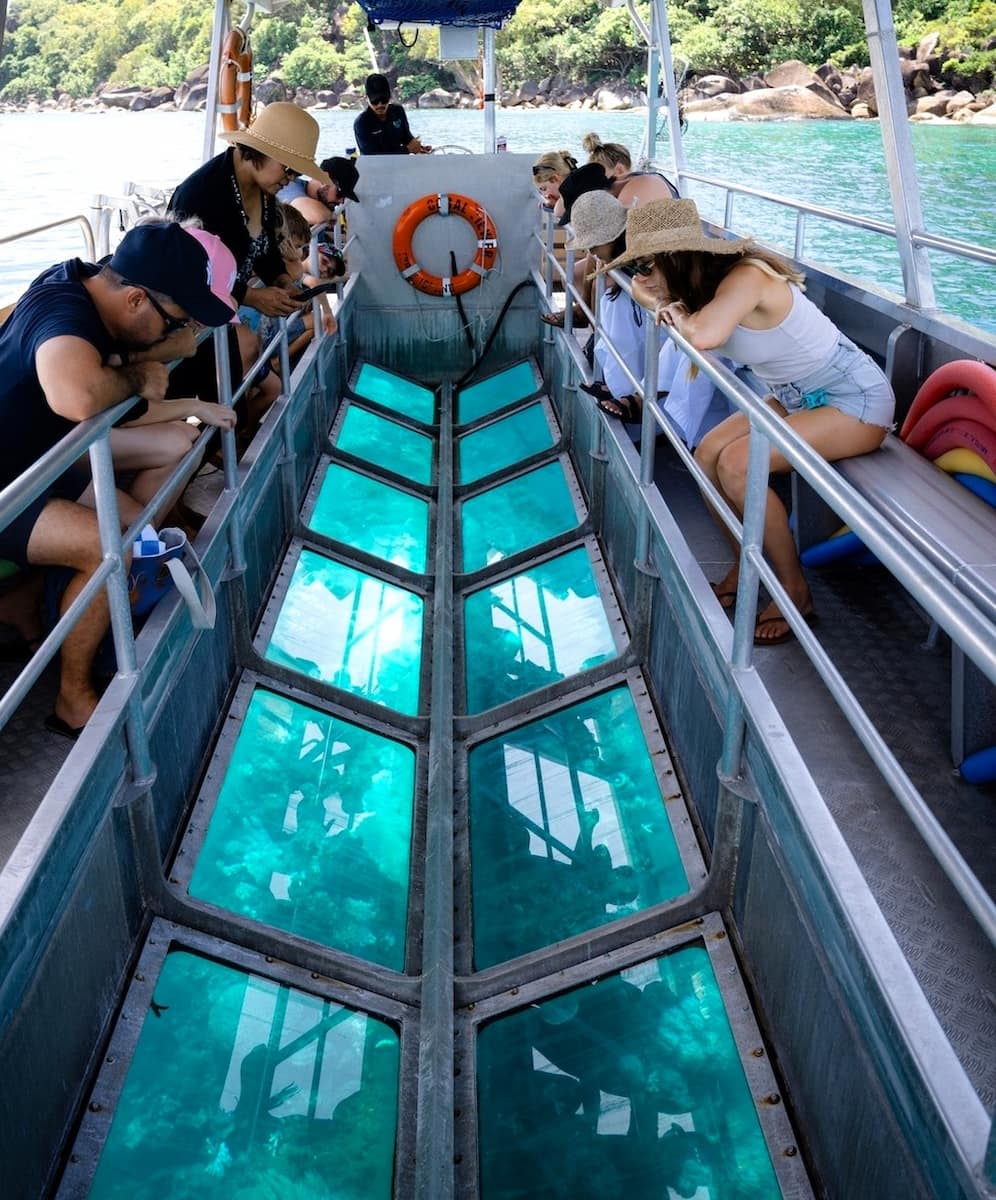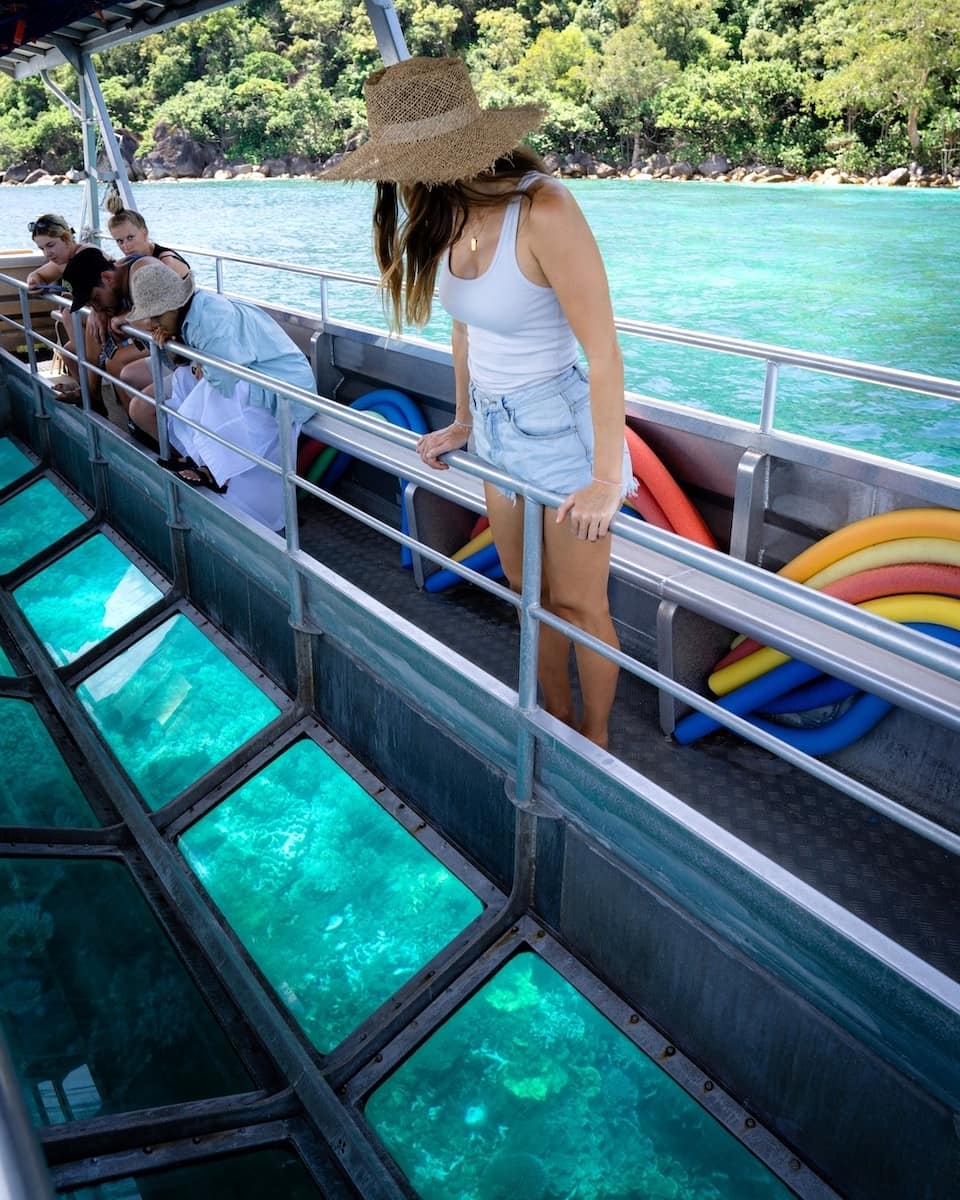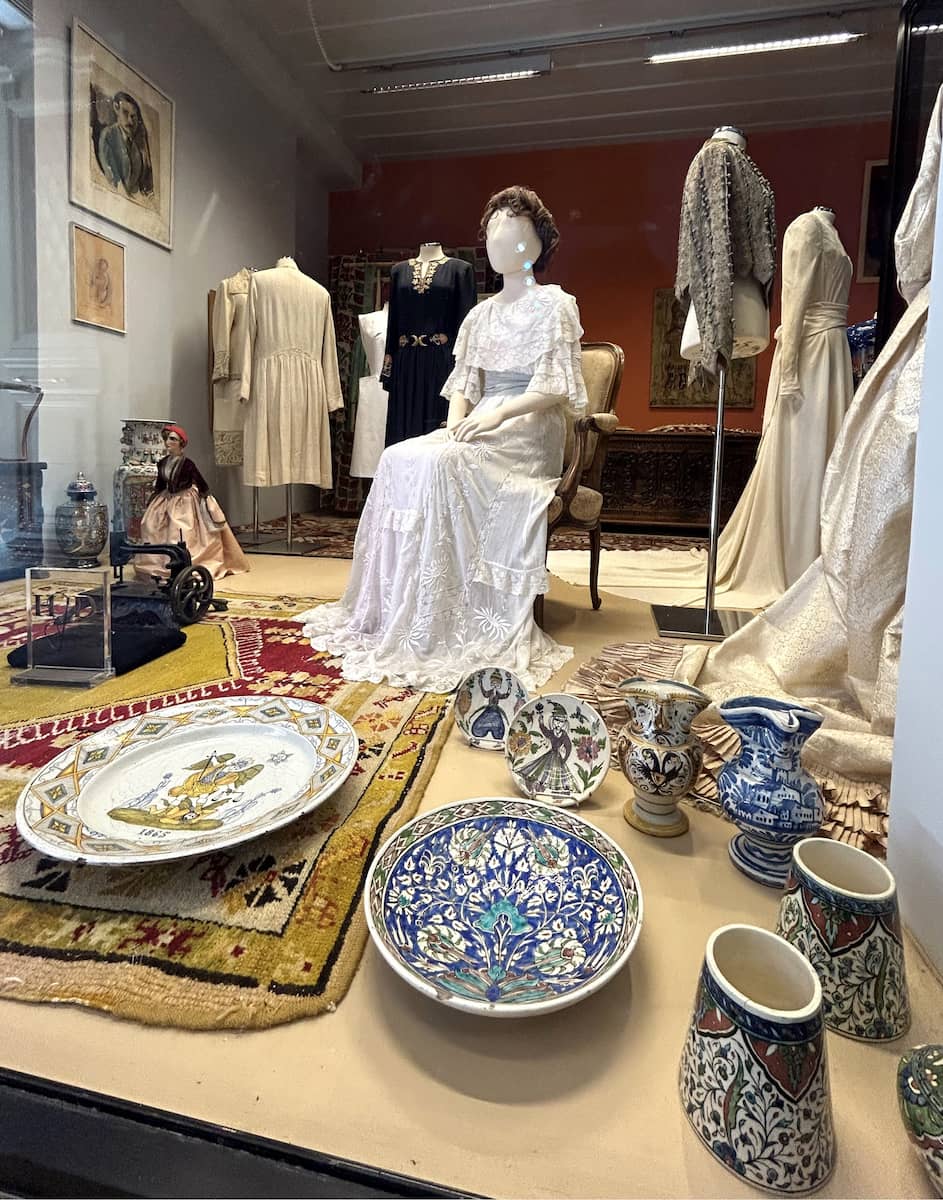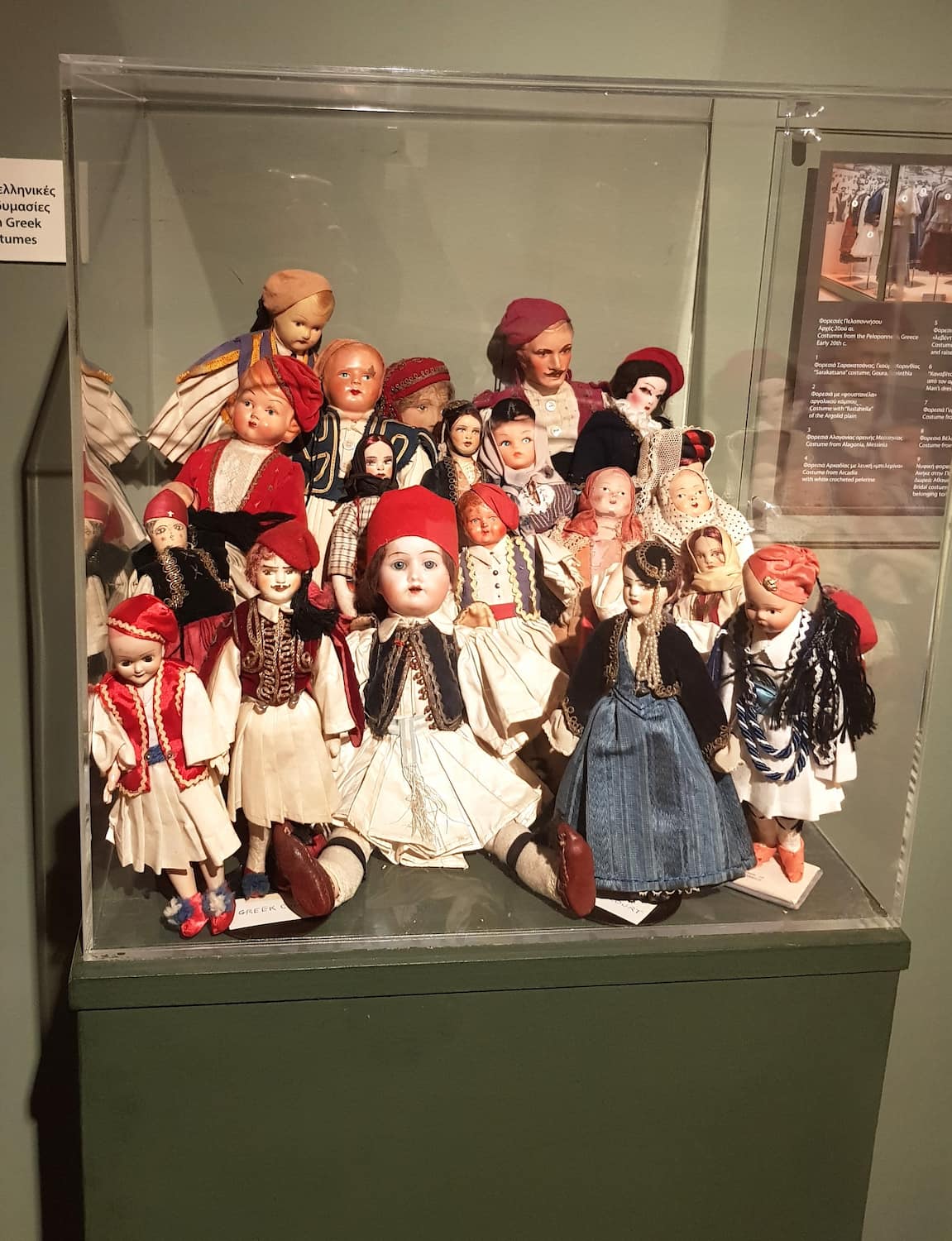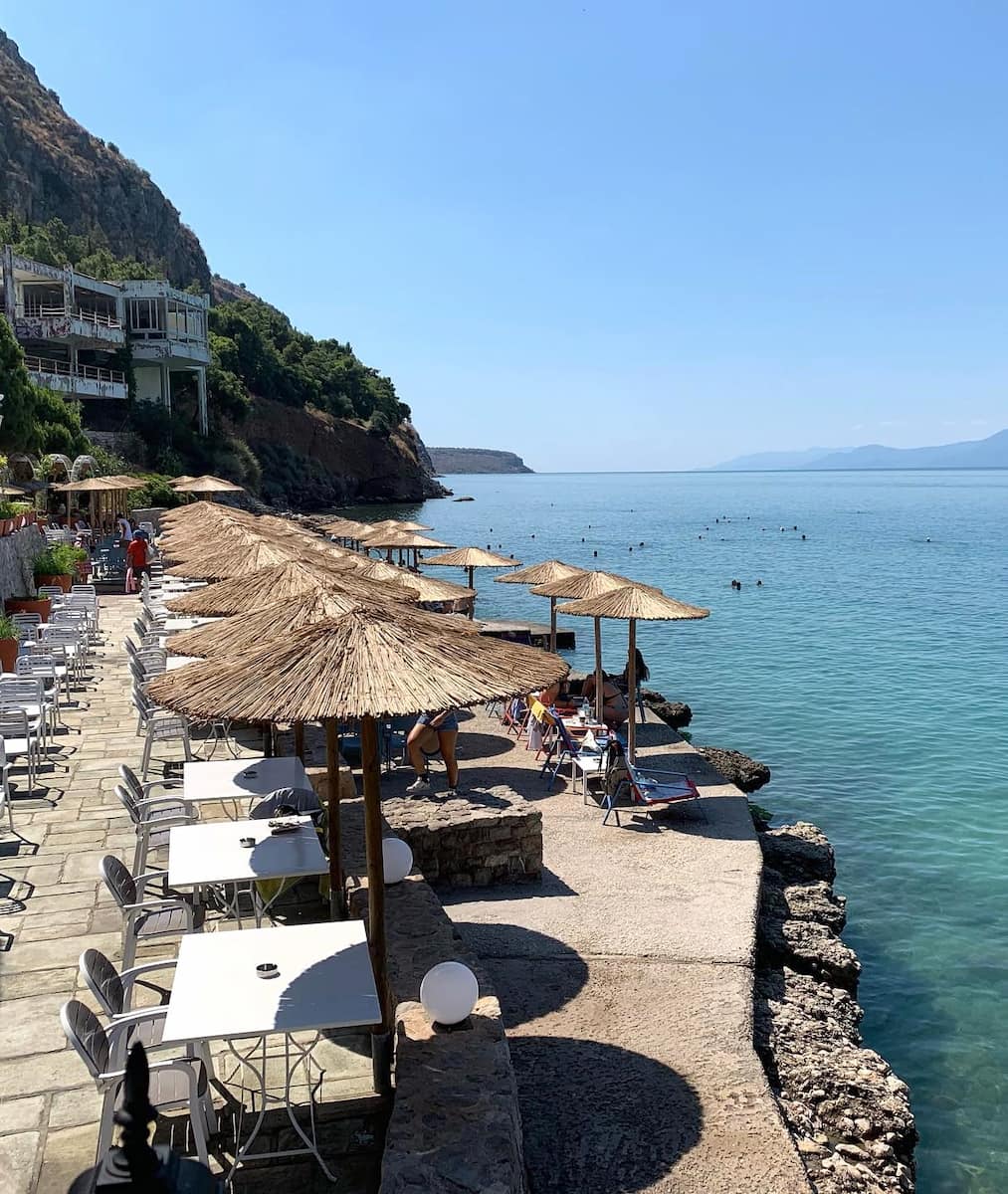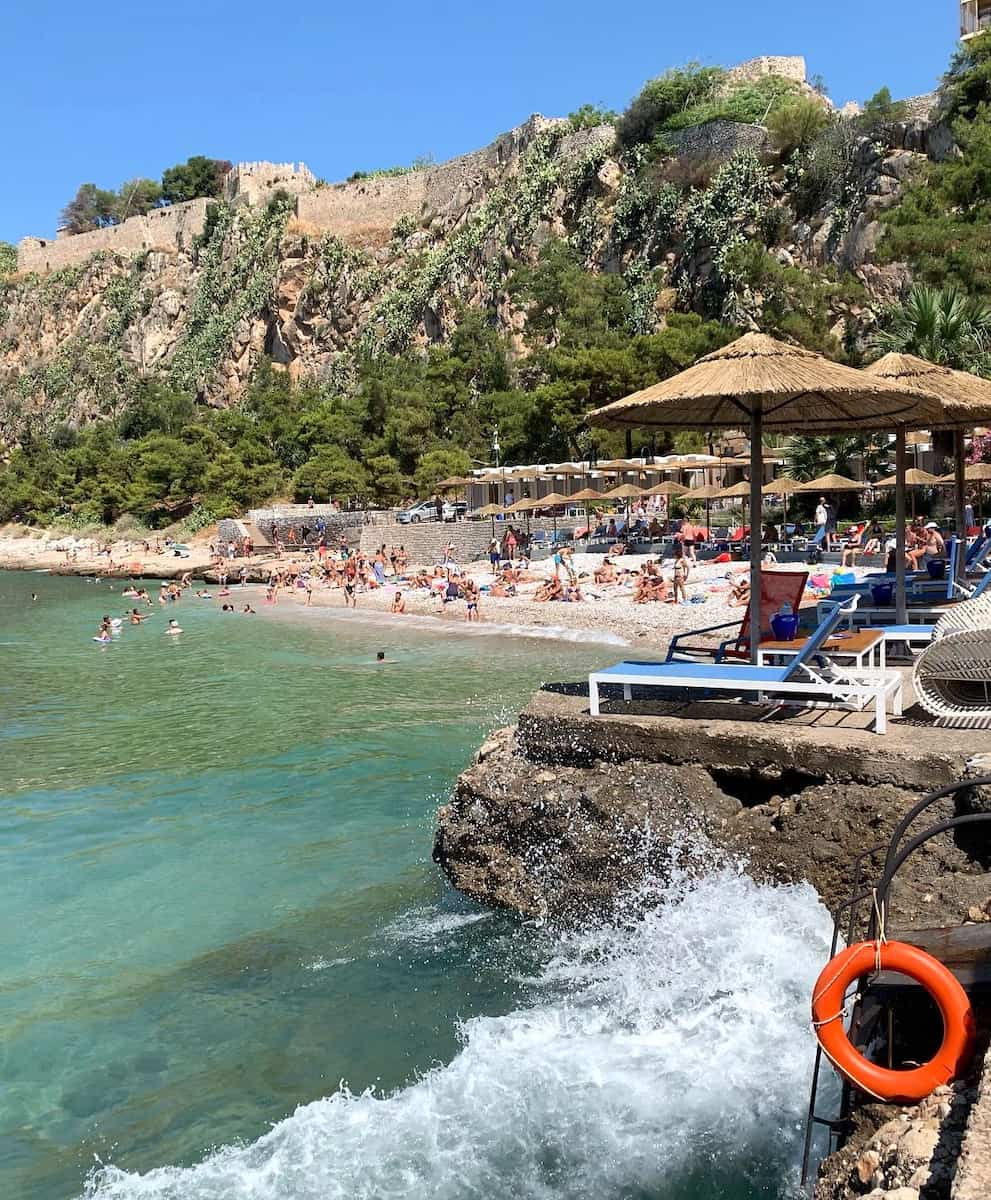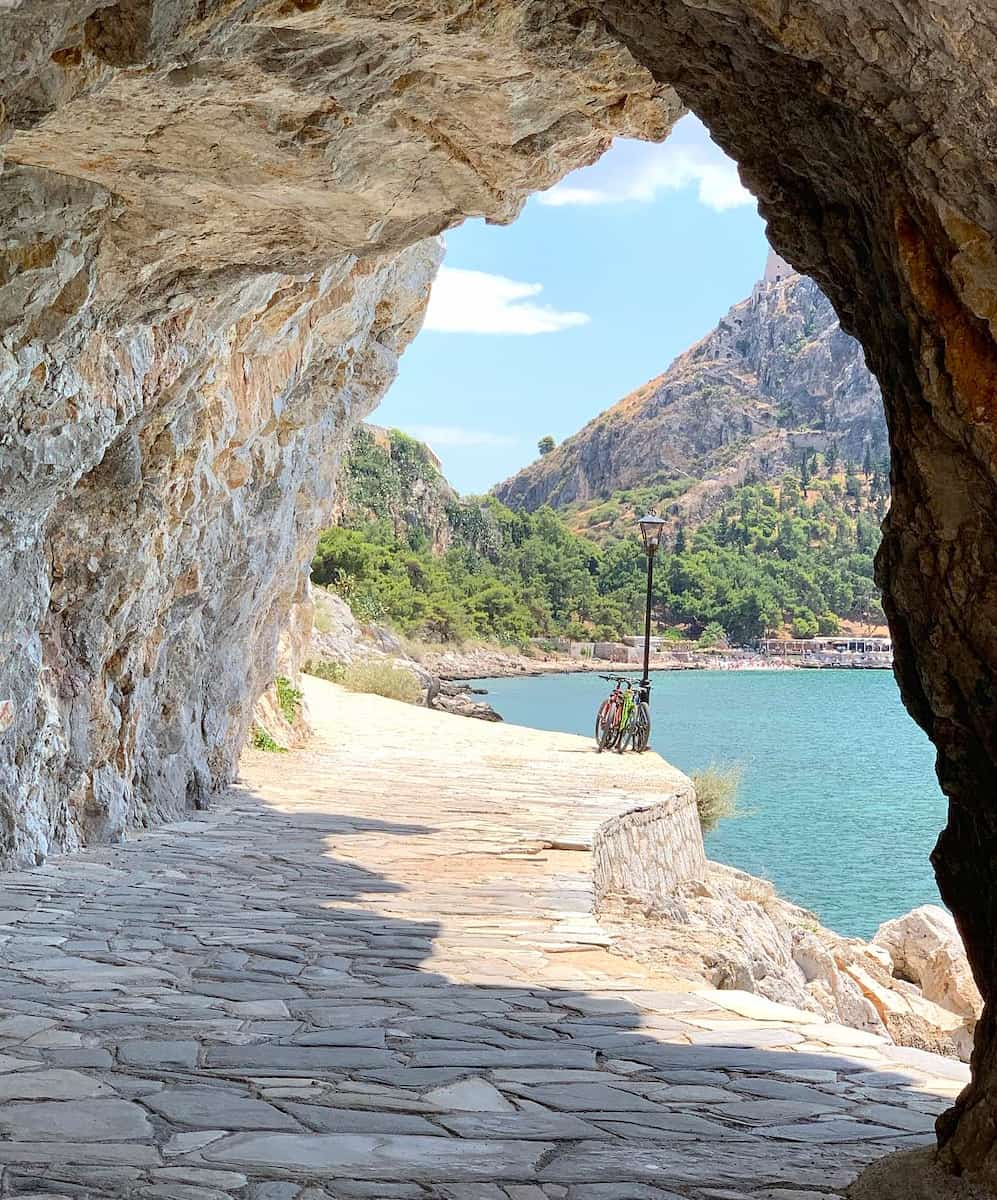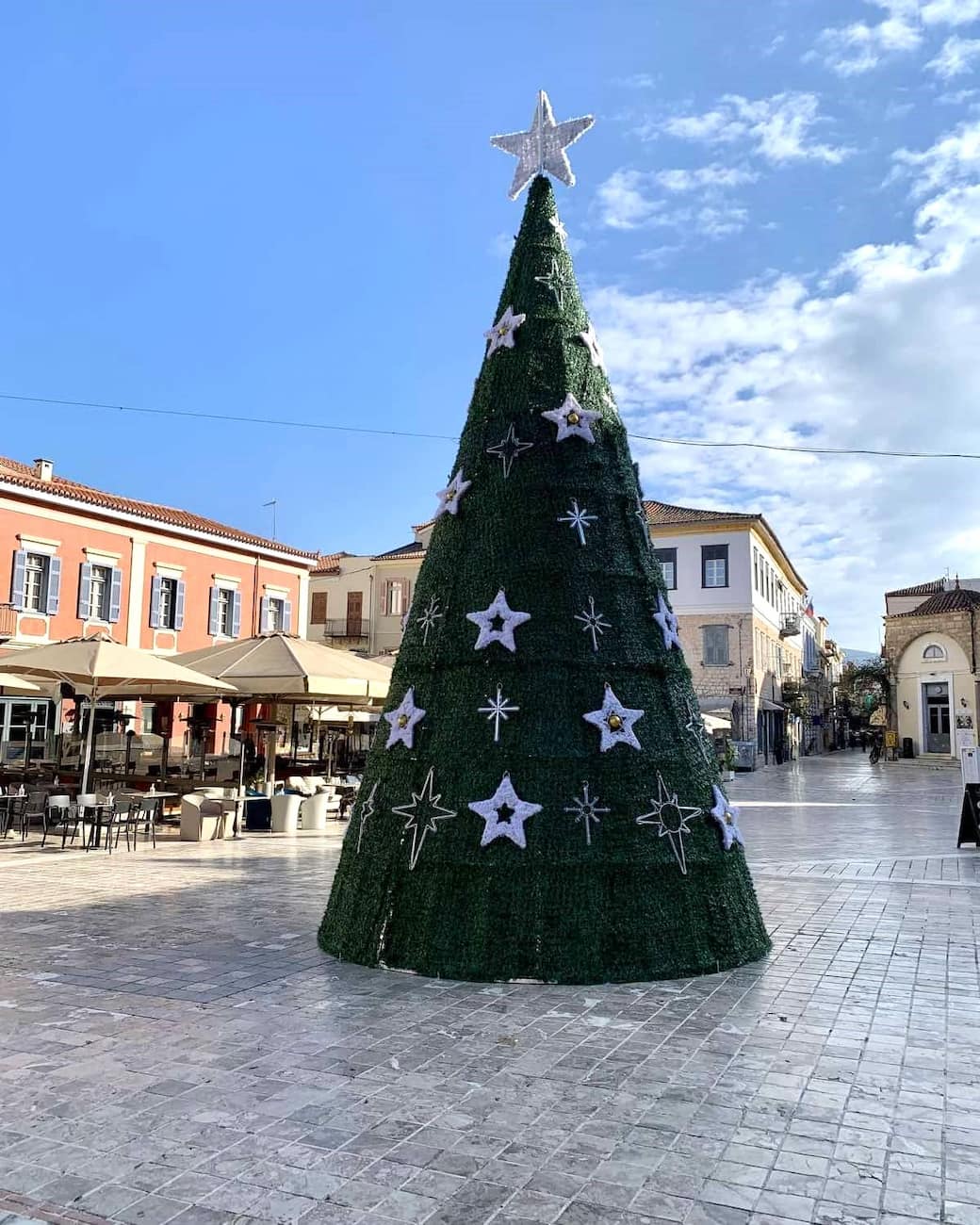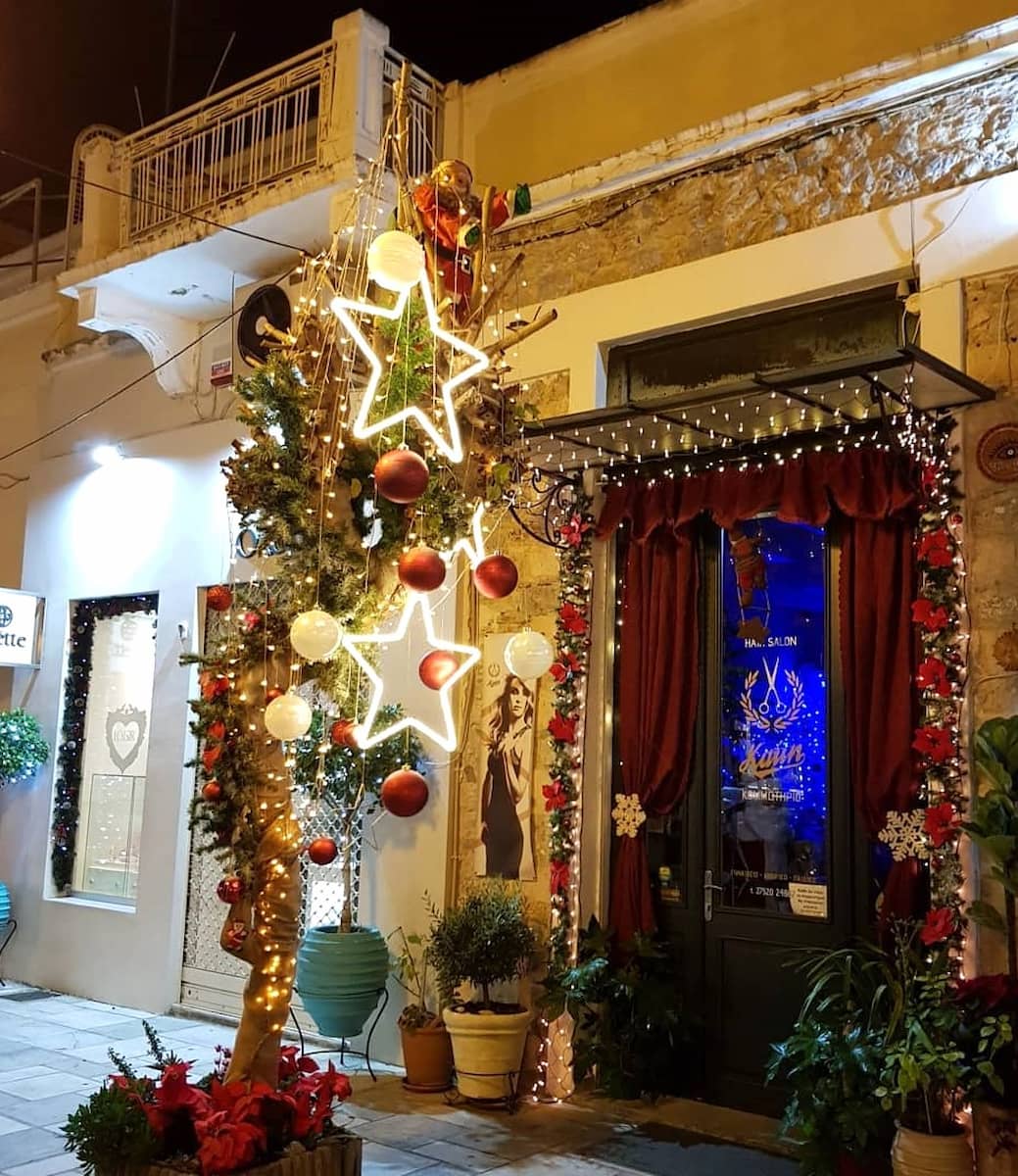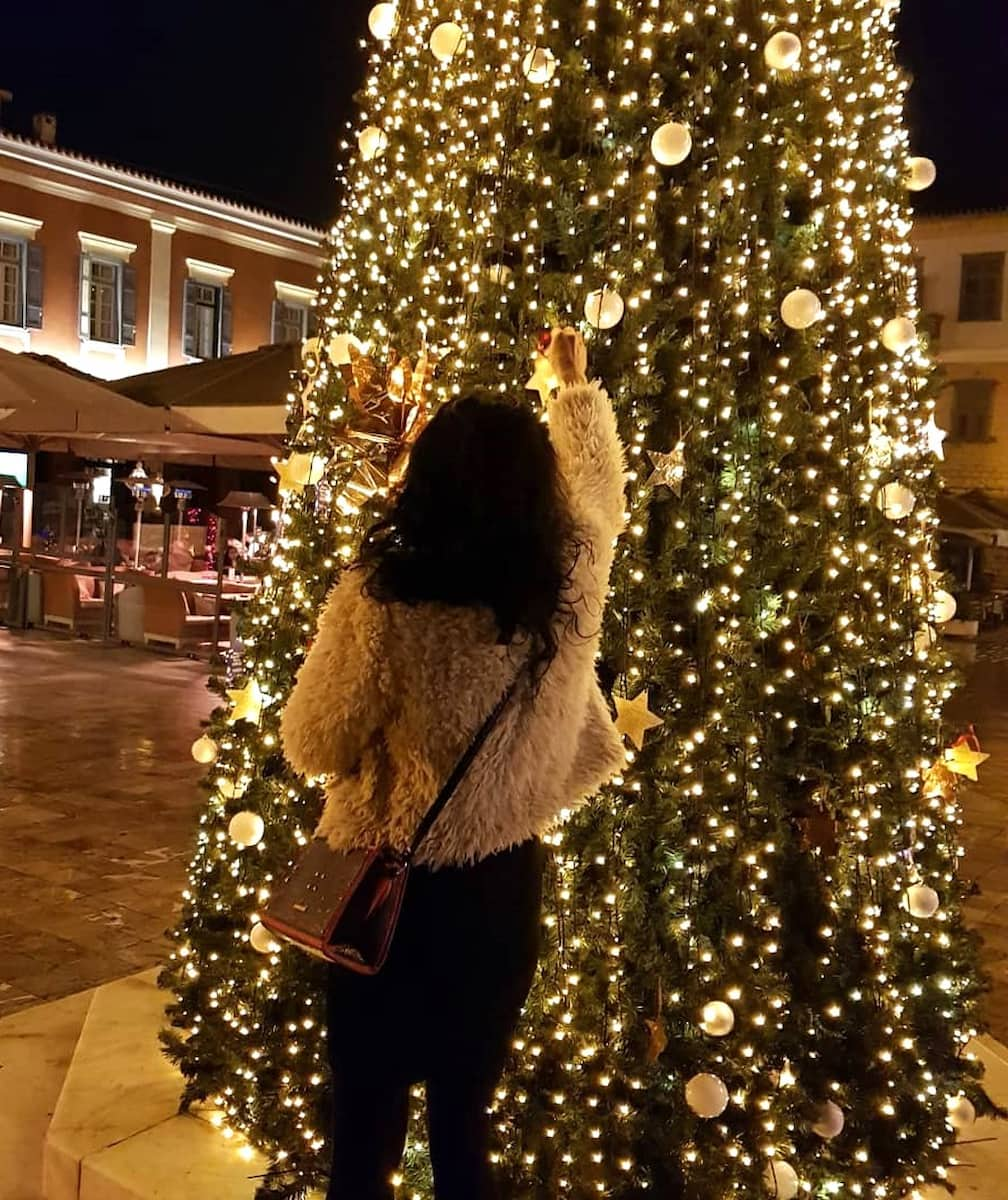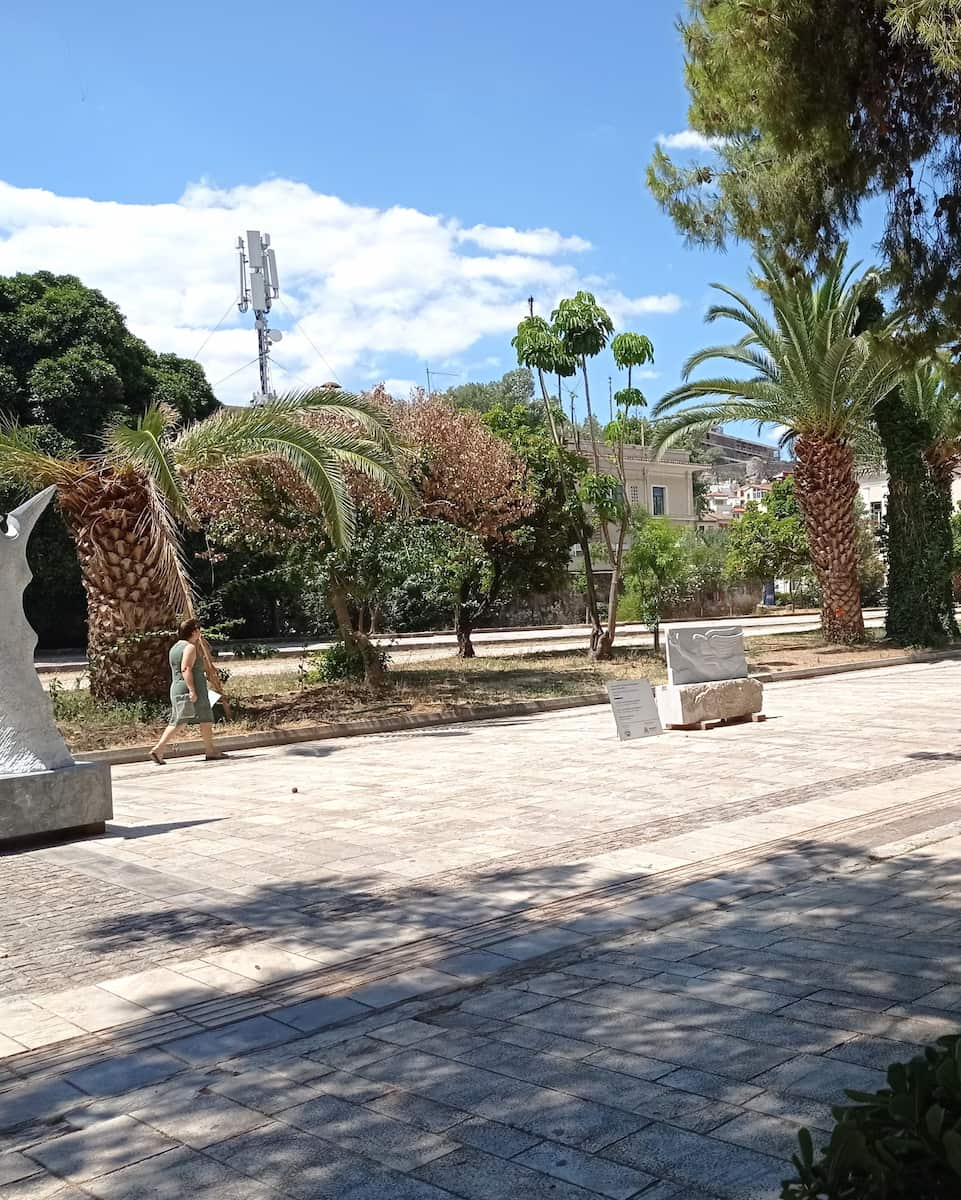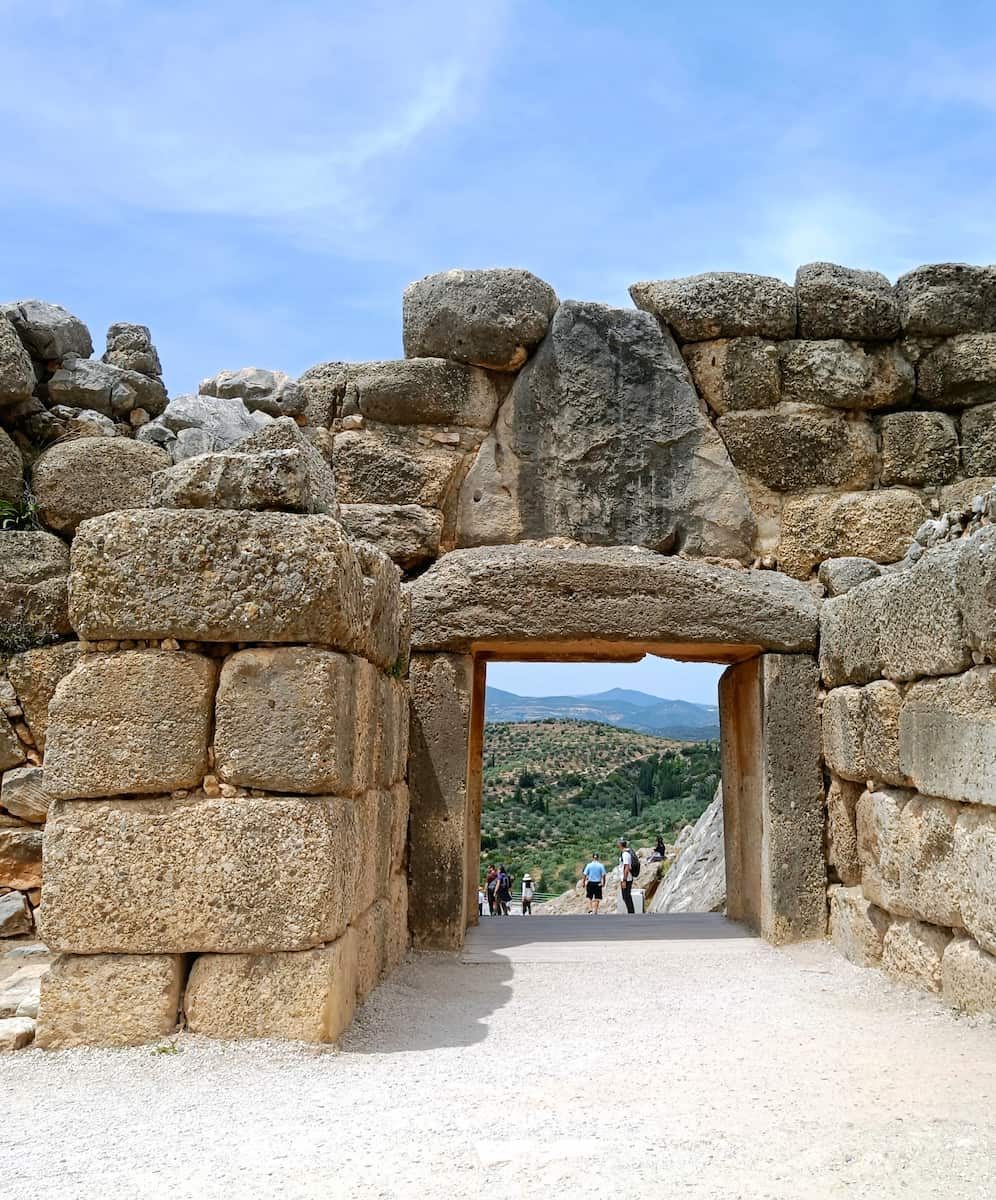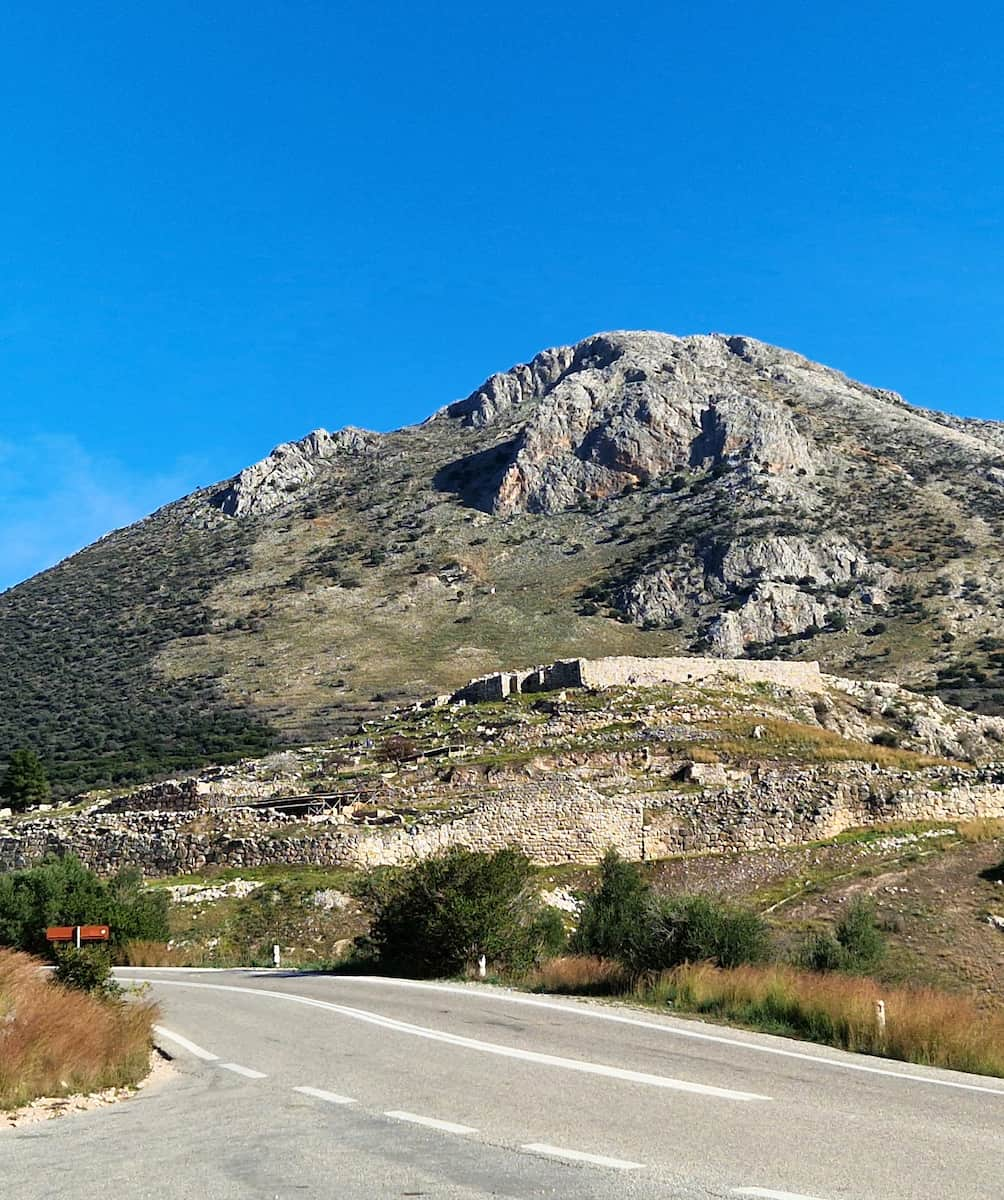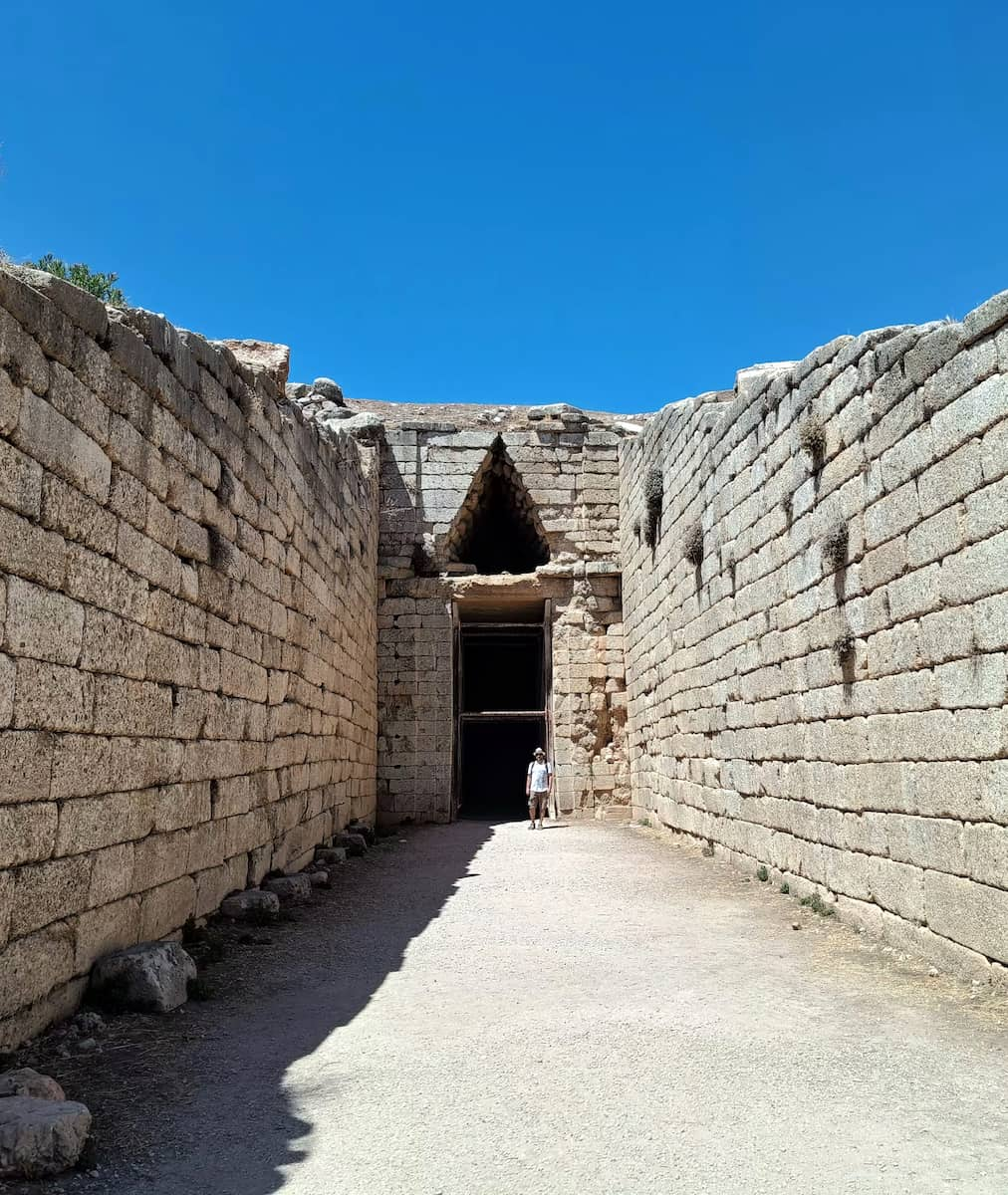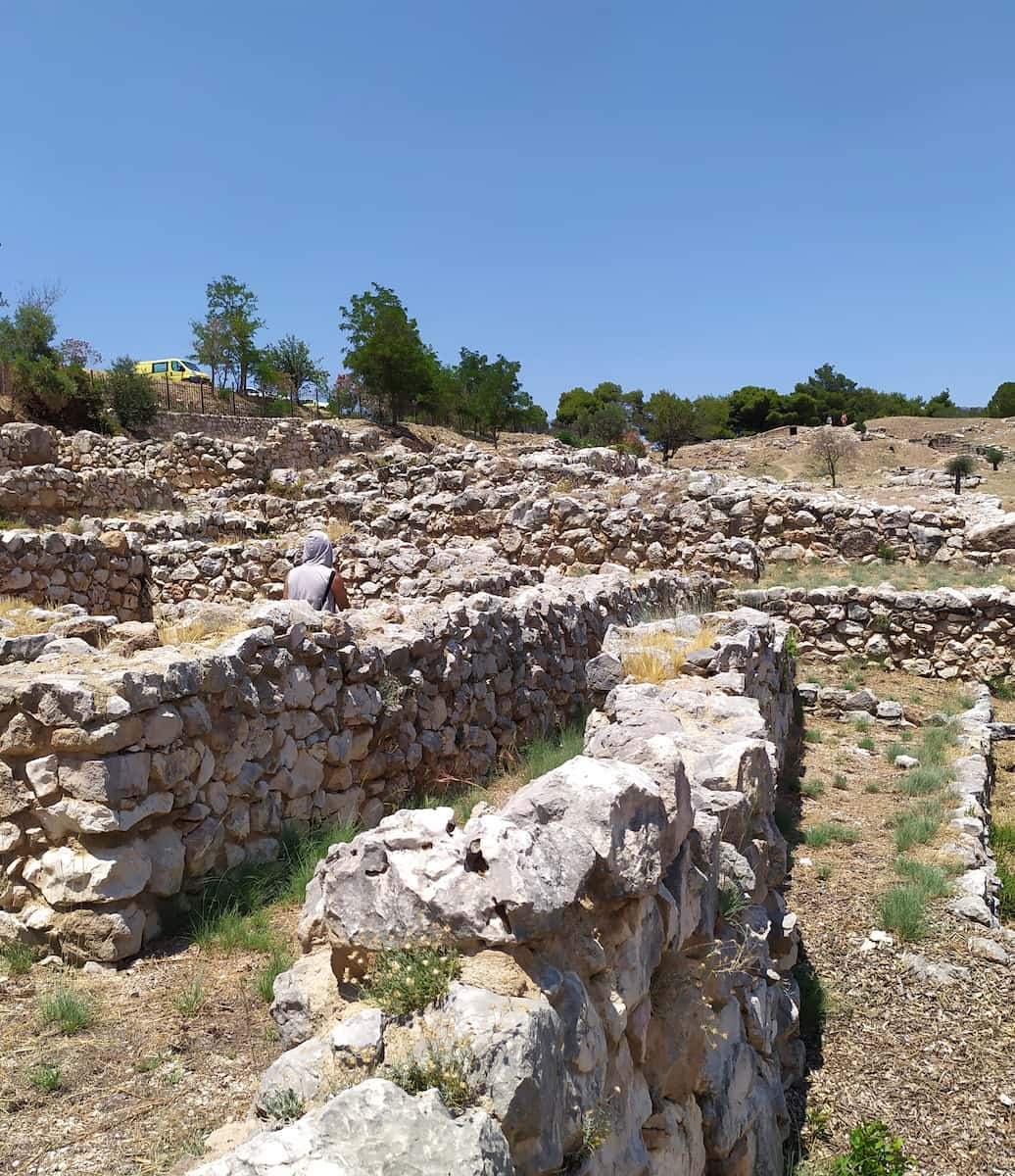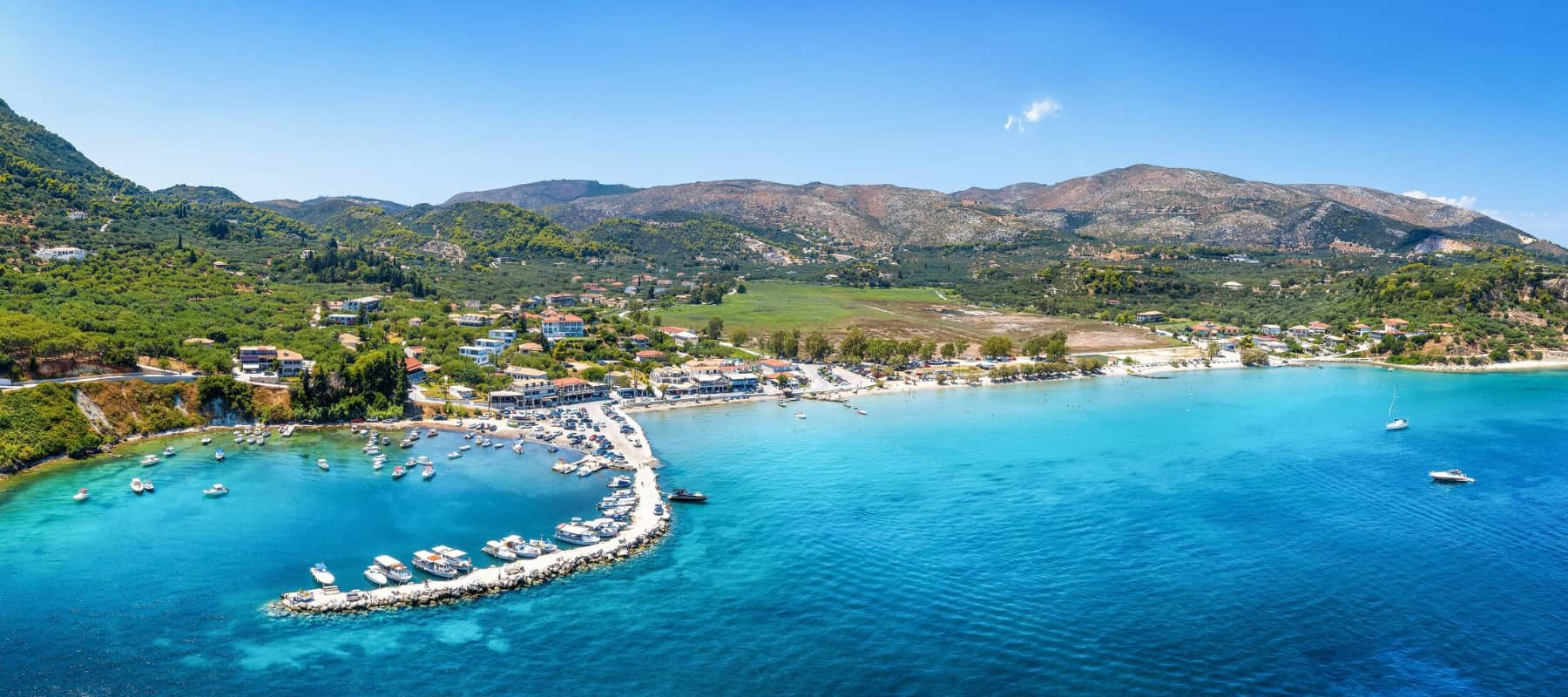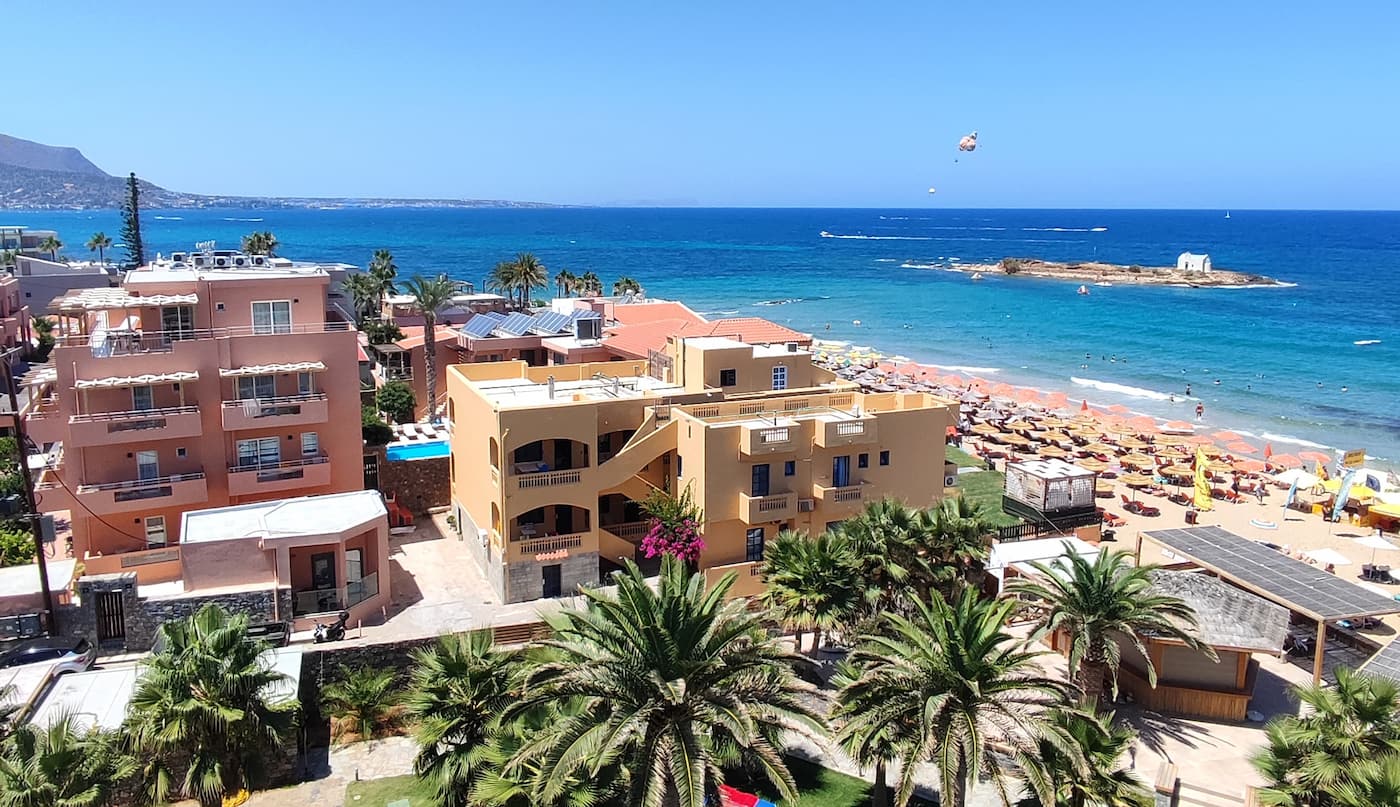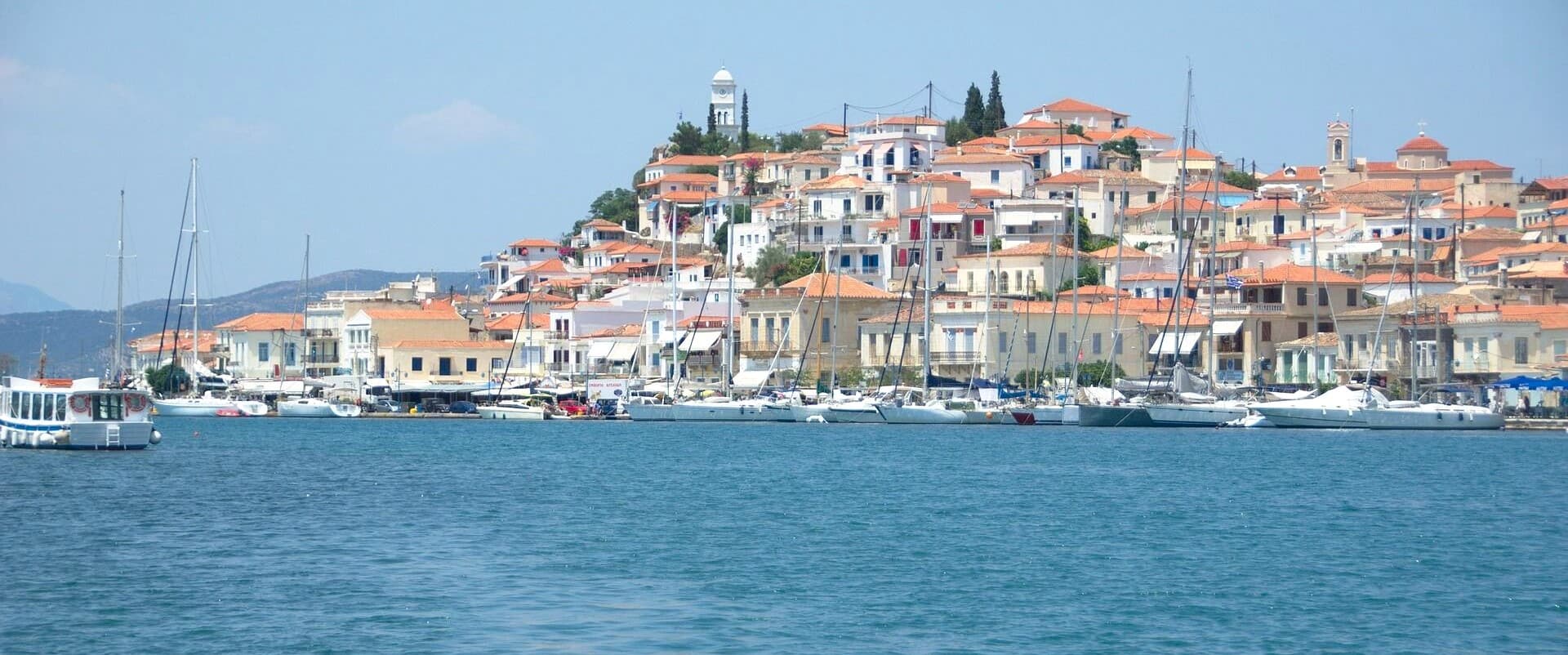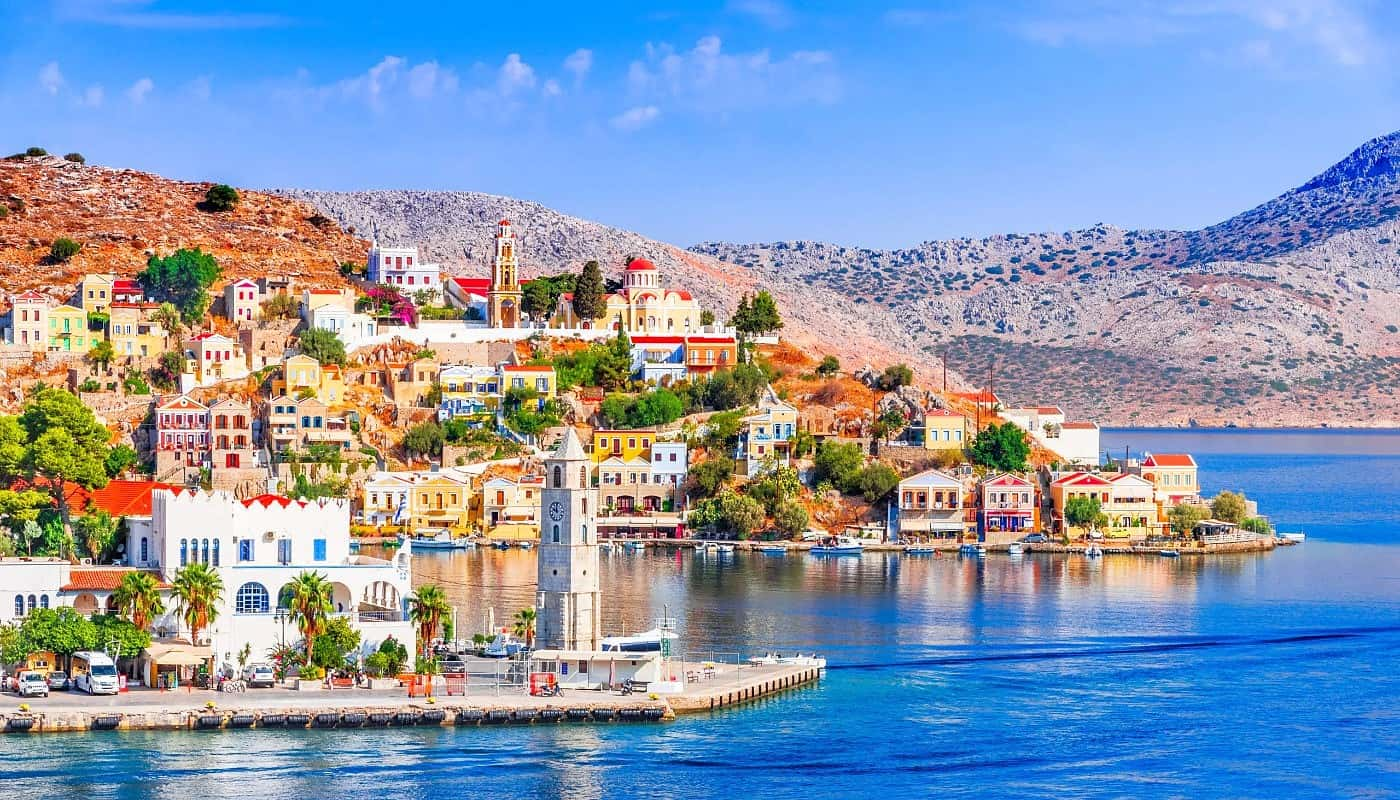Nestled in the heart of the Peloponnese, Nafplio is a captivating coastal town that beckons visitors with its rich history and stunning beauty. As the first capital of modern Greece following the Greek War of Independence, this charming city played a pivotal role in shaping the nation’s destiny. From its well-preserved old town to its imposing fortresses, Nafplio offers a unique blend of cultural heritage and natural splendor that makes it a must-visit destination for anyone exploring Greece.
Whether you’re planning a day trip from Athens or a longer stay to savor Nafplio’s many attractions, this guide will help you make the most of your visit. We’ll take you on a journey through time, from ancient Greece to the present day, as we explore the top things to see and do in Nafplio.
🏠 Best Hotels in Nafplio
- 💎 Luxury Hotel: Ilion Hotel
- ✨ 5-Star: Nafplion1841
- 🏨 4-Star: Agamemnon Hotel
- 🛏 3-Star: Aetoma Hotel
- 💸 Cheap: Evdokia Boutique Hotel
- 🏢 Apartament: Nafsimedon Hotel
- 👨👩👧👦 For Families: Avra Nafpliou
- 🏩 For Couples: Harmony Luxury Rooms
💁 Best Guided Tours
- Sea Kayak Nafplio - Medieval Castles Tour from € 93 (⭐5.0/5)
- Sailing Cruise in Nafplio | with Local Treats from € 145 (⭐5.0/5)
- Catamaran Cruise in Nafplio | Private from € 1,735 (⭐5.0/5)
- Best of Peloponnese Private Tour from € 266 (⭐5.0/5)
- 4-Day Tour of Mycenae, Epidaurus, Olympia, Delphi & Meteora from € 530 (⭐4.7/5)
- Nafplio: Sun & Sail Cruises Semi-Private Half-Day with Meal from € 139 (⭐5.0/5)
Best Things To Do in Nafplio
1. Palamidi Fortress
Venetian marvel atop the hill. Perched at a breathtaking 220m altitude, Palamidi Fortress stands as one of the best-preserved fortifications in Greece and a must-see attraction in Nafplio. This architectural wonder offers visitors a chance to step back in time and savor the rich history of this charming town.
The legendary climb. One of the best things to do in Nafplio is to challenge yourself with the infamous staircase to the top of Palamidi. While locals debate the exact number of steps (999 or 857), the climb is undoubtedly a memorable part of any Nafplio itinerary. For the best experience, start your ascent early in the day, around 8:30 AM, when the stairs are still shaded and the temperature is cooler.
Historical significance unveiled. Built by the Venetians in the early 18th century, Palamidi Fortress played a crucial role in the history of Nafplio and modern Greece. As you explore the eight interconnected bastions, you’ll discover ancient bell towers and the prison cell where Theodoros Kolokotronis, a key figure in the Greek War of Independence, was once held.
Panoramic views of Nafplio. The reward for your climb is a breathtaking 360-degree vista that encompasses the Argolic Gulf, Nafplio old town with its terracotta rooftops, and the surrounding Greek countryside. It’s one of the best views in all of Greece and a photographer’s dream.
Must-see sections within Palamidi:
- Agios Andreas Bastion (the highest point)
- Miltiades Bastion (with the famous prison cell)
- The ancient chapel of St. Andrew
- The underground tunnels connecting bastions
- The eastern gate with its original Venetian lion carving
⭐ Best Activities
- Sea Kayak Nafplio - Medieval Castles Tour: Experience Nafplio from a unique perspective with this highly-rated kayaking adventure. Paddle through the calm waters of the Argolic Gulf while viewing the town’s three historic fortresses.
2. Bourtzi Fortress
Fairytale fortress. The iconic Bourtzi Fortress, situated on a tiny islet in Nafplio’s harbor, is one of the city’s most recognizable landmarks and a testament to its rich history. This 15th-century Venetian fortress has served various roles throughout the centuries, making it a fascinating stop on any Nafplio tour.
Easy access. Getting to Bourtzi is part of the adventure when visiting Nafplio. Small boats depart every 30 minutes from the harbor near Filellinon Square, just a short walk from the heart of Nafplio’s old town. The brief 5-minute journey offers beautiful views of the city and costs only €5 for a round trip.
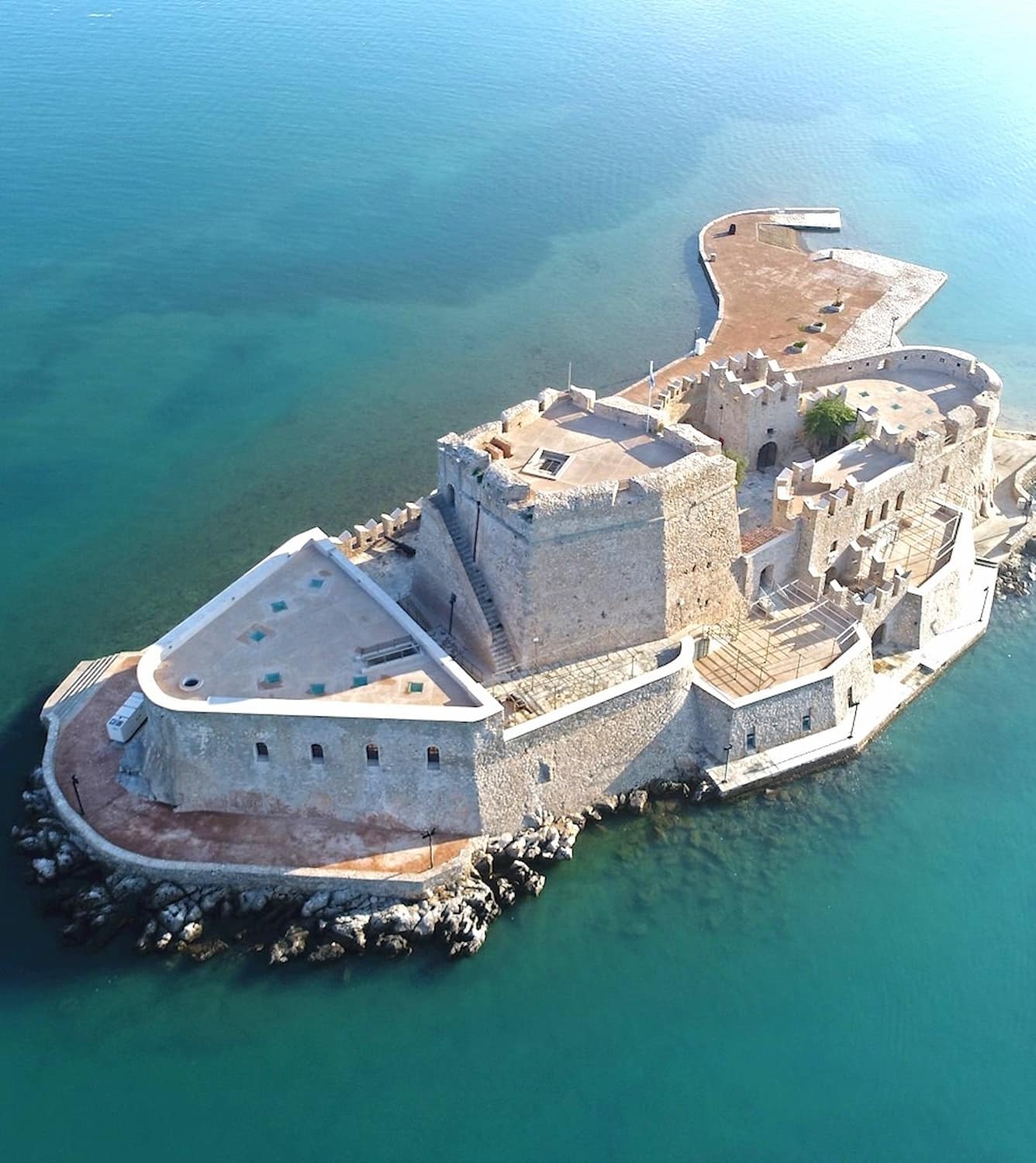
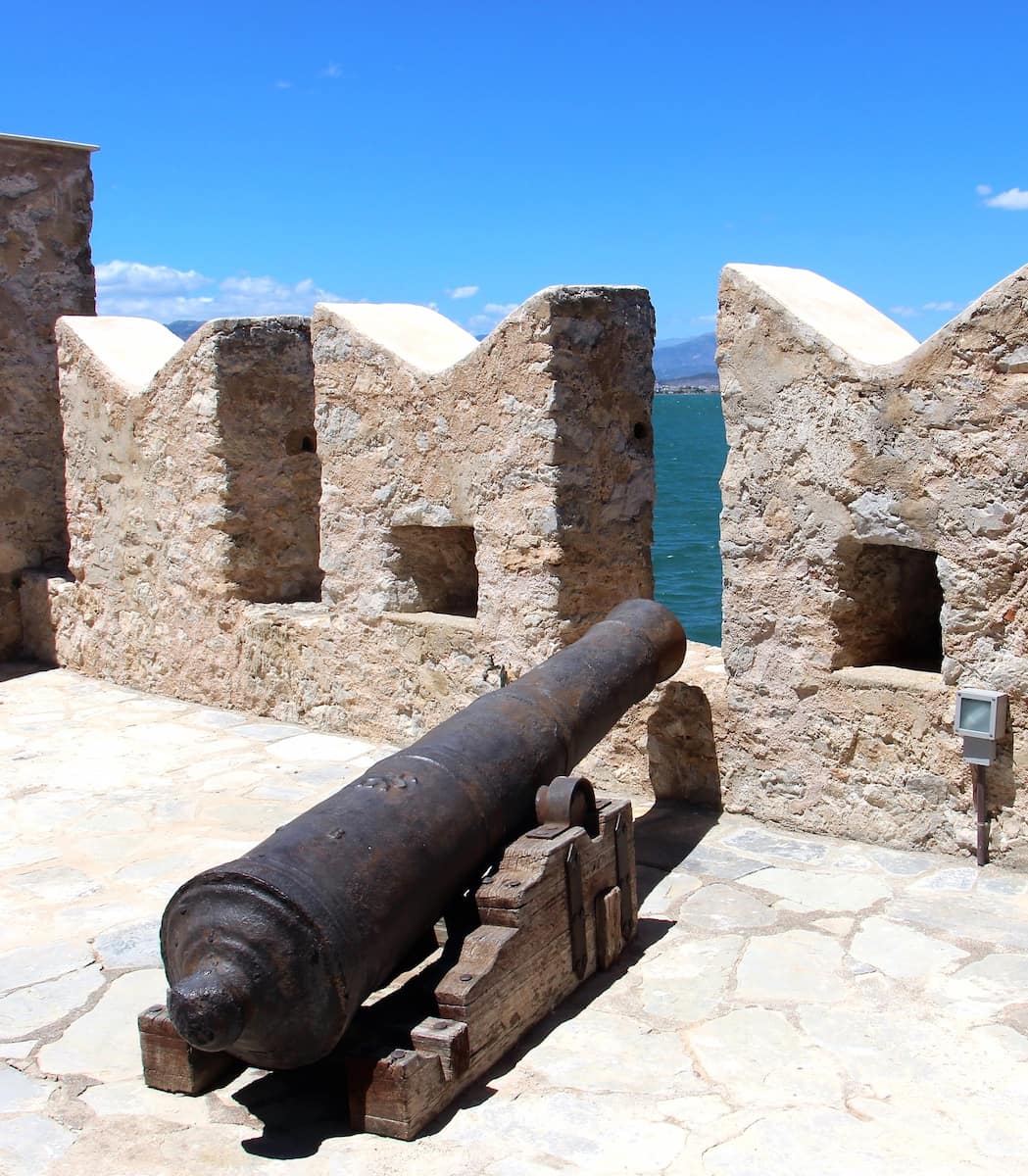
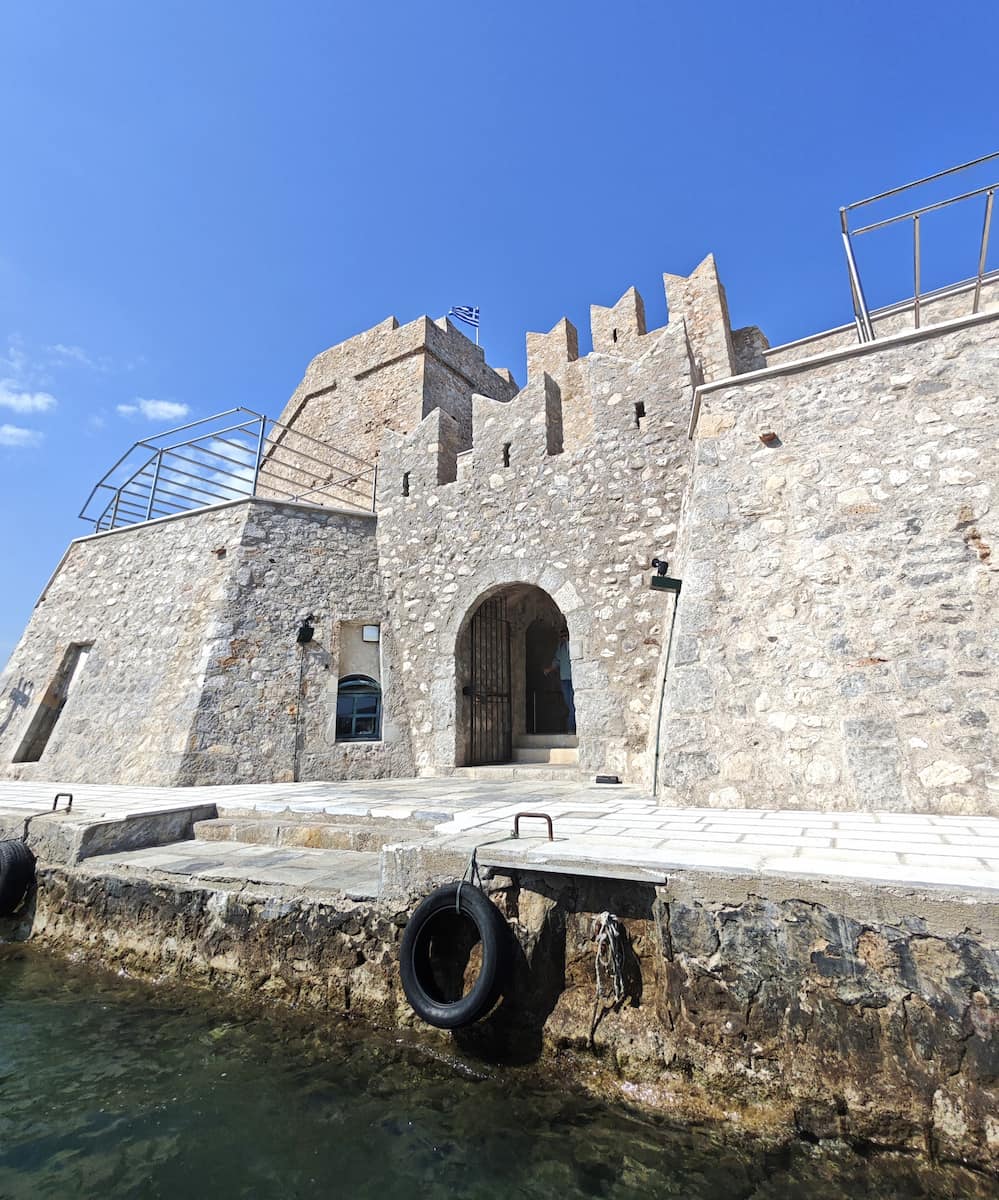
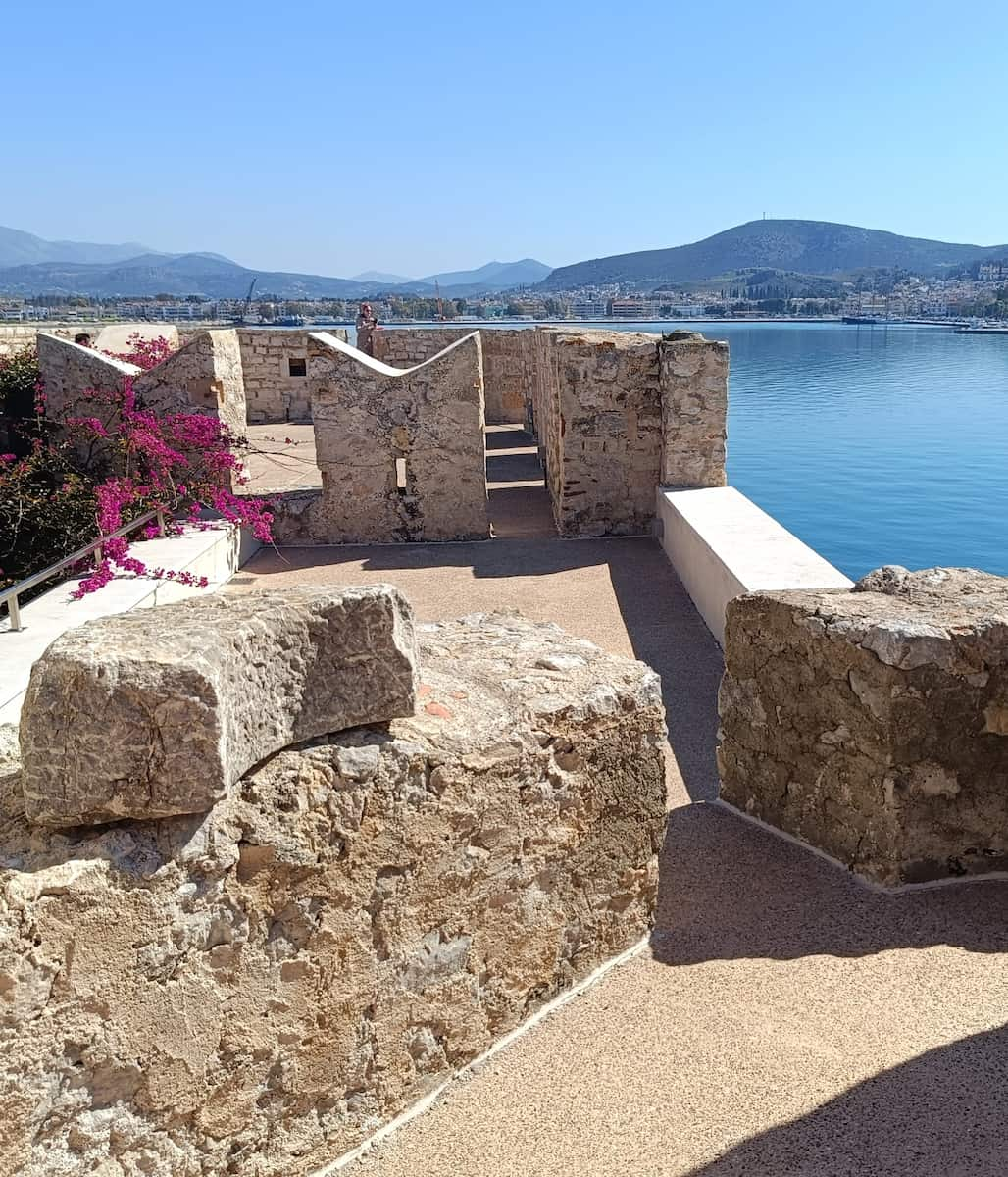
Layers of history. Originally named “Castello dello Soglio” (Castle of the Throne), Bourtzi was constructed in 1471 as a key component of Nafplio’s sophisticated defense system. The fortress has witnessed centuries of Greek history, from Venetian rule to the Ottoman period and the birth of modern Greece.
Unique past residents. Look out for Vangelis, the fortress’s unofficial feline mascot, who arrived accidentally on a cement boat and decided to stay. Bourtzi’s history as the executioner’s residence from 1865 to 1935 adds an intriguing layer to its story – a period when no one in Nafplio wanted to live near the executioner.
Perfect for photography. One of the best things to see in Nafplio is Bourtzi at sunset. The waterfront promenade near Akronafplia offers stunning views of the fortress, with its stone walls glowing golden against the darkening Aegean Sea.
Bourtzi’s historical roles through centuries:
- Venetian defensive fortress (1471-1715)
- Ottoman military stronghold (1715-1822)
- Greek government building (1822-1865)
- Executioner’s residence (1865-1935)
⭐ Best Activities
- Nafplio City Tour: Discover the charming streets and rich history of Nafplio with a personalized city tour. Your guide will pick you up from your hotel, port, or a designated meeting spot in Nafplio, making this a convenient way to explore Greece’s first capital.
3. Akronafplia Fortress
Ancient acropolis. Akronafplia is one of the best preserved fortresses in Greece and the oldest castle in Nafplio, occupying the entire rocky peninsula that formed the original town site. During my trip to Greece, I spent a magical afternoon exploring this historic gem, feeling centuries of history beneath my feet as I wandered its weathered walls.
Architectural periods. What makes Akronafplia unique among Nafplio attractions is how clearly you can trace the city’s evolution through different ruling periods. The eastern section showcases Byzantine influences, the middle area bears distinct Frankish elements, and the western end features Ottoman and Venetian additions – a physical timeline of Nafplio’s rich past.
Peaceful exploration. Unlike its more famous siblings that attract most tourists who get from Athens to Nafplio, Akronafplia offers a more serene experience. During my tour in Nafplio, I discovered secluded corners where wildflowers push through ancient stones and lizards sun themselves on walls that once defended this important part of Nafplio against invaders.
Best sunset spot. The western battlements provide what many consider the absolute best sunset viewpoint in all of Nafplio. I watched the sun sink behind distant mountains while casting golden light across the entire bay – a perfect way to end a day in Nafplio and a scene you won’t find elsewhere in Greece.
Free and accessible attraction. Entry to Akronafplia is completely free, making it my top budget-friendly recommendation for anyone planning a trip to Nafplio from Athens. You can reach it via a path near the Nafplia Palace Hotel or by climbing up from the old town of Nafplio through charming narrow streets – both routes offer spectacular views of the city in Greece below.
Akronafplia’s must-visit spots:
- The Land Gate (eastern entrance)
- The Five Brothers (five Ottoman cannons)
- Pyli tis Xiras (Dry Gate)
- The western battlements for sunset views
- The hidden Byzantine chapel ruins
⭐ Best Activities
- Ancient Corinth & Nafplion One-Day Tour: Combine a visit to the archaeological site of Ancient Corinth with the charming coastal town of Nafplio on this full-day excursion. Explore the ruins where the Apostle Paul once preached before discovering the neoclassical beauty and Venetian fortresses of Nafplio, Greece’s first capital after independence.
4. Syntagma Square
Historic heart. Syntagma (Constitution) Square forms the bustling center of Nafplio’s social life. Surrounded by important buildings from the city’s time as Greece’s capital, this marble-paved square pulses with energy from morning until night.
Architectural showcase. I spent hours admiring the square’s stunning buildings – the Archaeological Museum (housed in a former Venetian arsenal), the old Parliament building with its distinctive arches, and the Trianon mosque now serving as a cinema.
Café culture. The square’s edges are lined with cafés where locals and visitors alike gather. I became a regular at Café Xenon, where €3.50 buys excellent Greek coffee and prime people-watching opportunities beneath the square’s towering palm trees.
Evening transformation. As darkness falls, Syntagma Square transforms into an enchanting space. Families promenade, children chase pigeons, and the historic buildings glow warmly under tasteful lighting. The atmosphere is quintessentially Mediterranean.
Cultural hub. During my visit, I caught an impromptu folk dance performance and a small artisan market. Check the bulletin board by the Archaeological Museum for current events – the square hosts everything from book fairs to classical music concerts throughout the year.
Syntagma Square’s historic buildings:
- Archaeological Museum (former Venetian arsenal)
- Vouleftiko (first Greek parliament)
- Trianon (former mosque, now cinema)
- Armostia (former headquarters of Kapodistrias)
- Church of Agios Georgios (with beautiful frescoes)
5. Archaeological Museum of Nafplio
Historical treasure trove. Housed in a magnificent Venetian building that once served as an arsenal, the Archaeological Museum of Nafplio offers an intimate glimpse into the region’s ancient past. I spent a fascinating morning exploring its well-curated collection spanning from prehistoric to Roman times.
Mycenaean marvels. The museum’s crown jewels are undoubtedly the Mycenaean artifacts. I stood mesmerized before the famous Dendra Panoply – a complete bronze armor suit from 1400 BCE that’s one of the oldest and best-preserved in the world.
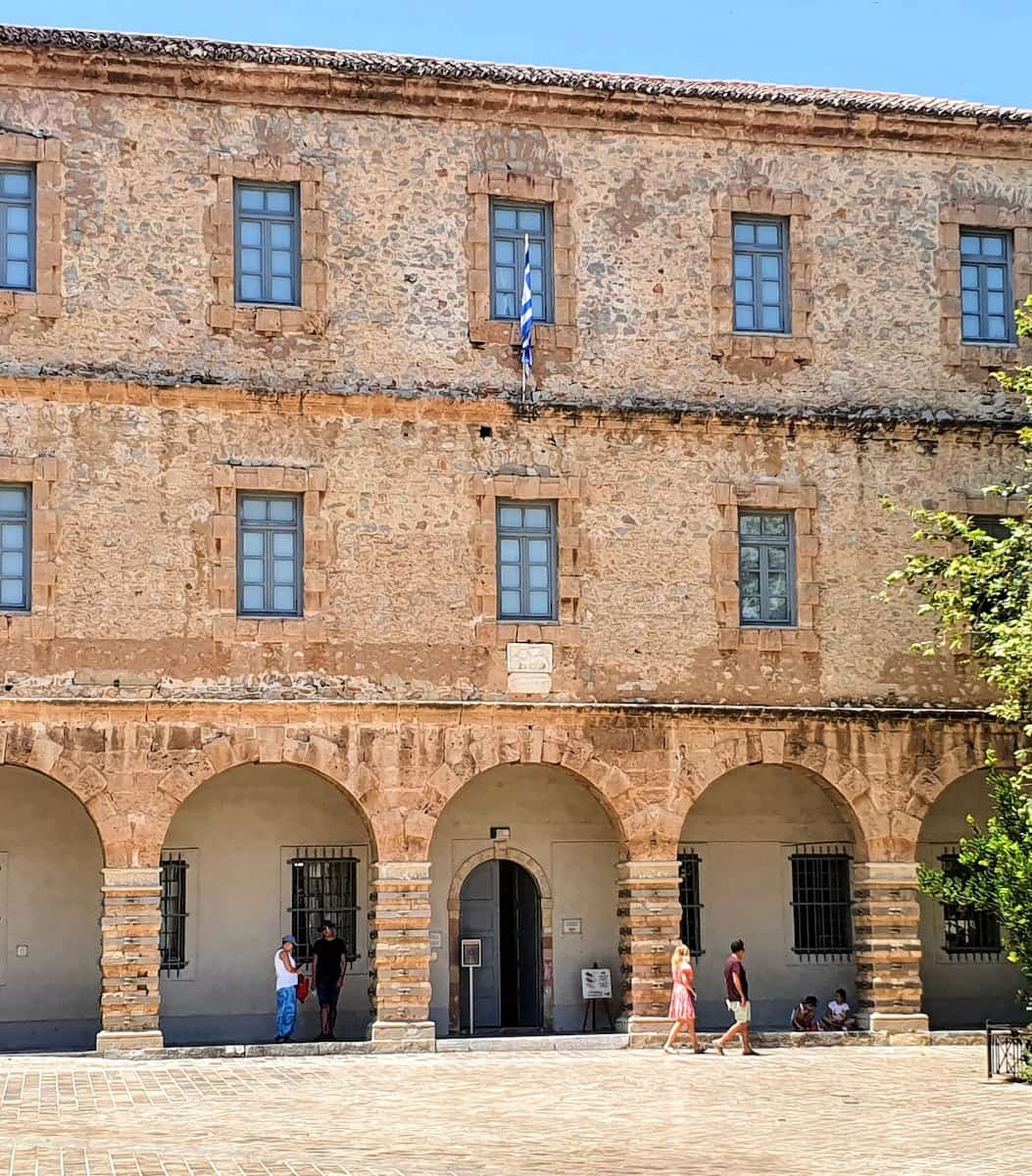
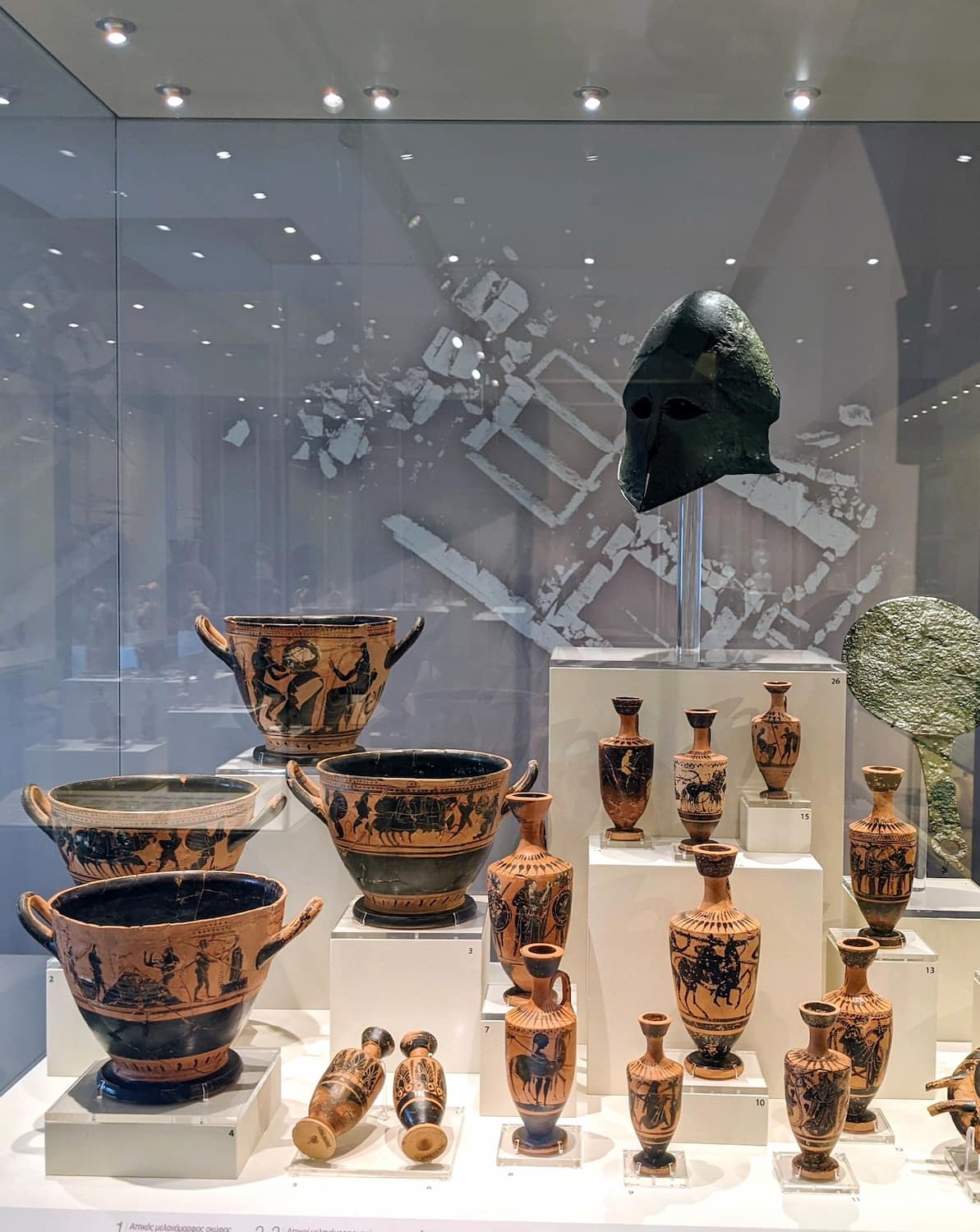
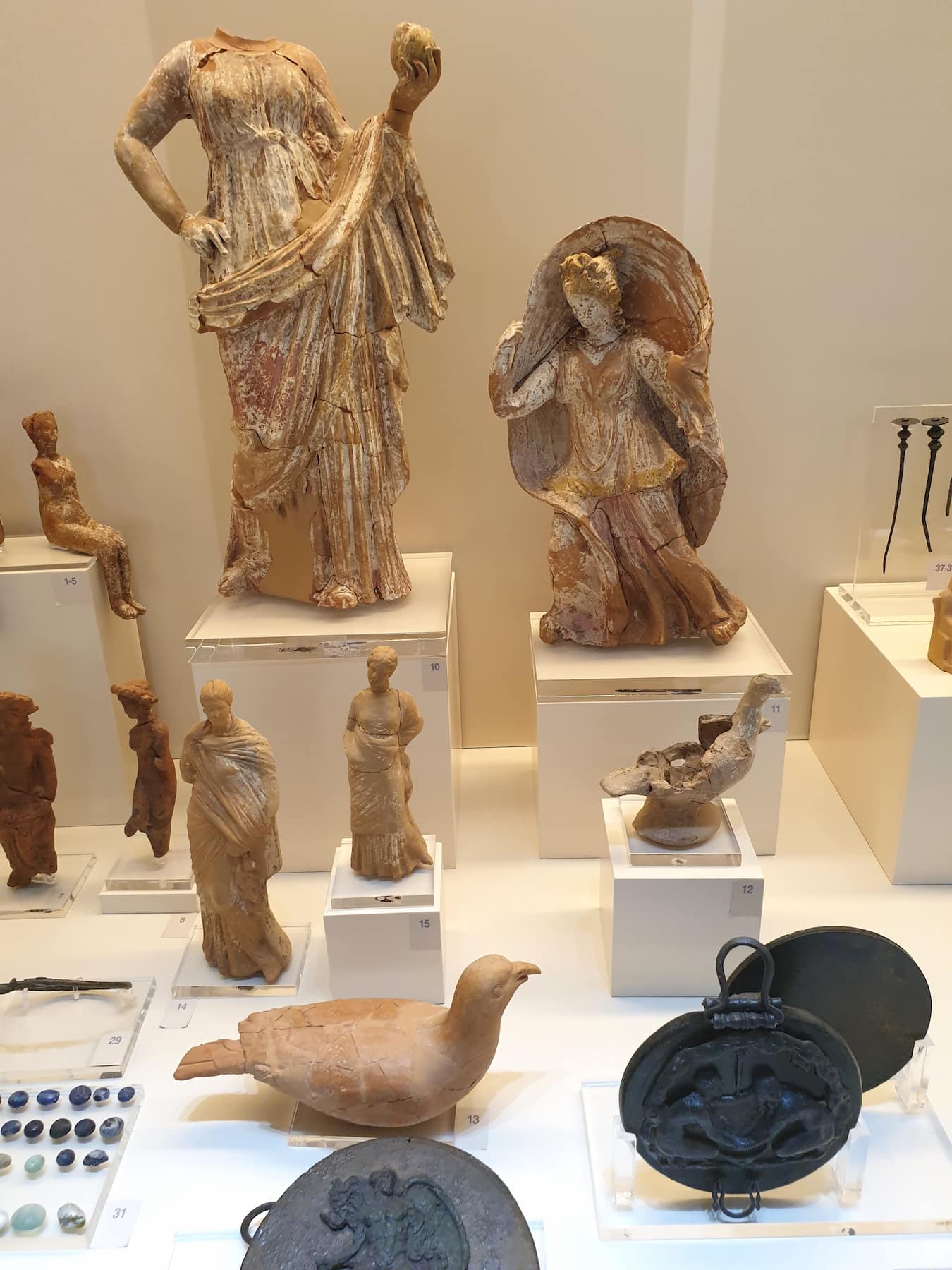
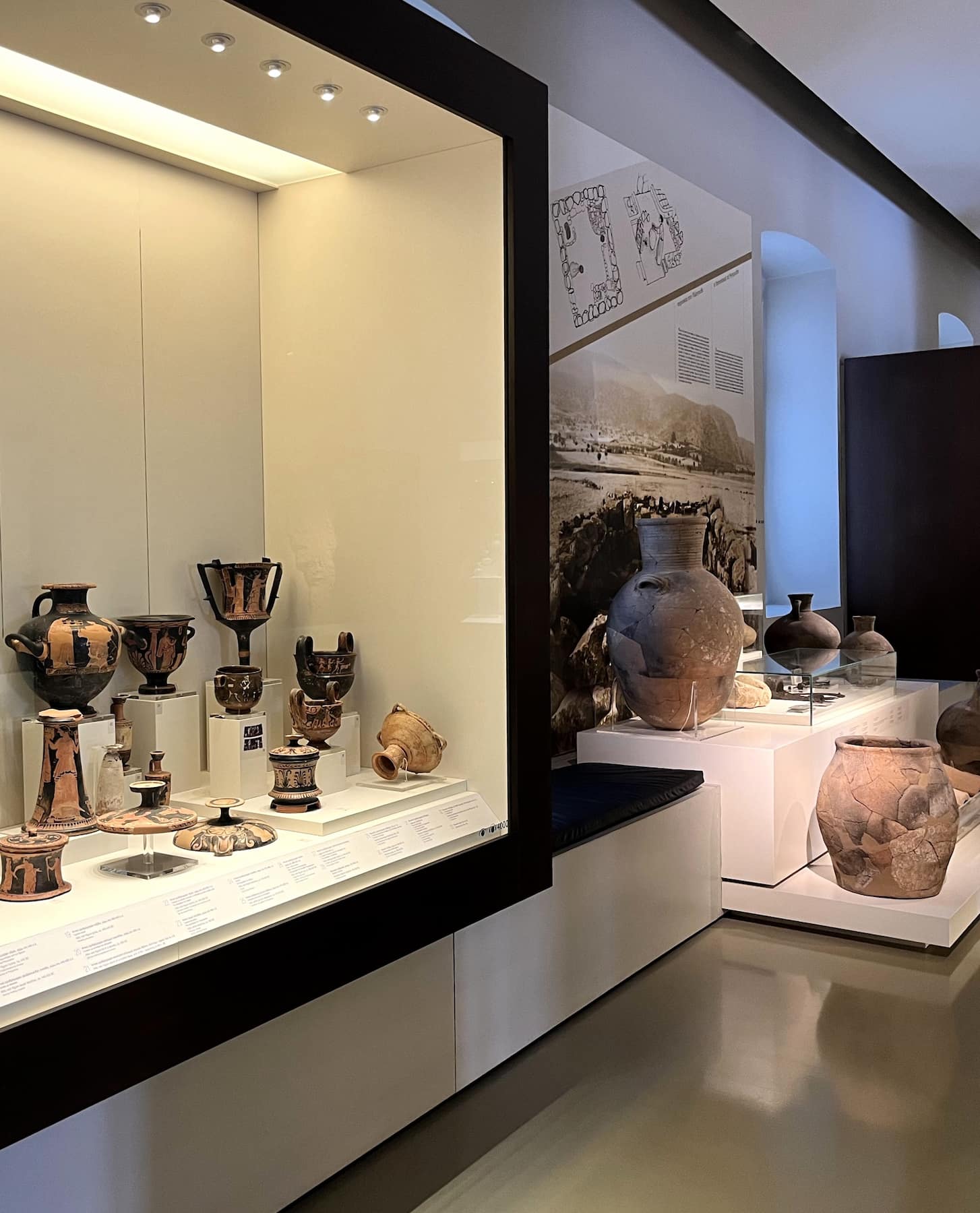
Intimate setting. Unlike Athens’ sprawling museums, Nafplio’s archaeological collection occupies just two floors, making it digestible even for casual history enthusiasts. The thoughtful organization helped me understand how civilization evolved in the Argolid region over thousands of years.
Location advantage. Situated right on Syntagma Square, the museum provides perfect cultural balance to castle-hopping. I appreciated how the exhibits connected directly to nearby archaeological sites like Mycenae and Tiryns, enriching my later visits.
Visitor essentials. Entry costs just €6 (free on the first Sunday of each month from November to March). The museum opens Tuesday through Sunday, 8:30-15:30, with extended summer hours. The small gift shop offers quality replicas of ancient artifacts.
Must-see exhibits at the Archaeological Museum:
- The Dendra Panoply (complete bronze armor)
- Clay figurines from the sanctuary of Agia Irini
- The Mycenaean “Lady of Nafplio” figurine
- Rare Linear B tablets with early Greek writing
- Roman-era glass and jewelry collection
6. Tiryns Archaeological Site
Cyclopean fortress. Just 4km from Nafplio’s center lies Tiryns, a UNESCO World Heritage site that left me awestruck with its massive stone walls. Ancient Greeks believed only mythical Cyclops could have moved such enormous boulders – some weighing over 10 tons!
Mycenaean power center. Walking through the ruins of this 3,000-year-old citadel, I could easily imagine it as Homer described in The Iliad – “mighty-walled Tiryns.” The site was once a major power center rivaling nearby Mycenae.
Engineering marvel. The most impressive feature is undoubtedly the main gallery with its corbeled arch construction. I wandered through these ancient corridors where massive stones are precisely balanced without mortar, creating passages that have survived millennia.
Royal megaron. Standing in the remains of the palace’s great hall (megaron), I pictured Mycenaean kings receiving guests beside the central hearth. The throne room’s layout has influenced our understanding of how power was displayed in Bronze Age Greece.
Practical information. Entry costs €8 (€4 reduced), but a special €20 ticket includes Mycenae, Epidaurus, and other sites. Tiryns is open daily 8:00-20:00 in summer, with shorter hours in winter. Take bus #2 from Nafplio (€1.80) or taxi (approximately €8).
Highlights of Tiryns archaeological site:
- The Cyclopean walls (up to 8m thick)
- The main gallery with corbeled architecture
- The palace megaron (throne room)
- The outer fortification with guard towers
- The ancient cistern water system
7. Karathona Beach
Sandy paradise. Just 3km from Nafplio’s center, Karathona Beach offers a perfect escape from sightseeing. I spent a blissful afternoon on this 1km stretch of golden sand, marveling at how the clear turquoise waters contrasted with the dramatic mountain backdrop.
Family-friendly shore. Unlike many Greek beaches, Karathona features a gradual slope into the water and fine sand rather than pebbles. I watched families with young children enjoying the shallow, calm waters – perfect for inexperienced swimmers.
Beachside amenities. The beach offers both organized sections with sunbeds (€8 for two beds and umbrella) and free areas where you can spread your own towel. Several tavernas line the shore, serving fresh seafood and cold drinks at reasonable prices.
Active options. Beyond swimming, Karathona offers paddleboard rentals (€15/hour), kayaks (€12/hour), and beach volleyball courts. I tried paddleboarding for the first time and found the calm, protected bay ideal for beginners.
Getting there. You can reach Karathona by car (free parking available), taxi (€10 from Old Town), or the little tourist train that runs hourly in summer (€5 round trip). Alternatively, follow the scenic coastal hiking path from Arvanitia Beach (about 40 minutes).
Karathona Beach facilities:
- Sunbed and umbrella rentals (€8-10)
- Beachfront tavernas (meals €10-15)
- Water sports equipment rentals
- Changing rooms and showers
- Free parking area
8. Basil Papantoniou Foundation Museum
Cultural immersion. Tucked away on a quiet Old Town street, this gem showcases Greek folk traditions through beautifully preserved costumes, household items, and agricultural tools. I discovered a side of Greek culture rarely seen in typical tourist attractions.
Textile treasures. The museum’s collection of traditional Greek costumes amazed me with their intricate embroidery and regional variations. Each display explains how clothing reflected social status, marital status, and local identity throughout Greece.
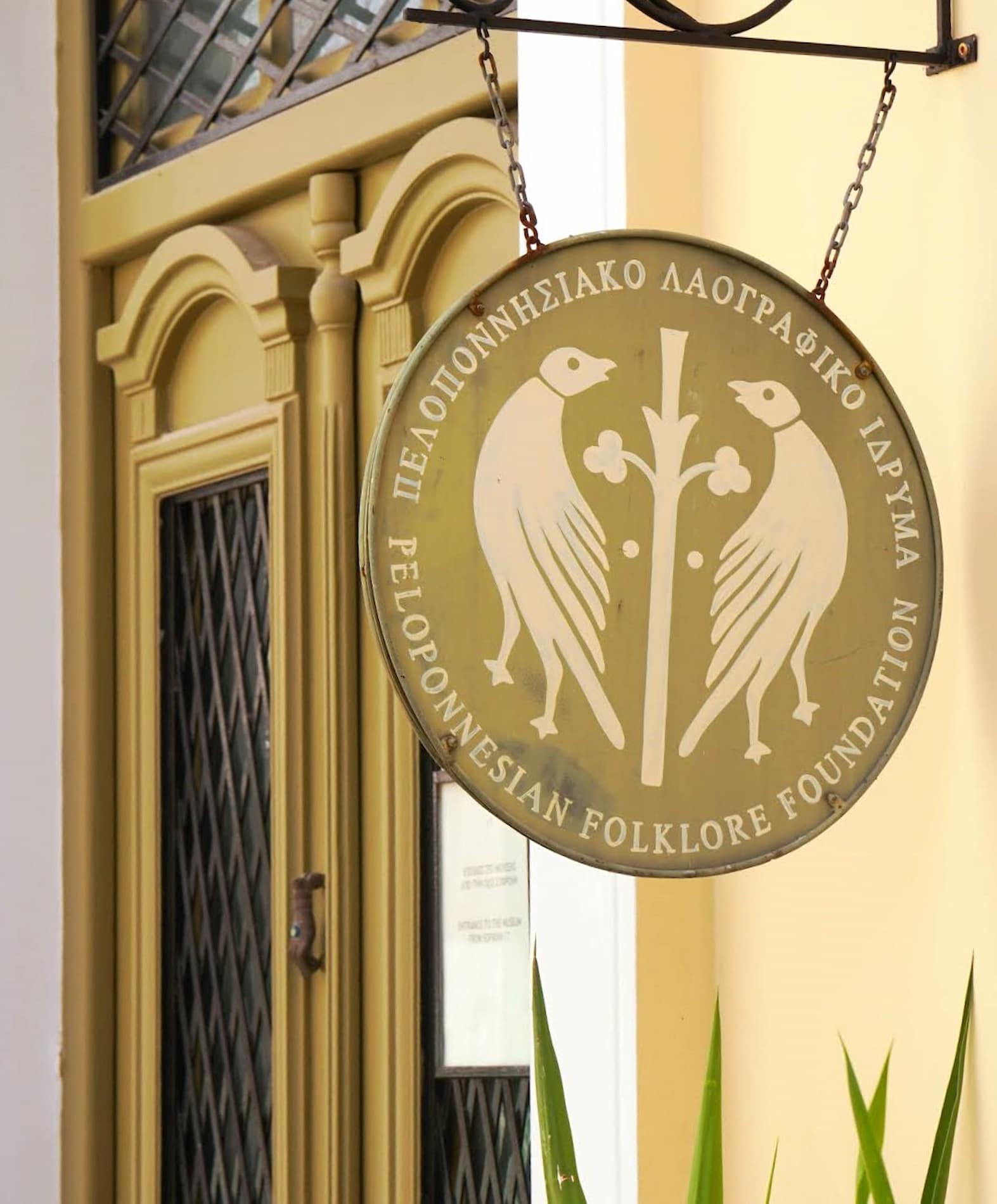
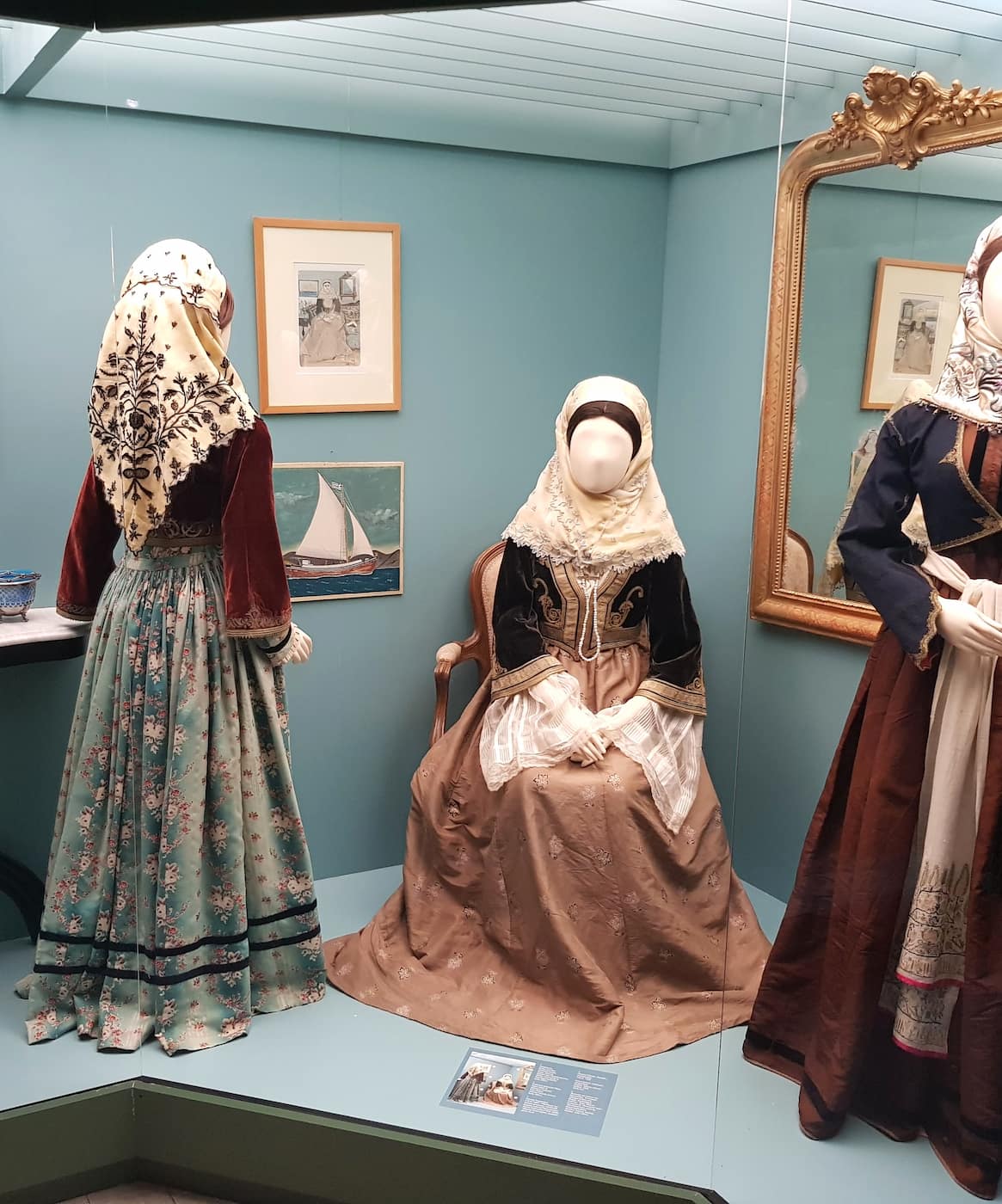
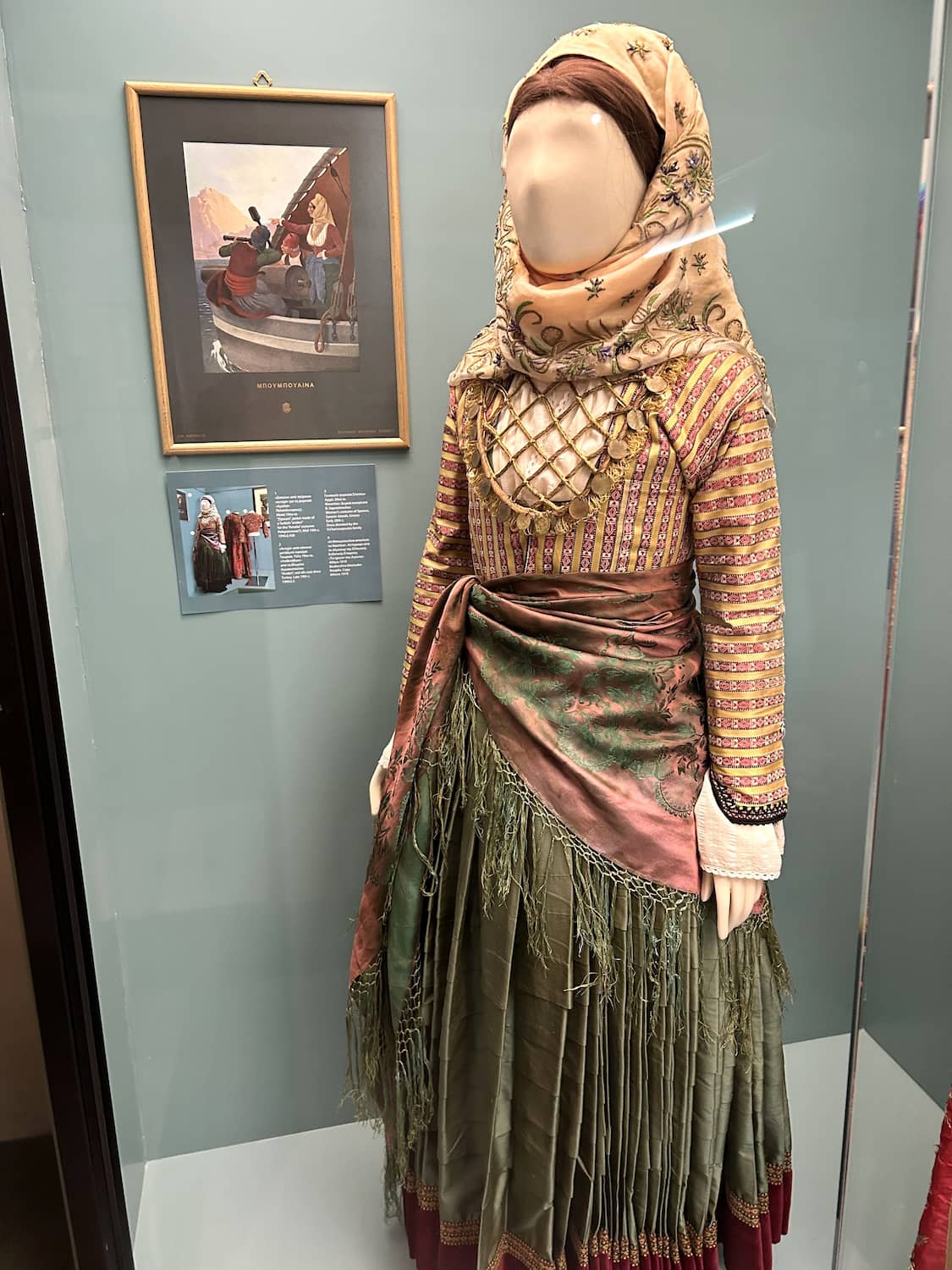
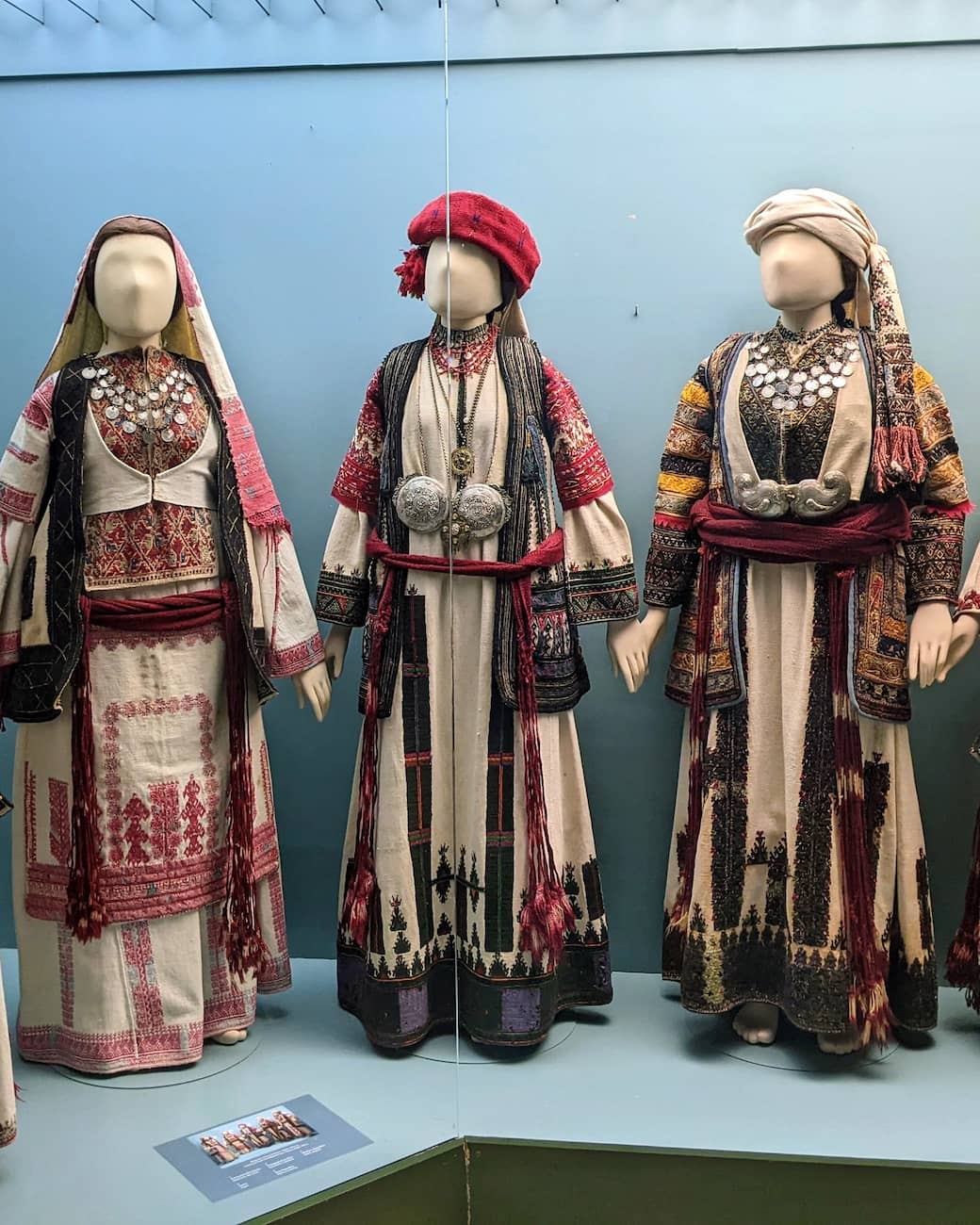
Living history. What makes this museum special is how it brings traditions to life. During my visit, an elderly woman demonstrated traditional weaving techniques on an antique loom – creating patterns passed down through generations.
Hidden courtyard. The museum’s interior courtyard offers a peaceful retreat from Nafplio’s busy streets. I enjoyed a complimentary Greek coffee here while browsing handmade items in their small shop supporting local artisans.
Visitor information. Located on Vas. Alexandrou Street, the museum charges a modest €5 entrance fee. It’s open Tuesday through Sunday, 10:00-14:00 and 18:00-20:00 during summer months, with reduced hours in winter.
Highlights of the Papantoniou Foundation Museum:
- The bridal costume collection from different regions
- Reconstructed traditional Greek household rooms
- Ancient weaving looms with demonstrations
- Agricultural tools showing pre-industrial farming
- Seasonal folk art exhibits and workshops
| Attraction | Entry Fee | Location |
|---|---|---|
| Palamidi Fortress | €8 summer, €4 winter (free for EU citizens under 25) | Perched 215m above town |
| Bourtzi Fortress | €7 entrance€5 boat ride (round-trip) | Small islet in Nafplio harbor |
| Akronafplia Fortress | Free | Rocky peninsula above Old Town |
| Arvanitia Promenade | Free | Connects harbor to Arvanitia Beach |
| Archaeological Museum | €6 (free first Sunday Nov-Mar) | Syntagma Square |
| Tiryns Archaeological Site | €8 (€4 reduced)€20 combo ticket with other sites | 4km from Nafplio center |
| Karathona Beach | Free | 3km from Nafplio’s center |
| Basil Papantoniou Museum | €5 | Vas. Alexandrou Street, Old Town |
Things to Do in Nafplio with Kids
1. Fougaro Art Center
Creative wonderland. Located in a beautifully renovated tomato factory just outside Nafplio, Fougaro Cultural Center became our family’s unexpected highlight. My children were instantly captivated by the colorful art installations and interactive spaces designed specifically for young creators.
Workshop magic. We joined a Saturday morning pottery workshop (€15 per child) where my kids shaped and painted clay komboloi beads. The center offers different activities each day – from comic book creation to Greek mythology storytelling sessions that bring ancient stories to life.
Library haven. The children’s library section provided a welcome respite during the afternoon heat. My youngest spent hours flipping through Greek picture books while my older one discovered bilingual novels about Greek myths. The staff kindly translated key passages.
Garden playground. The outdoor sculpture garden doubles as a natural playground where kids can run between art installations. We enjoyed a picnic lunch here beneath olive trees, with the children playing hide-and-seek among contemporary sculptures.
Café break. The on-site café serves kid-friendly options like homemade lemonade (€3.50) and Greek yogurt with honey (€4). Parents will appreciate the excellent coffee and the fact that children can move freely between indoor and outdoor spaces.
Fougaro’s family-friendly offerings:
- Daily creative workshops (€10-20)
- Children’s library with bilingual books
- Outdoor sculpture garden
- Regular puppet theater performances
- Art exhibitions designed for young audiences
2. Kid-Friendly Nafplio Beaches
Karathona’s gentle shore. This became our family’s go-to beach during our stay. The gradual slope into crystal-clear water made it perfect for my cautious 5-year-old, while the deeper sections satisfied my adventurous 10-year-old’s swimming ambitions.
Beach amenities. What makes Karathona ideal for families is the complete package – clean restrooms, outdoor showers, and beachside tavernas serving kid-friendly Greek dishes. We rented two sunbeds and an umbrella for €10, though there’s plenty of free space to set up your own gear.
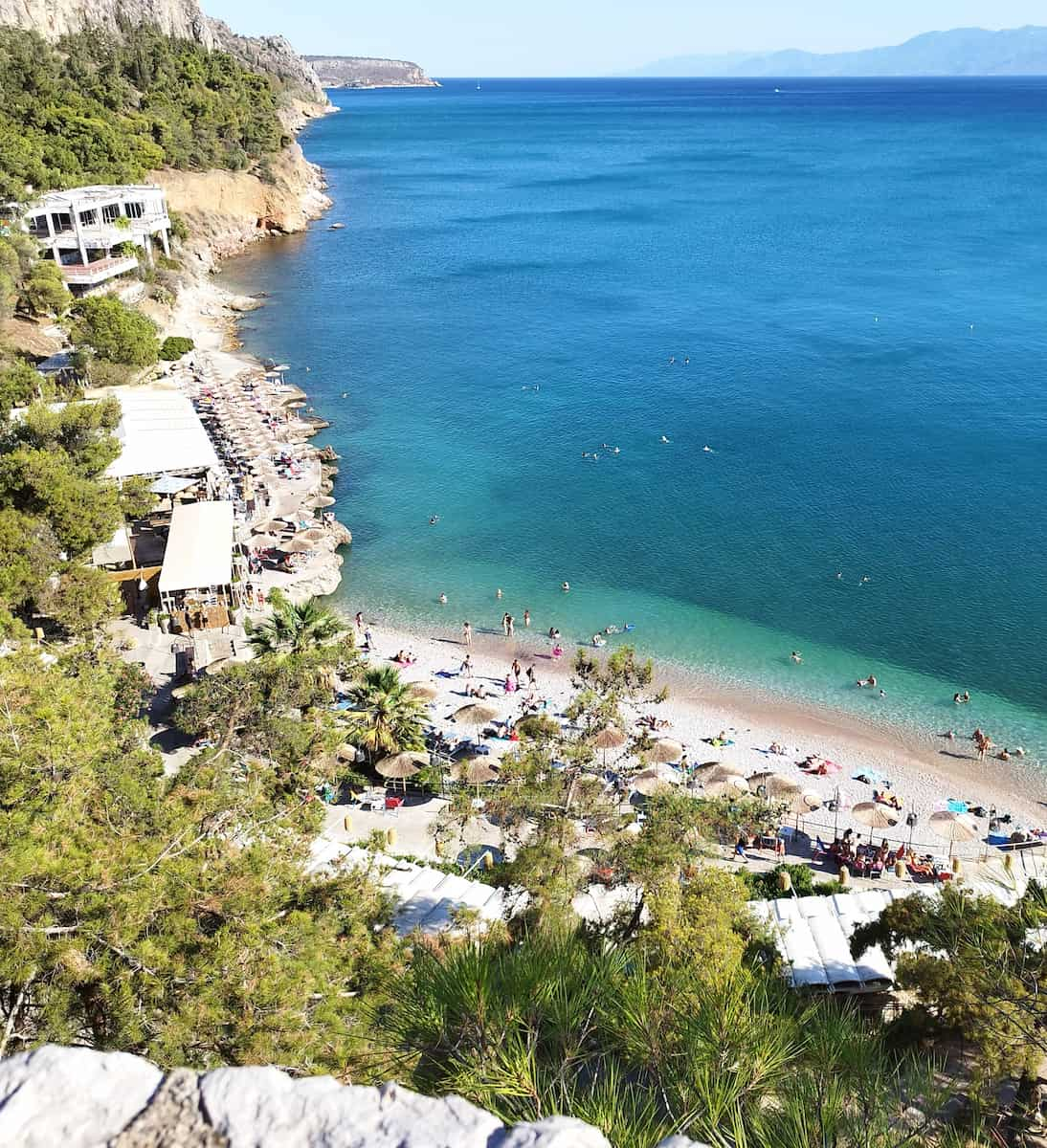
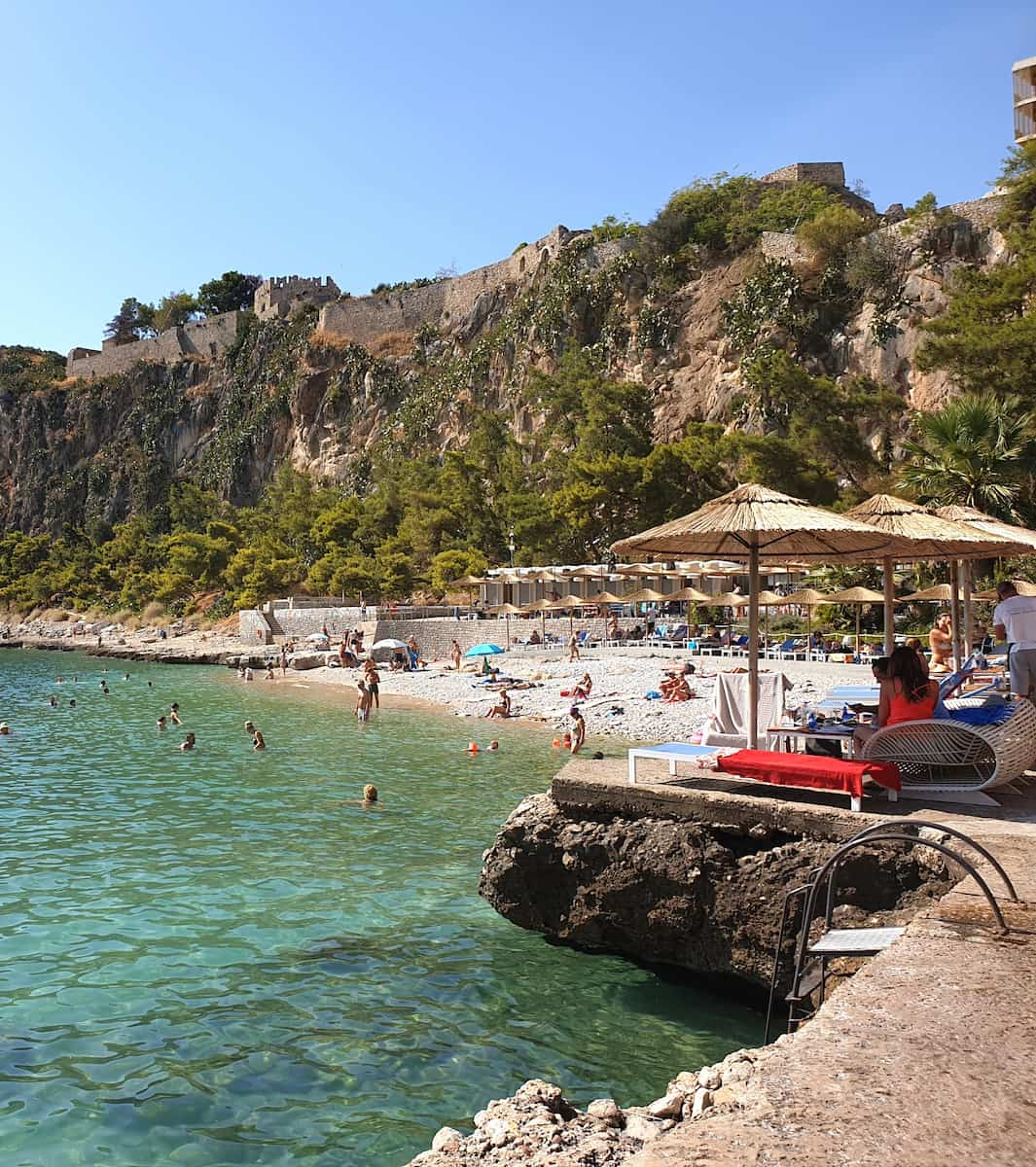

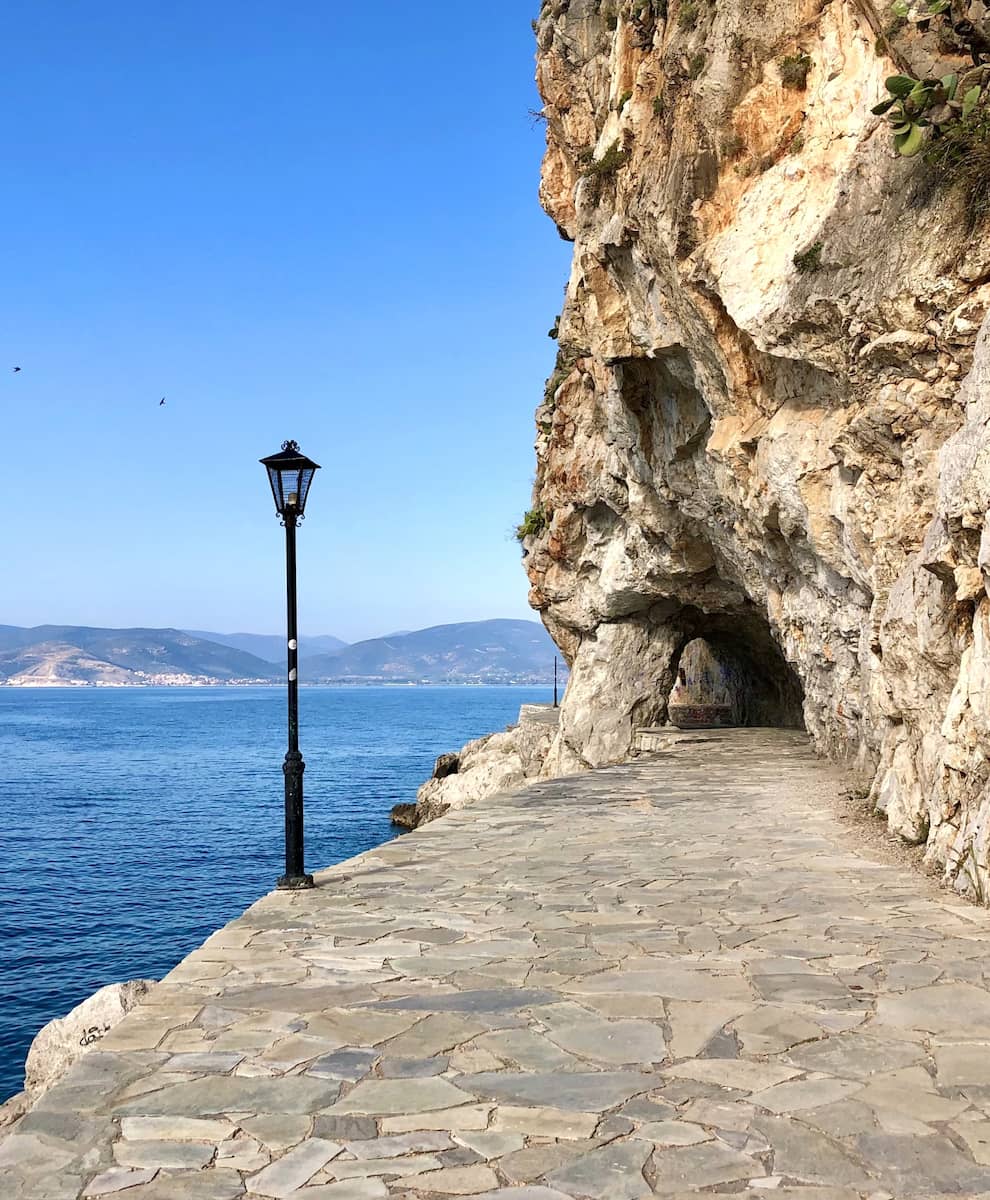
Arvanitia accessibility. Closer to town, Arvanitia Beach offered a convenient option for quick swims. Though smaller and pebbly in parts, its proximity to the promenade made it perfect for combining swimming with sightseeing. My kids loved jumping from the small concrete platforms into the deep blue water.
Hidden gem: Neraki Beach. A local family tipped us off about this small beach just past Karathona. With shallow, calm waters and natural shade from pine trees, it was perfect for our toddler. The beach has no facilities but offers a more authentic experience away from crowds.
Water adventures. At Karathona, we rented a pedal boat with a slide (€20/hour) that became an instant hit. For older children, Plaka Beach offers windsurfing lessons starting at €40 for a beginner session with all equipment included.
Family beach comparison:
- Karathona: Best all-around family beach (amenities, sand quality, shallow water)
- Arvanitia: Most convenient to town (walkable, some facilities)
- Neraki: Most natural setting (no facilities, natural shade)
- Plaka: Best for water sports (windsurfing, paddleboarding)
- Tolo: Largest beach with most activities (15-minute drive from Nafplio)
3. Boat Tour
Harbor adventures. The glass-bottom boat “Nafplio Express” became our children’s favorite morning activity. For €12 per adult and €6 per child, we enjoyed a 45-minute cruise around the harbor with perfect views of Bourtzi Fortress and underwater glimpses of fish and sea urchins.
Bourtzi exploration. The boat trip to Bourtzi Fortress itself was surprisingly kid-friendly. My children were fascinated by the small islet fortress, playing hide-and-seek among the ancient walls and pretending to be castle defenders. The boat ride takes just 5 minutes each way.
Pirate ship experience. For something truly memorable, we splurged on the “Black Rose” pirate ship cruise (€25 adults, €15 children). Complete with pirate-costumed crew, treasure hunts, and swimming stops in hidden coves, it was worth every euro for the excitement on my kids’ faces.
Fishing excursions. My 10-year-old son still talks about our morning fishing trip with Captain Yannis (€40 per person for 3 hours). The patient captain taught proper fishing techniques, and the thrill of catching several small fish made a lasting impression. The boat provides all equipment.
Safety first. All boat operators provide life jackets in children’s sizes. For the glass-bottom boats and Bourtzi trips, no swimming is involved, making them suitable for non-swimmers. The pirate cruises require basic swimming ability for the optional swim stops.
Kid-friendly boat options from Nafplio harbor:
- Glass-bottom boat tours (45 minutes, €12/€6)
- Bourtzi Fortress shuttle (10 minutes, €5 round-trip)
- Pirate ship cruise (3 hours, €25/€15)
- Family fishing trips (3 hours, €40 per person)
- Sunset cruises (1 hour, €15/€8)
⭐ Best Tours
- Sailing Cruise in Nafplio | with Local Treats: Set sail on the beautiful waters of the Argolic Gulf with this relaxing cruise from Nafplio. Enjoy the coastal scenery, swim in crystal-clear waters, and savor local Greek treats onboard.
- Catamaran Cruise in Nafplio | Private: Indulge in the ultimate luxury experience with a private catamaran cruise around Nafplio. Perfect for special occasions or those seeking exclusivity, this tour allows you to customize your sailing experience while enjoying the stunning coastline of the Peloponnese.
4. Peloponnesian Folklore Foundation Museum
Interactive heritage. Unlike many stuffy museums, the Peloponnesian Folklore Foundation actively engages young visitors. My children were given a special treasure hunt worksheet that transformed our visit into an exciting game of finding specific costumes and household items.
Costume fun. The highlight for my daughter was trying on child-sized replicas of traditional Greek costumes. Museum staff helped her dress like a 19th-century village girl, complete with embroidered vest and headscarf – a perfect photo opportunity!
Traditional toys. The collection of handmade wooden toys from different eras fascinated my son. The museum guide demonstrated how children played with simple hoops, tops, and string games long before electronic entertainment. Some replicas are available in the gift shop (€5-15).
Storytelling sessions. We timed our visit to coincide with the Sunday afternoon storytelling hour (included with admission). An animated performer shared Greek folktales using puppets and audience participation, captivating even the youngest visitors despite language differences.
Family workshops. For €8 per child, the museum offers weekend workshops where kids can try traditional crafts like simple weaving, doll-making, or creating Greek Easter decorations. Check their website for the current schedule as themes change monthly.
Child-friendly exhibits at the Folklore Museum in Nafplio:
- Traditional toys and games collection
- Children’s costume display with try-on section
- Kitchen implements with demonstrations
- Puppet theater corner
- Interactive farming tools exhibit
Free Things to Do in Nafplio
1. Old Town Streets
Architectural treasure hunt. I created my own free walking tour through Nafplio’s enchanting streets, spotting architectural details that tell the city’s story – Venetian balconies, Ottoman fountains, and neoclassical doorways adorned with ancient symbols.
Hidden courtyards. Pushing gently on unlatched wooden doors revealed secret worlds – bougainvillea-draped courtyards where elderly residents tended to potted basil and jasmine. Many welcomed me with a smile and sometimes even offered a sweet preserved fruit treat.
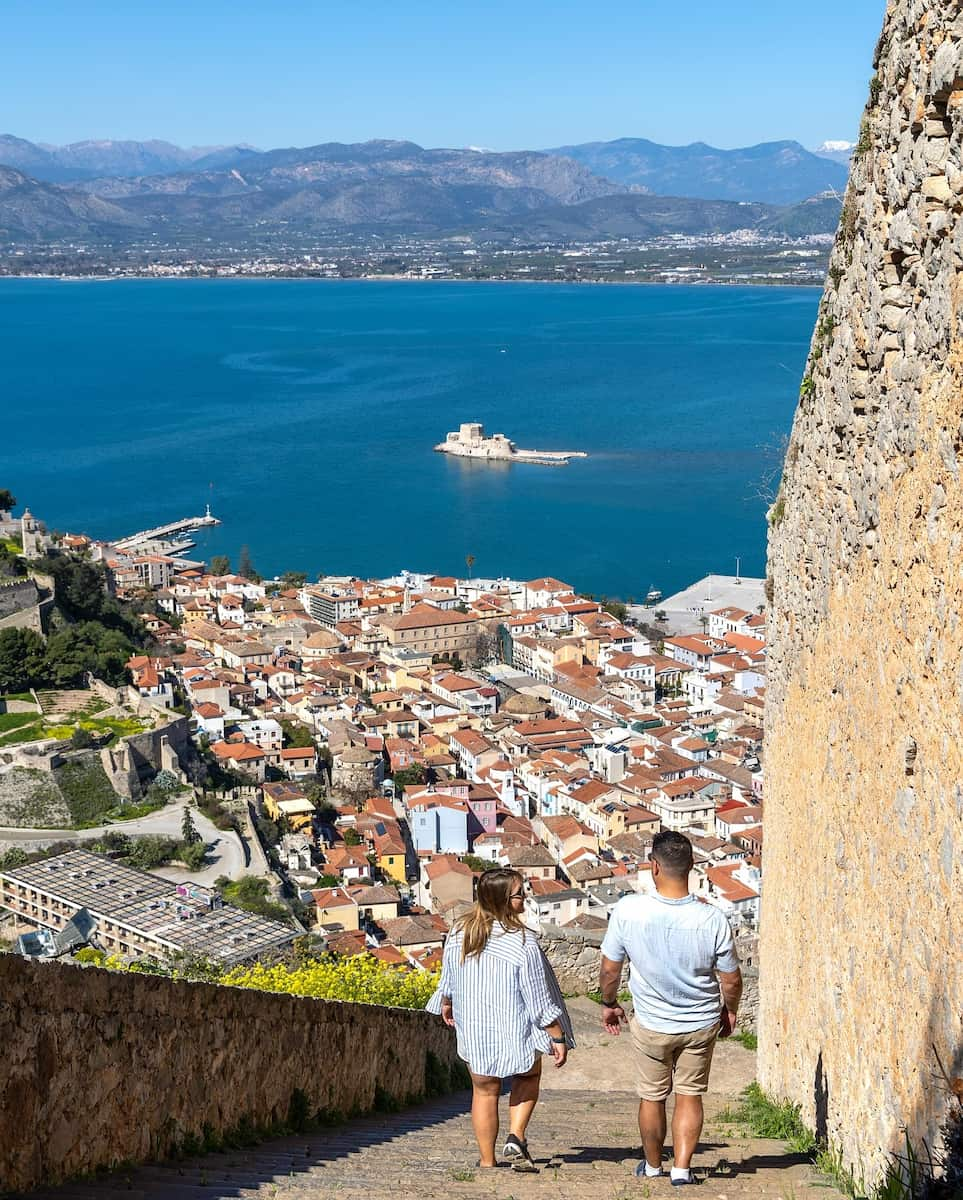
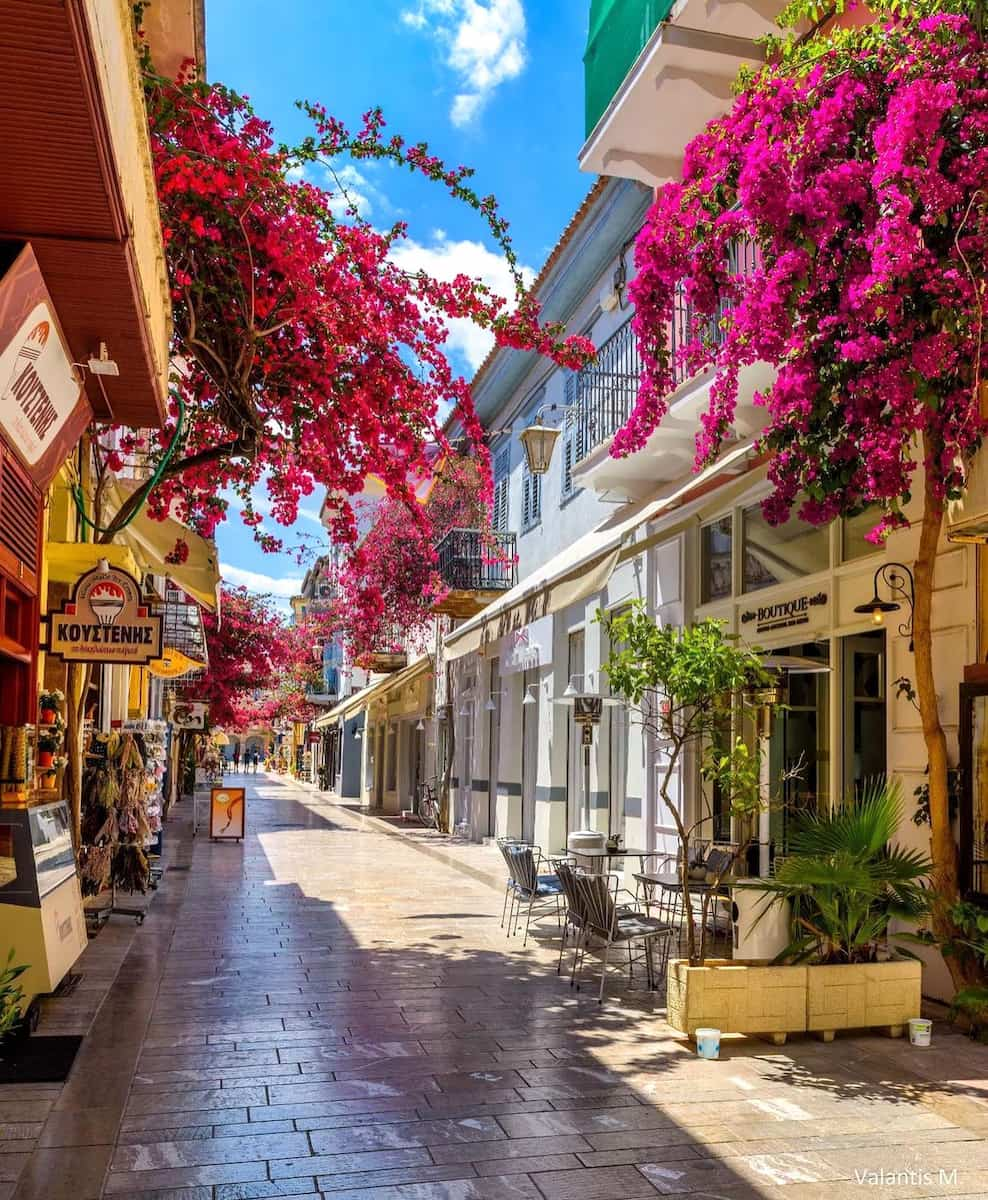
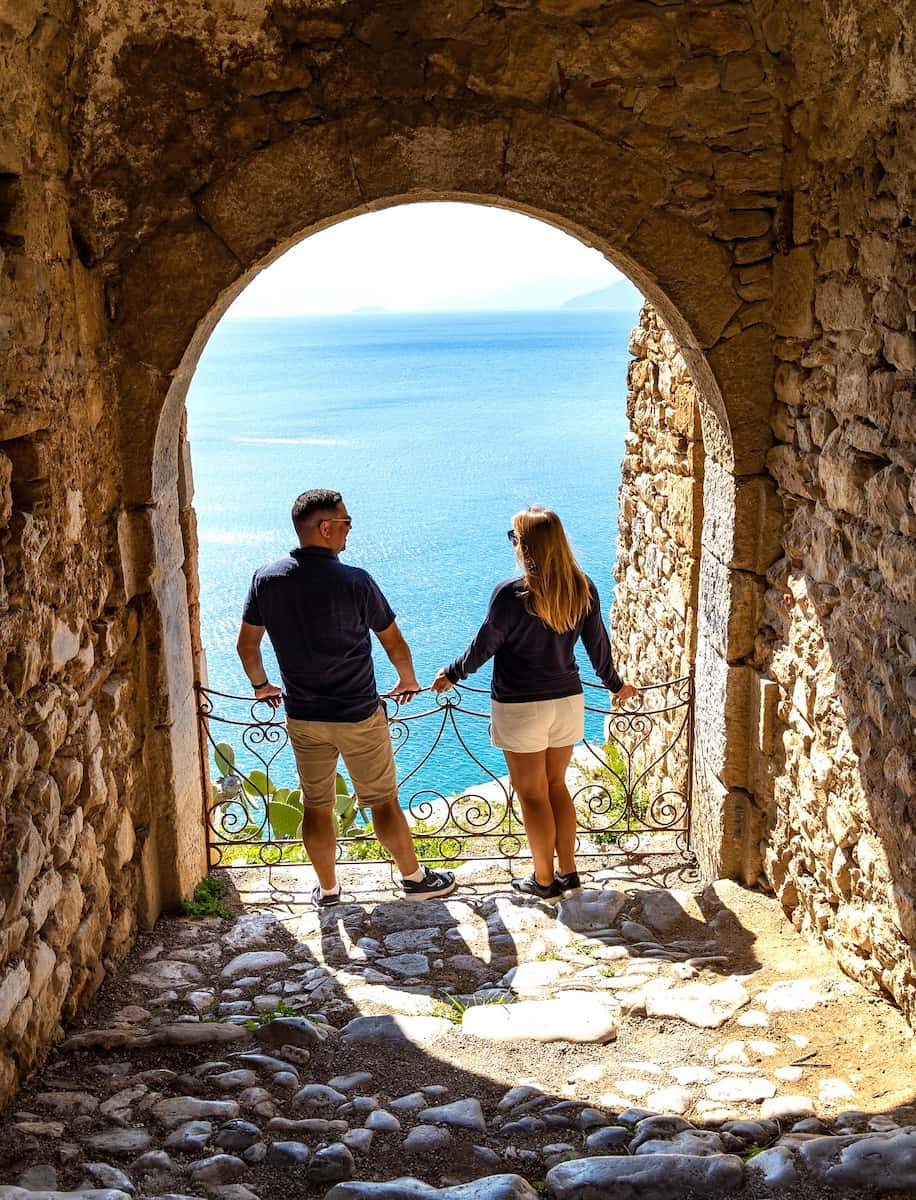
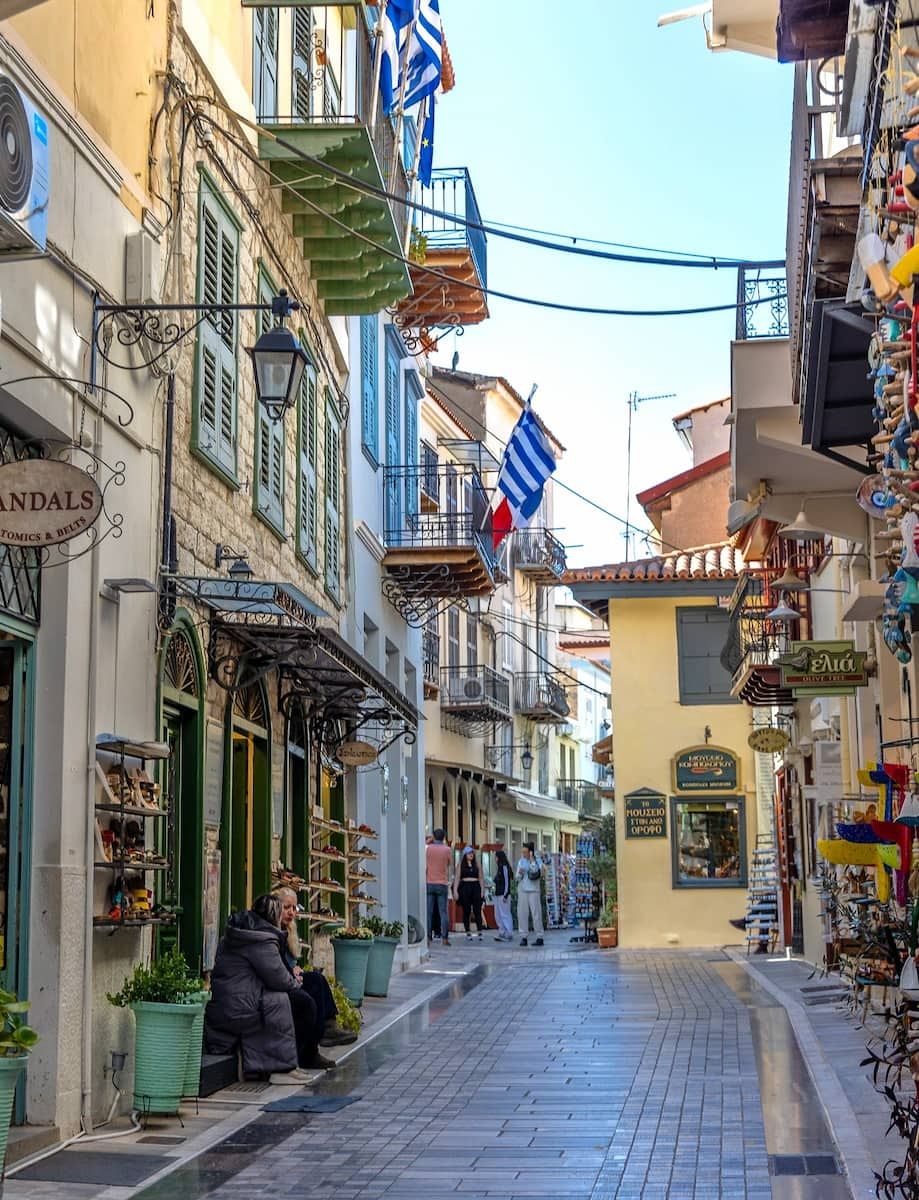
Street art discoveries. Wandering the back streets beyond Syntagma Square, I found surprising contemporary murals juxtaposed against centuries-old walls. The contrast between modern artistic expression and historic architecture created fascinating visual conversations.
Church-hopping. I visited several Orthodox churches that remain open throughout the day. The Church of Agios Spyridonos, where Greece’s first governor was assassinated, features remarkable ceiling frescoes, while the Metropolitan Church houses beautiful icons and marble work.
Photography paradise. Every twisted alleyway offered perfect composition opportunities – laundry fluttering between pastel buildings, cats lounging on ancient steps, and light filtering through narrow passages. My morning walks yielded better photos than any guided tour could provide.
Best streets for wandering in Nafplio:
- Vasileos Konstantinou (main shopping street)
- Staikopoulou Street (most picturesque with cafés)
- Papanikolaou Street (quiet residential charm)
- Farmakopoulon Street (authentic tavernas)
- Amalias Street (waterfront views)
⭐ Best Tours
- Nafplio Food Tour: Tantalize your taste buds with a culinary journey through Nafplio’s food scene. Sample traditional Greek delicacies, learn about local ingredients, and discover the stories behind classic dishes.
- Nafplio: Sun & Sail Cruises Semi-Private Half-Day with Meal: Enjoy a luxurious sailing experience along the picturesque coastline of Nafplio on this half-day cruise.
2. Arvanitia Beach
Public shoreline. While some Greek beaches charge for access or require purchasing food/drinks, Arvanitia Beach remains completely free. I spread my towel on the small pebble shore and enjoyed the same crystal-clear waters as those paying for loungers nearby.
Natural shade spots. Arriving early, I discovered several rocky outcroppings that provide natural shade until midday. These free alternatives to rented umbrellas became my preferred spots, especially the large rock formation at the beach’s eastern end.
Sunset swimming. My favorite free activity became evening swims at Arvanitia. As day-trippers departed around 6:00pm, the beach transformed into a local hangout. The setting sun created golden pathways across the water while locals gathered for end-of-day conversations.
Fresh water shower. Unlike many free beaches, Arvanitia offers a public fresh water shower to rinse off salt water. This simple amenity made it possible to continue sightseeing afterward without returning to my accommodation.
Picnic paradise. I saved money by bringing simple picnics from the local bakery. A spinach pie (€2.50), fresh fruit, and water created perfect beach meals for a fraction of taverna prices. The small park above the beach offers shaded picnic spots with sea views.
Seasonal Activities
Christmas in Nafplio
Festive transformation. During my December visit, Nafplio transformed into a holiday wonderland. The entire Old Town sparkled with tasteful light displays that enhanced rather than overwhelmed the historic architecture. Syntagma Square hosted a towering Christmas tree surrounded by a village of wooden market stalls.
Christmas market magic. From December 15 to January 6, the Christmas market fills Syntagma Square with local artisans selling handcrafted gifts, traditional sweets, and warm beverages. I found unique olive wood ornaments (€5-15) and handwoven textiles that made perfect souvenirs.
Seasonal treats. Winter brings special Greek holiday delicacies to Nafplio’s bakeries and cafés. I sampled melomakarona (honey cookies, €1 each) and kourabiedes (almond shortbread, €1.20 each) from Patisserie Elli on Vasileos Konstantinou Street – their recipes date back generations.
Carol performances. On December evenings, local school children and community choirs perform traditional Greek Christmas carols (kalanda) throughout the Old Town. I caught a moving performance outside St. Spyridon Church where ancient Byzantine melodies echoed off stone walls.
Nafplio Christmas events:
- Christmas Market (December 15-January 6, Syntagma Square)
- Santa’s Workshop (weekends, Trianon Building)
- Christmas Carol Performances (December 23-24, throughout Old Town)
- New Year’s Eve Fireworks (December 31, 00:00, Harbor)
- Epiphany Celebration and Blessing of the Waters (January 6, Harbor)
Summer Festivals and Events
Nafplio Festival. The crown jewel of Nafplio’s cultural calendar, this classical music festival (June 18-25) transforms the city into a performance venue. I attended a magical violin concert held in the courtyard of Palamidi Fortress (tickets €15-40) where music soared against ancient stones under starry skies.
Open-air cinema. From June through September, the historic Trianon theater (a converted Ottoman mosque) operates as an open-air cinema. For just €8, I watched both international and Greek films beneath the stars, with the screen set against the building’s distinctive dome.
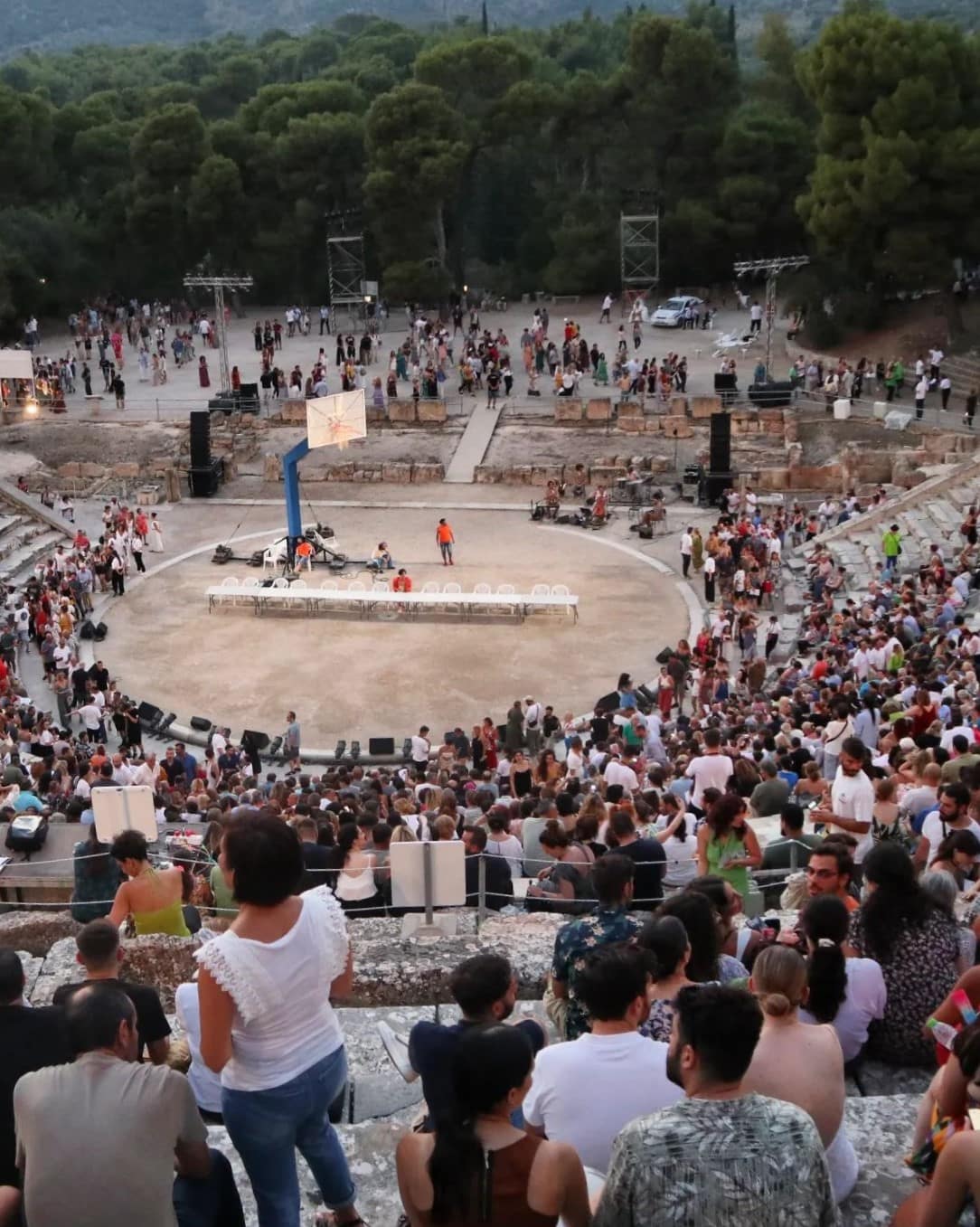
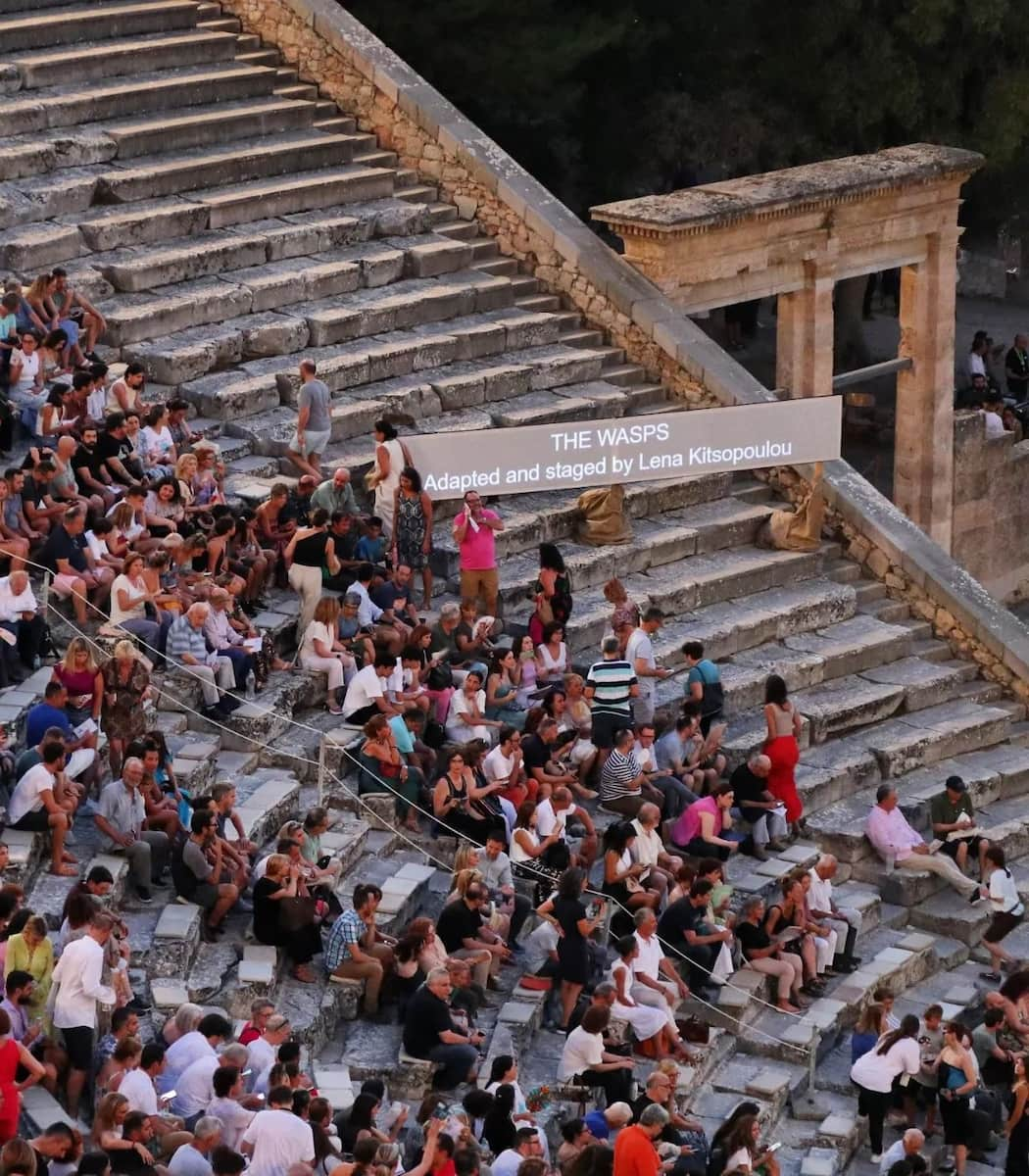
Street performances. Summer evenings bring free street performances to Syntagma Square and the waterfront promenade. I encountered everything from traditional Greek dancers to contemporary acrobats and musicians. The informal shows typically begin around 9:00pm when the day’s heat subsides.
Epidaurus Festival connection. Though not in Nafplio itself, the renowned Epidaurus Festival at the ancient theater (June-August) draws many visitors. Special buses run from Nafplio to evening performances (€25 round-trip including festival entry), returning after the shows.
Naval celebration. The first weekend of July brings Nafplio’s Naval Week celebration, commemorating the city’s maritime heritage. The harbor fills with decorated boats, sailors in traditional dress, and rowing competitions. The event culminates in a spectacular illuminated boat parade on Sunday evening.
Spring Blooms in Royal Parks
Kolokotronis Park awakening. My April visit coincided with Nafplio’s spectacular spring bloom. Kolokotronis Park, named after the Greek revolutionary hero, exploded with wildflowers and flowering trees. The central rose garden peaks in late April with dozens of heritage varieties.
Citrus fragrance. Nafplio’s public gardens feature numerous orange and lemon trees that blossom in March and April. Walking through the park near the Land Gate, I was enveloped in the intoxicating fragrance of citrus blossoms – a sensory experience unique to Mediterranean spring.
Bird-watching opportunities. Spring brings migratory birds to Nafplio’s parks and coastal areas. I spotted several colorful European bee-eaters and hoopoes in the olive groves near Arvanitia Beach. The wetland area just outside town (toward Nea Kios) attracts flamingos and herons.
Easter celebrations. If your spring visit coincides with Greek Orthodox Easter (April 20), you’ll witness Nafplio’s most important cultural celebration. The Good Friday procession winds through flower-decorated streets, while midnight on Easter Saturday brings candlelight, fireworks, and church bells.
Seasonal produce. Spring brings vibrant farmers’ markets (Wednesday and Saturday mornings near the bus station). I filled my bag with strawberries, artichokes, and wild greens (horta) at peak freshness and fraction of supermarket prices. Many restaurants offer special spring menus featuring these seasonal ingredients.
Spring nature experiences in Nafplio:
- Kolokotronis Park Rose Garden (peak bloom: late April)
- Citrus Grove Walking Path (blossoms: March-April)
- Arvanitia Cliff Wildflower Trail (peak: March-May)
- Wetland Bird Watching Area (best: April-May)
- Farmers’ Market Seasonal Produce (Wednesday/Saturday mornings)
Autumn Foliage Walks
Golden landscapes. While not as famous as summer, autumn (October-November) might be Nafplio’s most beautiful season. I discovered the hiking path connecting Nafplio to Ancient Asine transforms with golden light filtering through yellowing plane trees and olive groves.
Harvest activities. Autumn brings olive and grape harvests to the surrounding countryside. Several family farms offer visitor experiences – I joined an olive picking session at Melas Family Farm (€15 including lunch) where I learned traditional harvesting methods and enjoyed a farm-to-table meal.
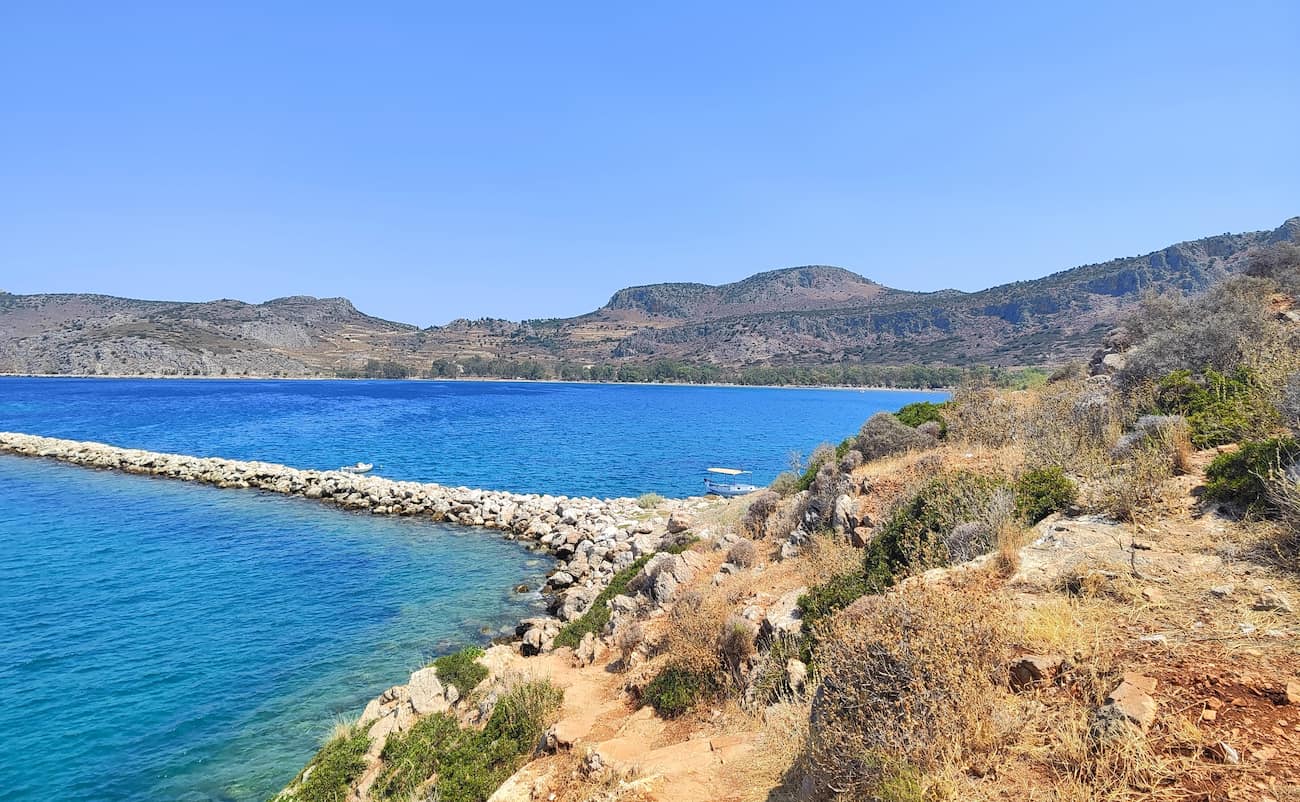
Perfect hiking weather. Fall’s mild temperatures create ideal conditions for exploring longer trails. The well-marked path to Karathona Beach and beyond to Monastery Beach features interpretive signs about local flora and fauna. The complete circuit takes about 3 hours at a leisurely pace.
Mushroom foraging. After autumn rains, the Nafplio Mycological Society leads weekend mushroom hunting excursions in the nearby forests (€10 participation). Even as a complete novice, I learned to identify several edible varieties under expert guidance.
Wine experiences. Autumn is wine season in nearby Nemea. Local tour operators offer half-day trips to wineries during harvest (€45 including transportation and tastings). I visited three family wineries where I observed traditional and modern production methods while sampling the distinctive Agiorgitiko red variety.
Autumn activity recommendations:
- Nafplio to Ancient Asine Coastal Path (5km one-way)
- Karathona Circuit Trail (7km loop)
- Olive Harvest Experiences (October-November)
- Nemea Wine Region Tours (September-October)
- Mycological Society Mushroom Walks (weekends, October-November)
Day Trips from Nafplio
1. Mycenae Archaeological Site
Ancient wonders. My day trip to Mycenae from Nafplio was like stepping into the pages of Homer’s epics. Just a 30-minute drive from town, this UNESCO World Heritage site is one of the best-preserved examples of Bronze Age architecture in Greece. I was awestruck by the massive Lion Gate, its carved feline sentinels still guarding the entrance after 3,000 years.
Cyclopean masonry. Walking along the citadel’s imposing walls, I marveled at the enormous stones fitted so precisely without mortar. Local legend claims only mythical Cyclops could have moved such massive blocks. My advice is to wear sturdy shoes – the uneven ancient pathways demand careful footing.
Agamemnon’s realm. Inside the citadel, I explored the ruins of the great megaron (throne room) where King Agamemnon once held court. The site’s small museum houses incredible artifacts, including delicate gold jewelry and the famous “Mask of Agamemnon” – though experts now doubt it belonged to the legendary king.
Tholos tombs. Don’t miss the beehive-shaped Treasury of Atreus just outside the citadel walls. I was amazed by the engineering feat of its corbelled dome, still standing after millennia. The acoustics inside are incredible – even a whisper echoes dramatically.
Practical tips. Mycenae is open daily, 8:00-20:00 in summer (shorter hours in winter). Entry costs €12 for adults, free for EU students and seniors. Hire a licensed guide at the entrance (around €60 for a 90-minute tour) for fascinating insights into Mycenaean culture and mythology.
⭐ Best Tours
- Half-day Tour in Mycenae and Epidaurus from Nafplio: Maximize your time with this efficient half-day excursion to two UNESCO World Heritage sites from Nafplio. Explore the ancient citadel of Mycenae and the remarkably preserved theater at Epidaurus with an expert guide.
- Nafplion, Mycenae & Epidavros Tour: Combine a visit to picturesque Nafplio with two of Greece’s most important archaeological sites on this comprehensive tour. Explore the ancient citadel of Mycenae with its famous Lion Gate and beehive tombs, then marvel at the perfect acoustics of the ancient theater at Epidaurus.
2. Epidaurus Ancient Theater
Acoustic marvel. The ancient theater of Epidaurus, about an hour’s drive from Nafplio, left me speechless – not just for its beauty but for its extraordinary acoustics. Standing at the center of the orchestra, I dropped a coin and friends seated in the top row heard it clearly. It’s a testament to the architectural genius of the ancient Greeks.
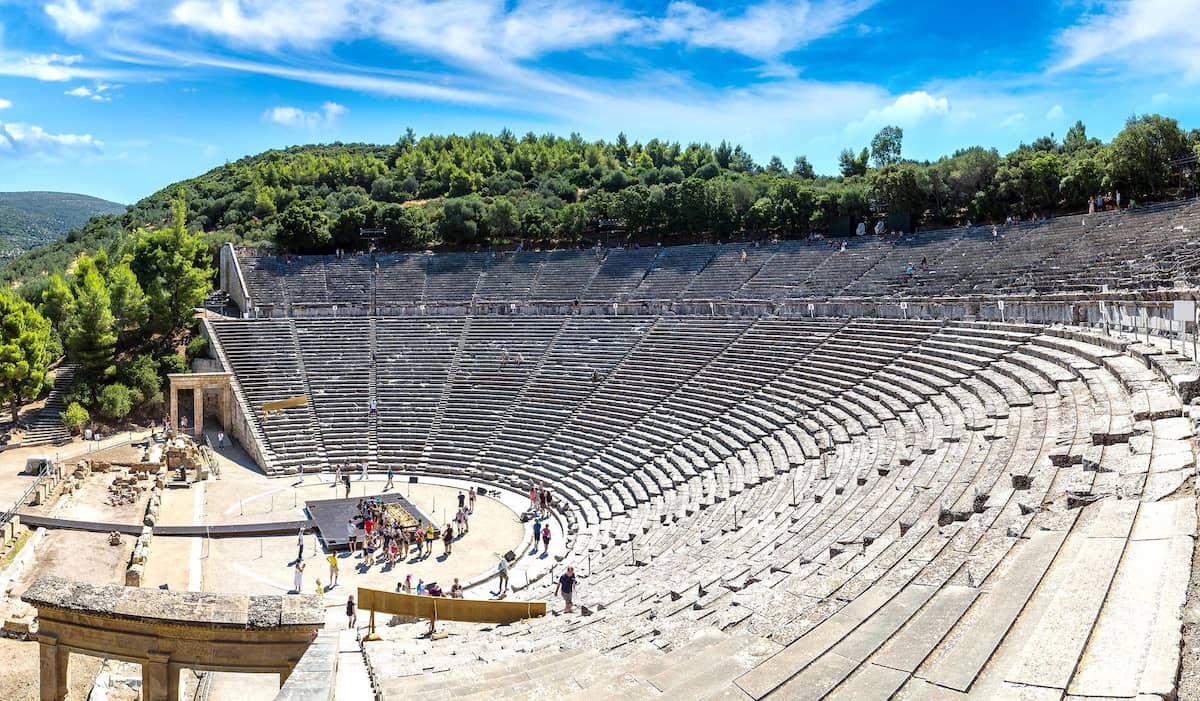
Healing sanctuary. Before exploring the theater, I wandered through the ruins of the Sanctuary of Asklepios, the ancient world’s most famous healing center. The museum houses fascinating medical instruments and votive offerings left by grateful patients. It’s a glimpse into the birth of Western medicine.
Summer performances. If you’re visiting in summer, don’t miss the chance to see a play at the Epidaurus Festival. I watched a Greek tragedy under the stars, an unforgettable experience that transported me back in time. Book tickets well in advance – they sell out quickly.
Nature and history. The site is surrounded by pine-covered hills, offering a serene backdrop to the ancient ruins. I enjoyed a picnic lunch in the shade, imagining the pilgrims who once came here seeking healing and spiritual enlightenment.
Visitor information. Epidaurus is open daily, 8:00-20:00 in summer (shorter hours in winter). Entry costs €12 for adults, free for EU students and seniors. Comfortable shoes and sun protection are essential – there’s limited shade at the site.
⭐ Best Tours
- From Nafplion: Mycenae, Corinth Canal and Epidavros Day Tour: Use Nafplio as your base for this comprehensive day trip to three of the Peloponnese’s most impressive sites. Marvel at the engineering feat of the Corinth Canal, explore the ancient citadel of Mycenae, and experience the perfect acoustics of the Epidaurus theater.
- 4-Day Tour of Mycenae, Epidaurus, Olympia, Delphi & Meteora: Embark on an epic journey through Greece’s most important historical sites with this comprehensive 4-day tour. Starting from Athens, you’ll visit Nafplio, Mycenae, Epidaurus, Olympia, Delphi, and the breathtaking monasteries of Meteora.
3. Ancient Corinth & Acrocorinth Fortress
Strategic location. My day trip to Ancient Corinth, about an hour from Nafplion, began with a stop at the impressive Corinth Canal. This narrow waterway, cut through solid rock, is a testament to 19th-century engineering. The ancient city’s strategic position made it a major player in Greek and Roman history.
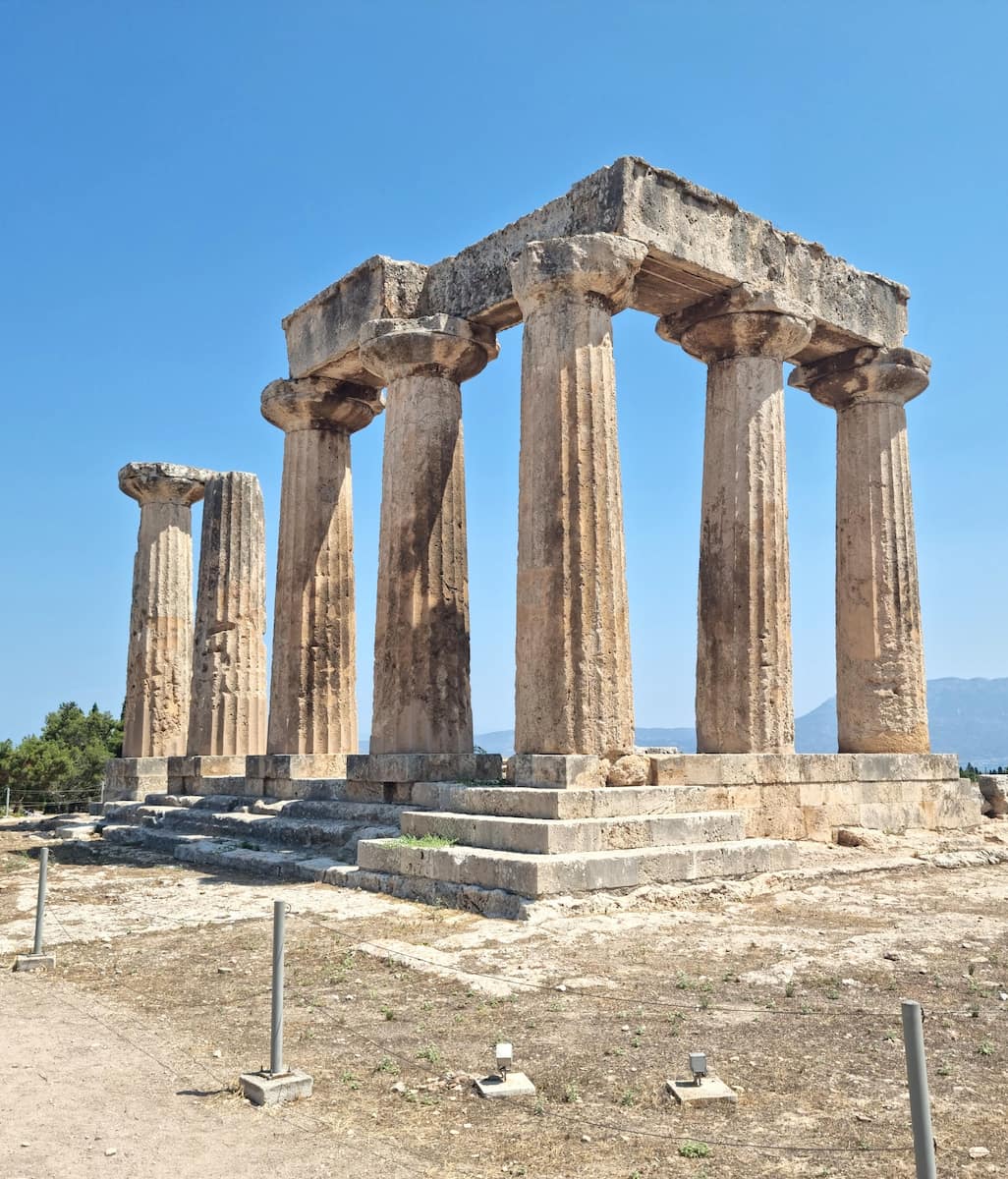
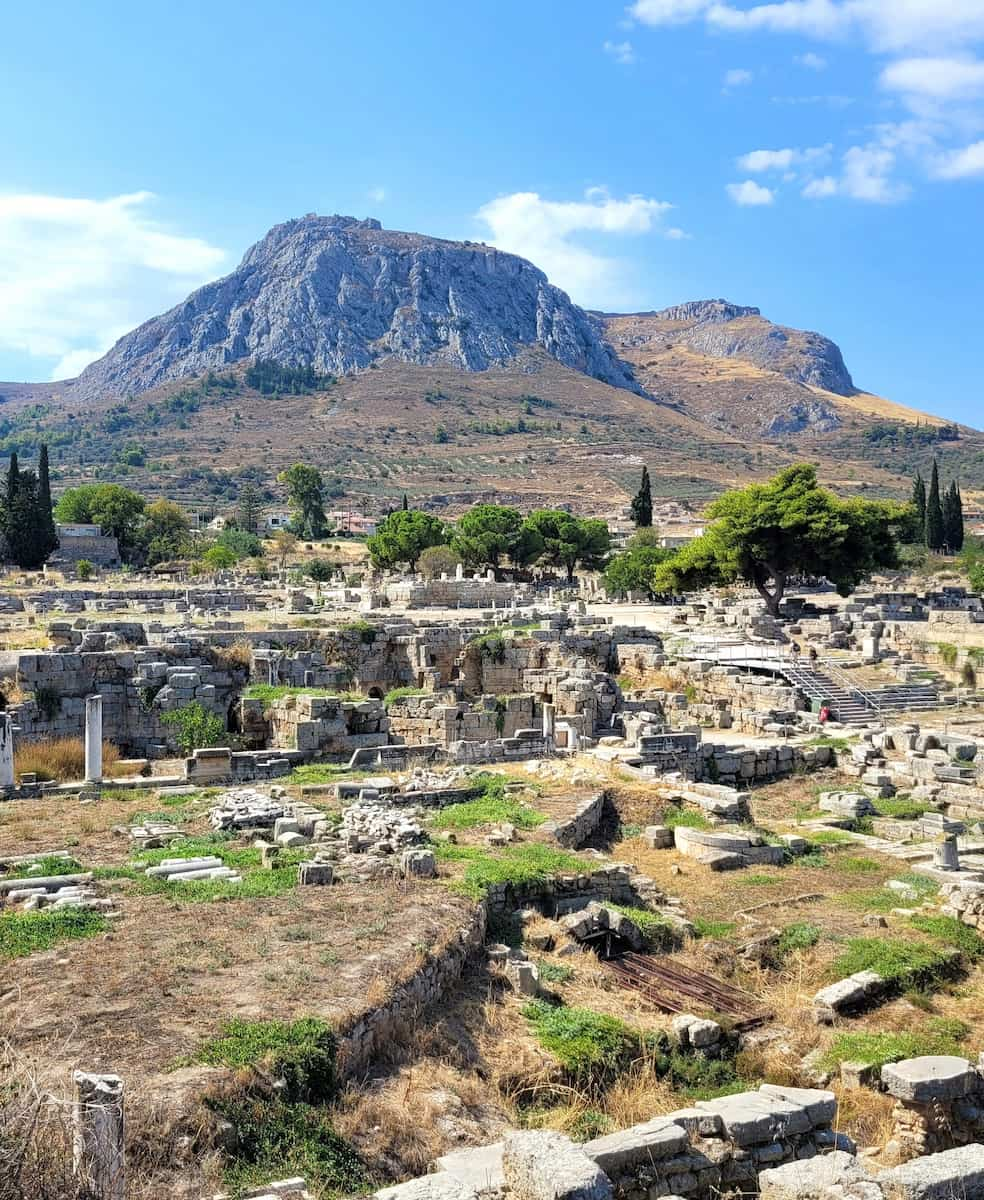
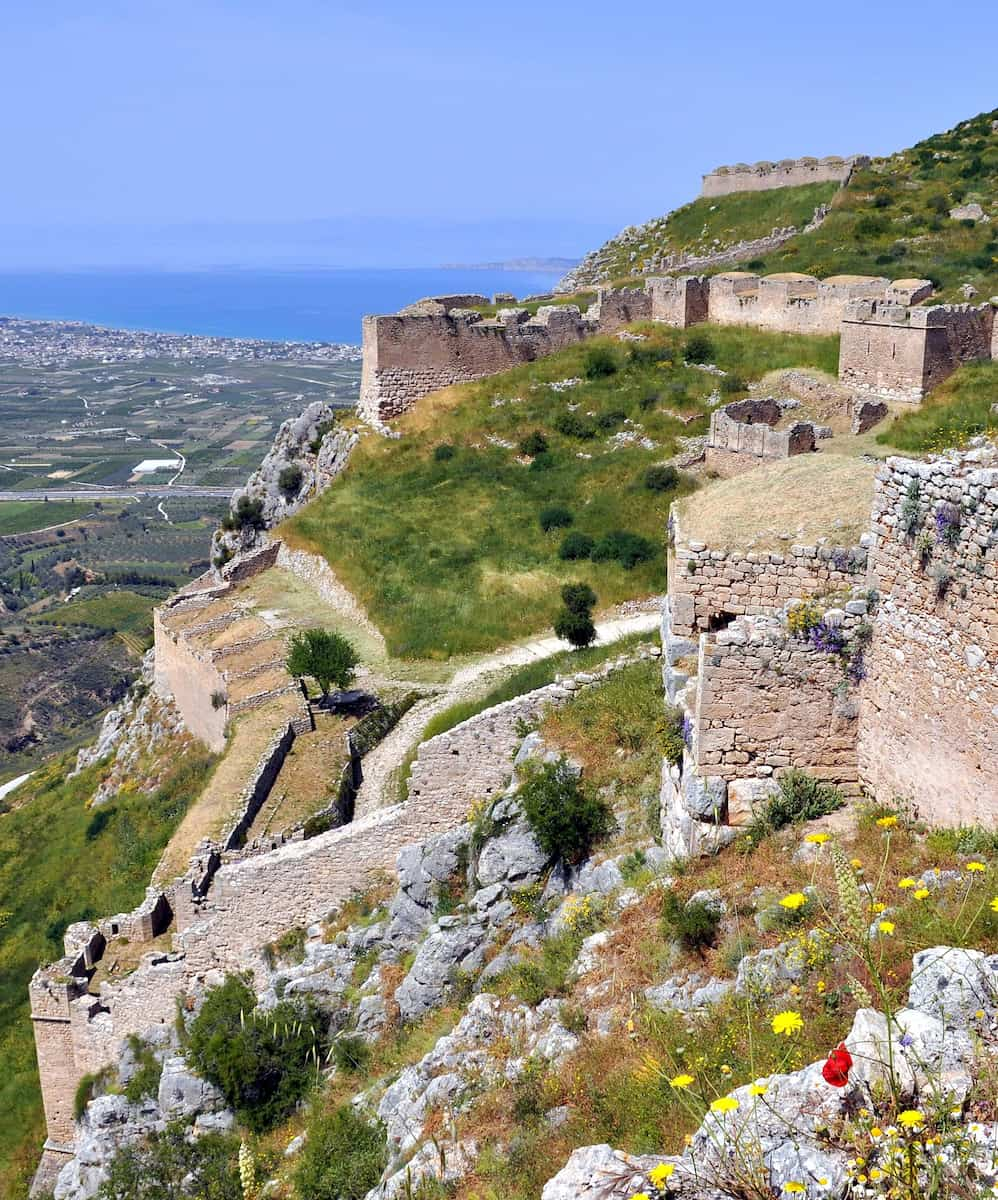
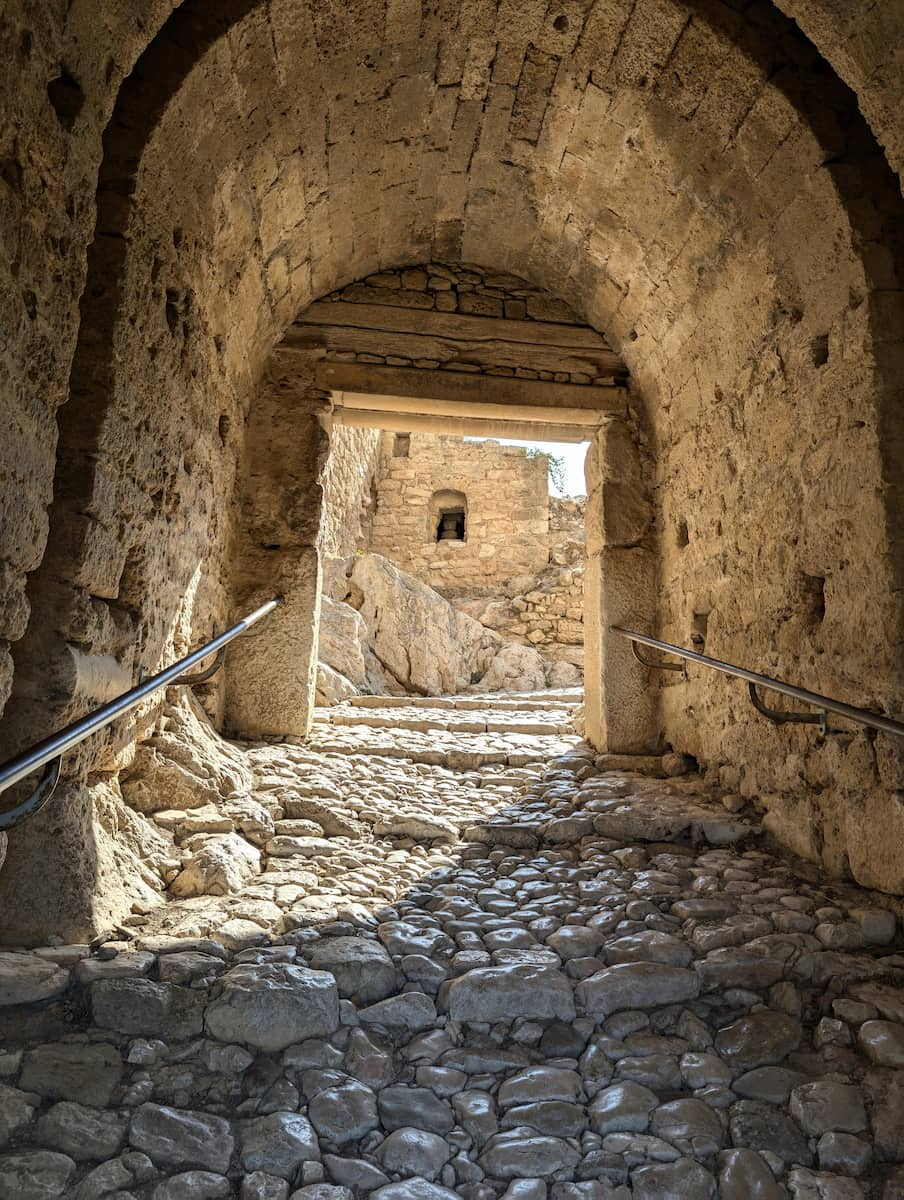
Roman ruins. Exploring the extensive ruins of Ancient Corinth, I was struck by how well-preserved the Roman-era structures are. The Temple of Apollo dominates the site, its weathered columns a stark reminder of the city’s former glory. Don’t miss the ancient agora (marketplace) where St. Paul once preached to the Corinthians.
Acrocorinth adventure. The real highlight was climbing Acrocorinth, the massive fortress looming above the ancient city. It’s a steep hike to the top, but the panoramic views of the Peloponnese are worth every step. I explored crumbling towers, ancient cisterns, and the ruins of temples spanning Greek, Roman, Byzantine, and Ottoman periods.
Local flavors. After working up an appetite exploring, I savored a traditional Greek lunch in the modern town of Corinth. My favorite dish was a local specialty called ‘sofrito’ – tender veal in a white wine and garlic sauce.
Planning your visit. Ancient Corinth is open daily, 8:00-20:00 in summer (shorter hours in winter). Entry costs €8 for adults, free for EU students and seniors. Acrocorinth is free to enter. Wear sturdy shoes and bring plenty of water, especially if you plan to climb the fortress.
| Destination | Distance from Nafplio | Entry Fee | Main Attractions |
|---|---|---|---|
| Mycenae | 24 km | €12 | Lion Gate, Cyclopean Walls, Treasury of Atreus |
| Epidaurus | 60 km | €12 | Ancient Theater, Sanctuary of Asklepios |
| Ancient Corinth | 80 km | €8 | Temple of Apollo, Acrocorinth Fortress, Corinth Canal |
⭐ Best Activities
-
Ancient Corinth Private Tour from Corinth – Discover the fascinating ruins of Ancient Corinth on a private guided tour, exploring the Temple of Apollo, the ancient agora, and the Acrocorinth fortress with expert insights into Greek history and mythology.
FAQ
Is Nafplio, Greece worth a visit?
Yes, Nafplio is absolutely worth visiting. As the first capital of modern Greece, it offers stunning architecture, rich history, charming old town streets, and breathtaking views. It’s a romantic destination with plenty of attractions, museums, and nearby beaches.
What food is Nafplio known for?
Nafplio is famous for traditional Greek dishes like moussaka, souvlaki, and tzatziki. Seafood lovers will enjoy fresh options like grilled octopus and shrimp saganaki. Local specialties also include spanakopita (spinach pie) and dolmades (stuffed grape leaves).
How far is Nafplio from Athens?
Nafplio is approximately 137 km (85 miles) from Athens. It takes about 2 hours to get there by car or bus via the Corinth Canal route.
How many days are enough for Nafplio?
Two to three days are ideal to explore Nafplio’s major attractions like Palamidi Fortress, Bourtzi Fortress, and the old town. You can also enjoy nearby beaches and take day trips to sites like Mycenae or Epidaurus.
